BE THE FIRST TO KNOW
Subscribe to the Jo Geier - MINT & RARE Newsletter to receive timely updates from your favorite products.
JavaScript seems to be disabled in your browser. For the best experience on our site, be sure to turn on Javascript in your browser.
- AUD - Australian Dollar
- GBP - British Pound
- CAD - Canadian Dollar
- HKD - Hong Kong Dollar
- JPY - Japanese Yen
- USD - US Dollar
- Compare ( )
- Create an Account

CONTACT US +43 1 890 4003 [email protected]

The Different Leica M6 Variations - Jo Geier
August 14, 2021 Jo Geier
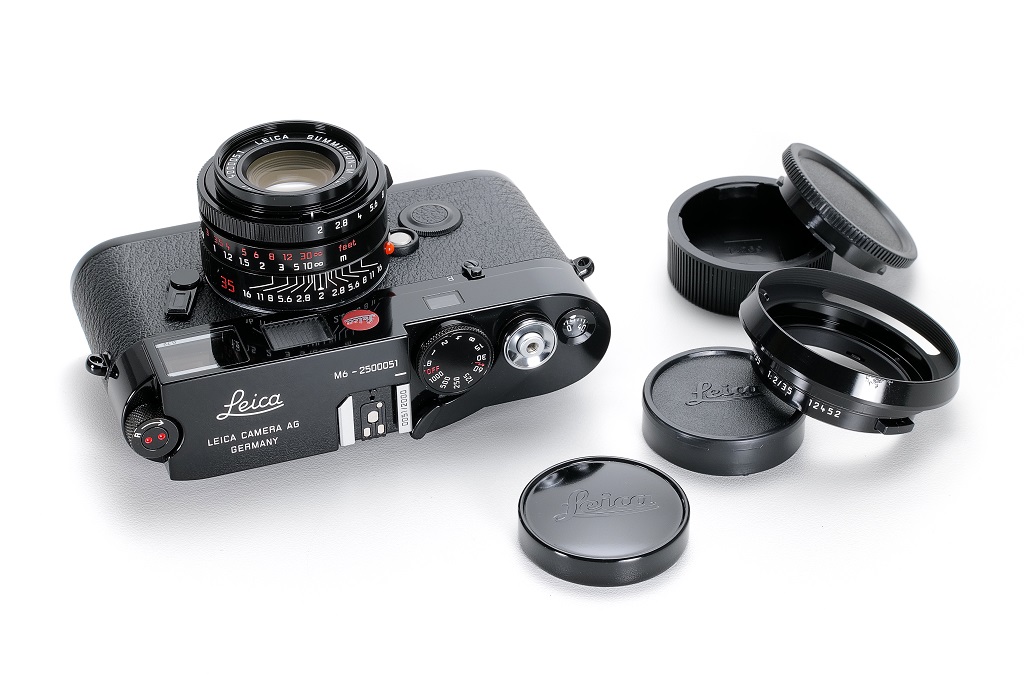
Since there are so many different models of one of the most popular Leica camera, we thought we could shed some light into this and list all variations known to us until today.
May it will help you to choose the M6 you are looking for.
1981 – M6 Electronic - Prototype
Prototype of the later fully mechanical serial production Leica M6. Fully electronic Seiko shutter which was already used in the R4, TTL-metering and automatic exposure control (as in the later M7).
1983 – M6 Prototype
Early prototype with the serial number of an M4-P. Red dot with flat Leitz lettering, different window gluing. The shutter speed dial in a different design, DIN/ASA dial with different lettering, no MADE IN GERMANY embossing on the body covering. We are aware of two M6 prototypes. One with serial number 1621532 from the former Leitz factory museum (inventory number 2308), and one with serial number 1621534.
1984 – The WETZLAR M6
The first version. Starting at serial number 1657251. Without plastic above the strap lugs to protect the body from scratches of the strap. ERNST LEITZ WETZLAR GMBH engraved on top of the topplate. Red dot on front of topplate marked „Leitz“.
Product Code: 10404 Black Body 0.72
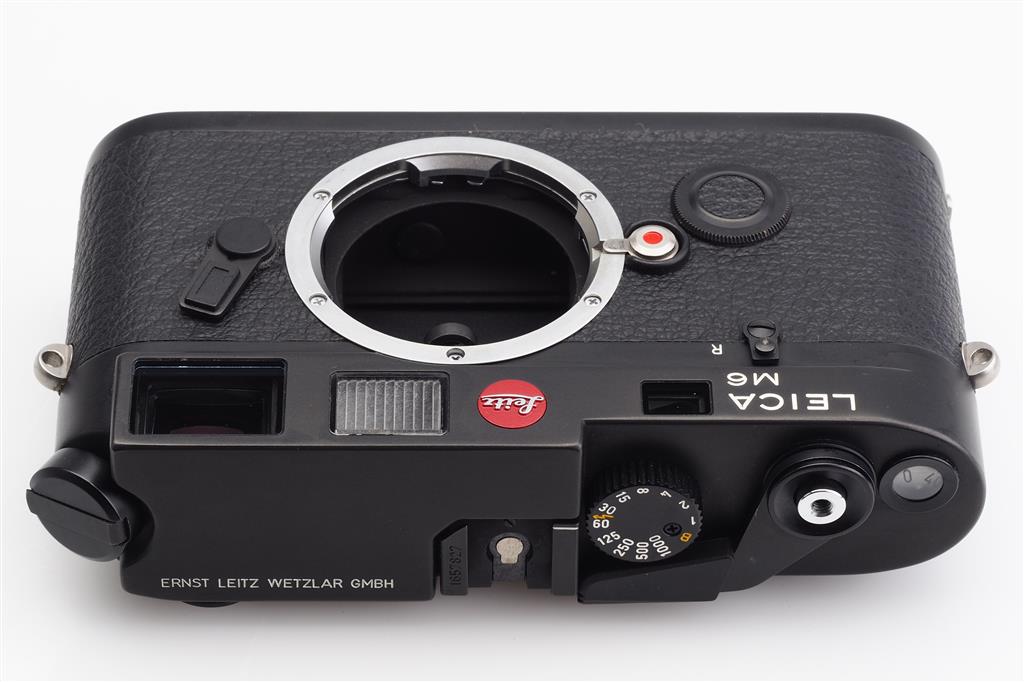
1986 – From now on with plastic inserts above the strap lugs to protect the body from scratches of a strap and finally also available in silver chrome.
Product Code: 10414 Chrome Body 0.72
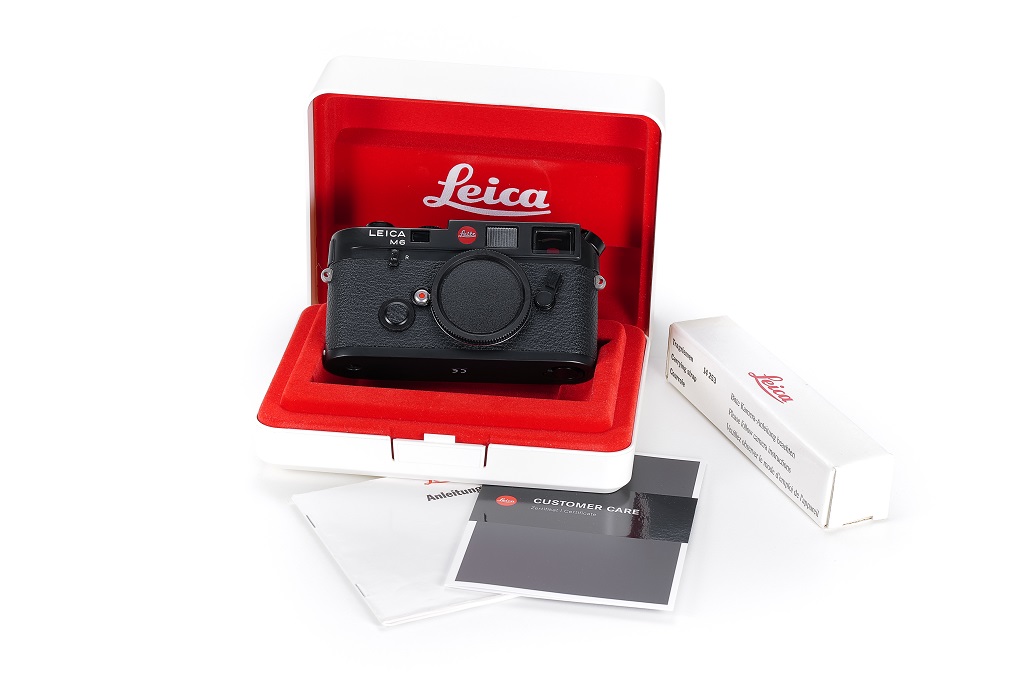
© Wetzlar Camera Auctions
1987 – M6 „BIG“ Logo
On some cameras the front of the top plate is only engraved with larger M6 lettering and without the name Leica. Technically identical to the regular production model.
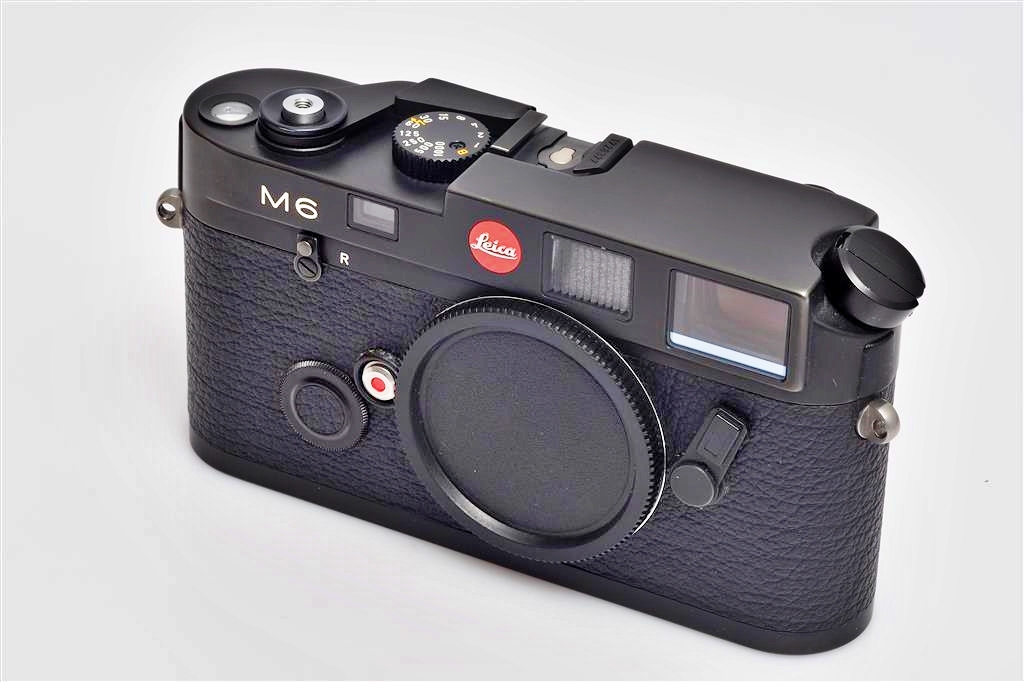
1987 – M6 G
Around 100 cameras in black, chrome and titanium finish made for a Swiss dealer. The Leitz logo in gold. The topplate engraved with the logo – the cross-section diagram of the 50mm Elmar.
1988 – M6 LHSA 20 th Anniversary
Only 43 cameras have been ordered by the LHSA, each with LHSA logo and 1968 1988 engraving.
1988 – The SOLMS M6
LEICA GMBH GERMANY engraved on the back and LEICA M6 on front of the topplate. Red dot on front of topplate marked „Leica“.
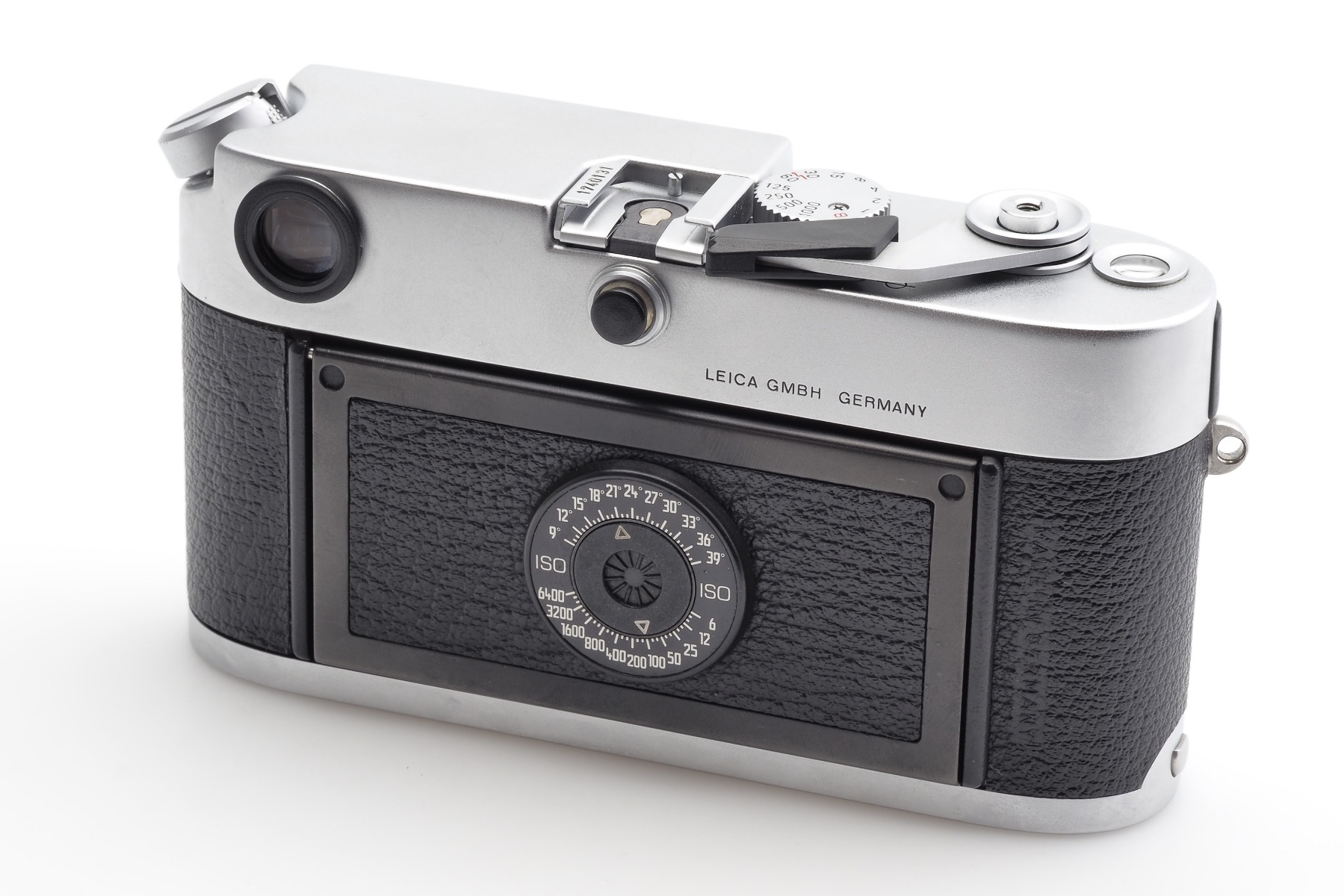
1989 – M6 Platin / Platinum – 150 Years of Photography – 75 Years of Leica Photography
1250 made, each with a letter of the word LEICA and a serial number from the series 1-250. With Summilux-M 1.4/50mm.
Product Code: 10450
1990 – M6 Siber Hegner
125 cameras made for the distributor in Japan, silver chromed cameras with a special emblem on topplate.
1990 – 1993 The „PANDA" M6
The silver chrome M6 is equipped with black winding lever and shutter release guard, shutter speed dial, rewind lever, rewind crank and knob and frame selector.
Product Code: Same as regular production version.
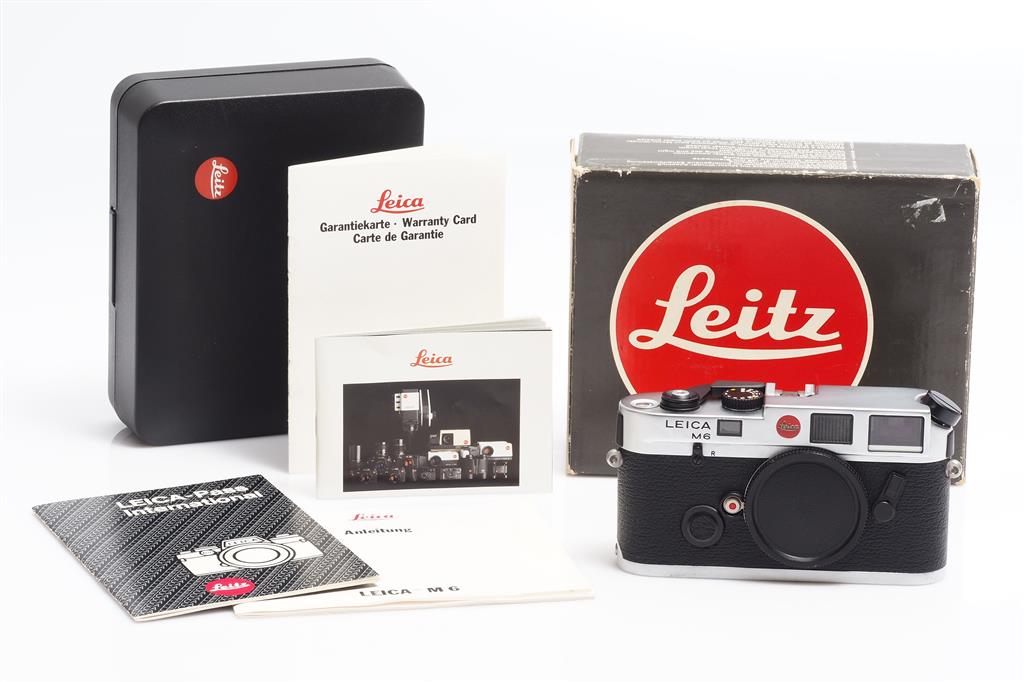
1992 – M6 Colombo or M6 Columbus
Issued by the Italian agent Polyphoto to commemorate the 500 th anniversary of the discovery of America. Engraved 1492-1992. With chrome Summicron-M 2/50mm. 200 cameras have been produced.
Regular Product Codes: 10414 Body, 11825 Lens
1992 – M6 Year of the Rooster
Issued by the Schmidt Group, the far east Leica agents. With chrome Summicron-M 2/50mm. 300 pieces made. Some say 267 pieces.
1992 – M6 Gold Sultan of Brunei
With matching gold Summilux-M 1.4/50mm in wooden presentation box. 353 cameras made with serial number HB 001 – 353.
Product Code: 10412 Set
1992 – 1998 M6 Titan / Titanium
The topplate is made from brass instead of the usual zinc casting.
Product Code: 10412 Titanium Body 0.72
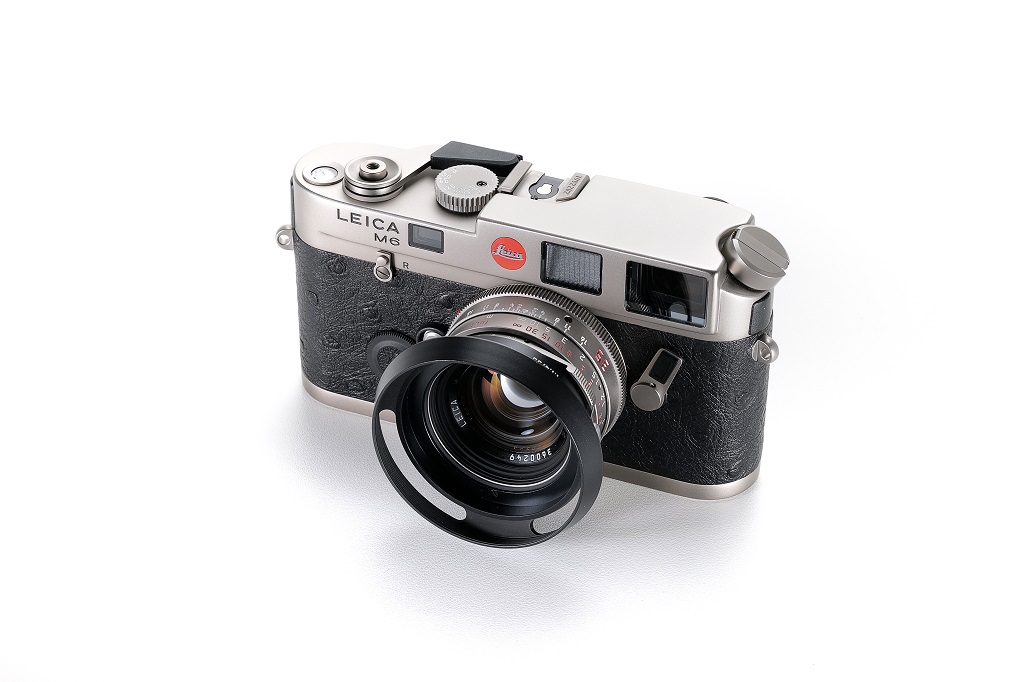
1993 – M6 LHSA 25 th Anniversary
Silver chrome M6, Limited Edition of 151 cameras, comes in a set with chrome Summicron-M 2/35mm, 2/50mm and 2/90mm lenses in a wooden box.
Product Code: 10414 (no special product code)
1993 – M6 Royal Foto
Commissioned to the Austrian Royal Foto company for their 25 th anniversary. Black and chrome finish with red covering. 101 pieces made. A special chrome Summicron-M 2/35mm was available and engraved as well. Other lenses with special engravings maybe as well.
Product Code: 10404 Black body (no special product code)
Product Code: 10414 Chrome body (no special product code)
1994 – M6 Schnittmodell / Cut-Away
Produced in very small numbers with advertising material product code 942005. Available in black and also chrome which is more rare.
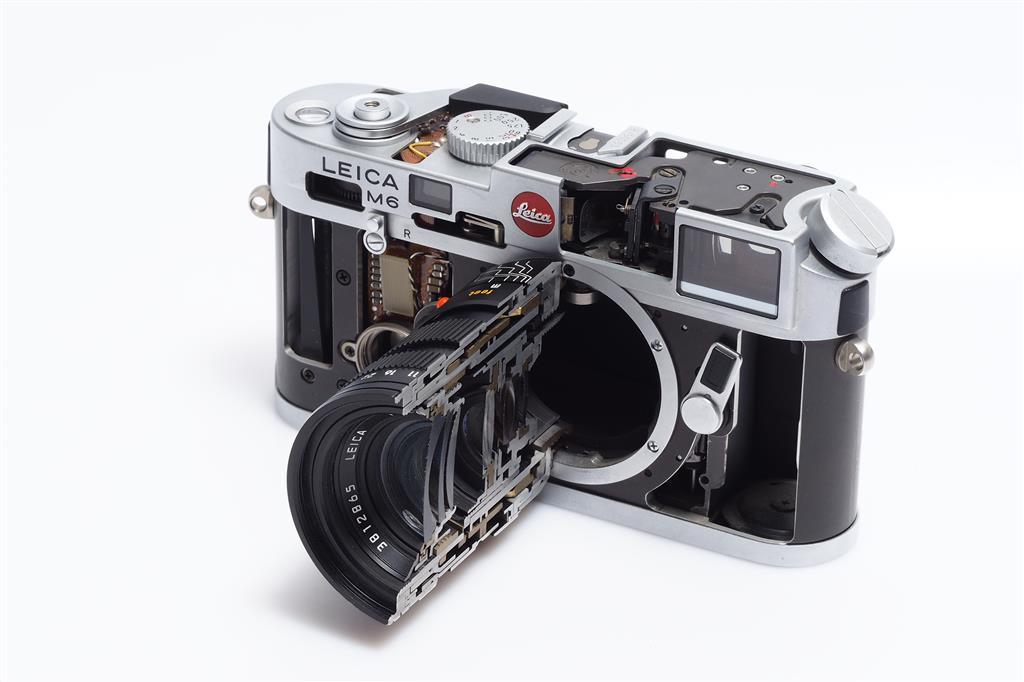
1994 – M6 Titan / Titanium Foto Ganz – Zürich
20 cameras for the 150 th anniversary of Foto Ganz in Zürich, 1844-1994, a titanium finished Summilux-M 1.4/35mm was available as well.
Regular Product Codes: 10412 Body, 11860 Lens
1994 – M6 Traveller Set
With chrome Summilux-M 1.4/50mm. With calfskin attaché case and camera bag. Said to be 500 pieces produced.
1994 – M6 Royal Photographic Society (RPS)
„Panda" body with black Summicron-M 2/50mm commemorating their 100 th anniversary, 1894 – 1994. Only 100 sets made.
Limited Edition of 1640 sets to commemorate the 40 th anniversary of the Leica M system (1954 – 1994, 40 pieces for every year). With chrome Elmar-M 2.8/50mm with matching serial number and brown leather case. First camera with viewfinder magnification of 0.85 with frame lines for 35, 50, 90 and 135mm lenses. Silver chromed brass topplate. Winding lever, rewind lever and frame selector as Leica M3.
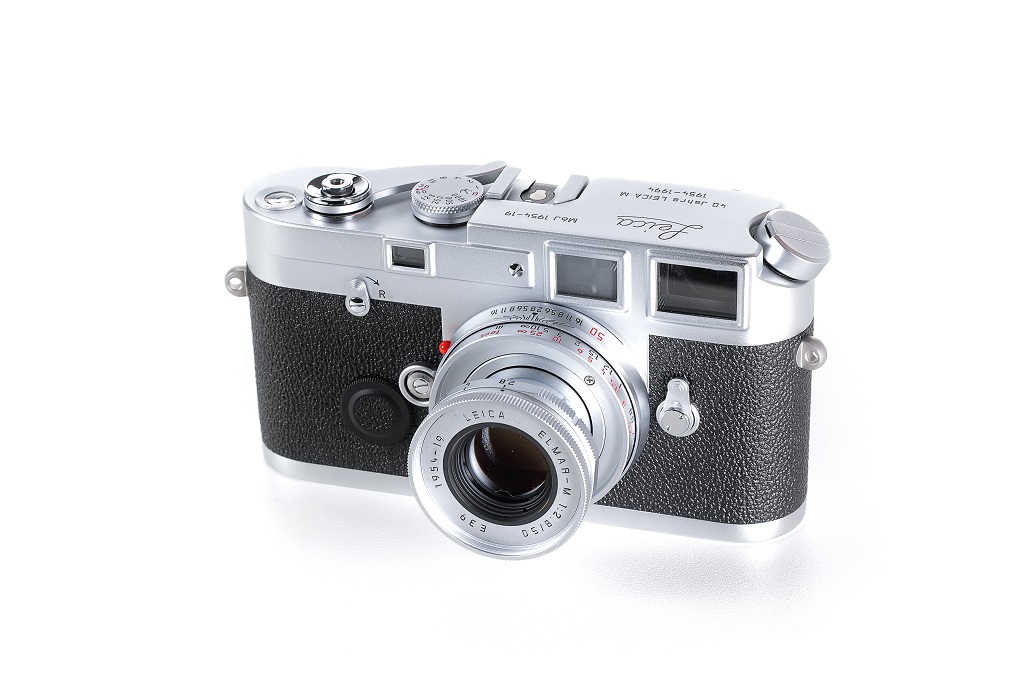
1995 – M6 Leica HISTORICA
150 cameras made for the 20 th anniversary of Leica HISTORICA, with chrome Summicron-M 2/50mm and light blue body covering.
Product Code: 10448 Set
Product Code: 10421 Body
Product Code: 11836 Lens
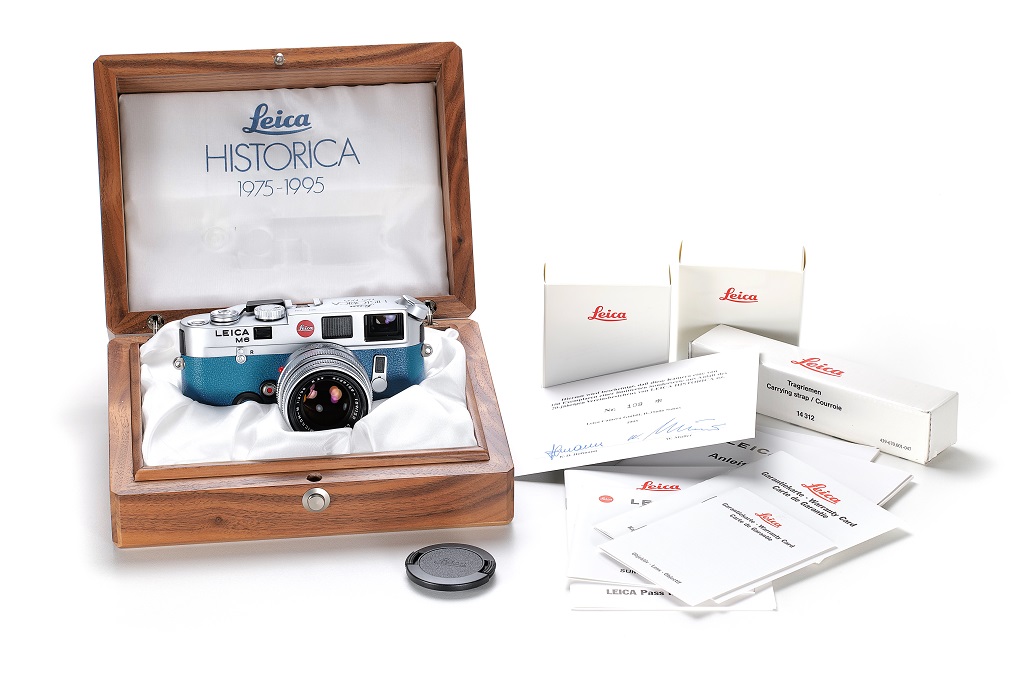
1995 – M6 POLYPHOTO DEMO UNIT
20 or 90 cameras for the Italian Leica distributor, an outline map of Italy engraved on the topplate.
1995 – M6 Dragon
Limited Editon of 300 sets with Summicron-M 2/50mm. Chrome cameras with a golden Dragon engraved on the topplate. Commissioned by the Malaysian dealer, Schmidt Scientific of Kuala Lumpur for their Chinese customers.
Product Code: 11834 Lens
1995 – M6 Danish Royal Wedding
200 sets commemorating the wedding of the Danish Crown Prince with chrome Summicron-M 2/35mm.
Product Code: 10444 Set
Product Code: 10423 Body
Product Code: 11838 Lens
1995 – M6 Gold Thailand
700 gold plated sets with Summicron-M 2/50mm to celebrate the 50 th anniversary of the coronation of King Bhumipol Adulyadej of Thailand.
1995 – M6 Platin / Platinum Sultan of Brunei
250 cameras in platinum for the Sultan of Brunei with Summilux-M 1.4/50mm with built-in lens hood. Another batch of platinum plated cameras must exist as one other camera with an earlier serial number with a diamond and Summilux-M 1.4/35mm Asph. is known to exist but engraving for the 50 th Birthday of his Majesty.
1996 – M6 Partner Aktion Deutschland
Demonstration cameras for German dealers, also some Leica R7 bodies have been made with this engraving. Said to be 70 and 70 pieces made. A different source states 500 cameras have been produced which seems high to me.
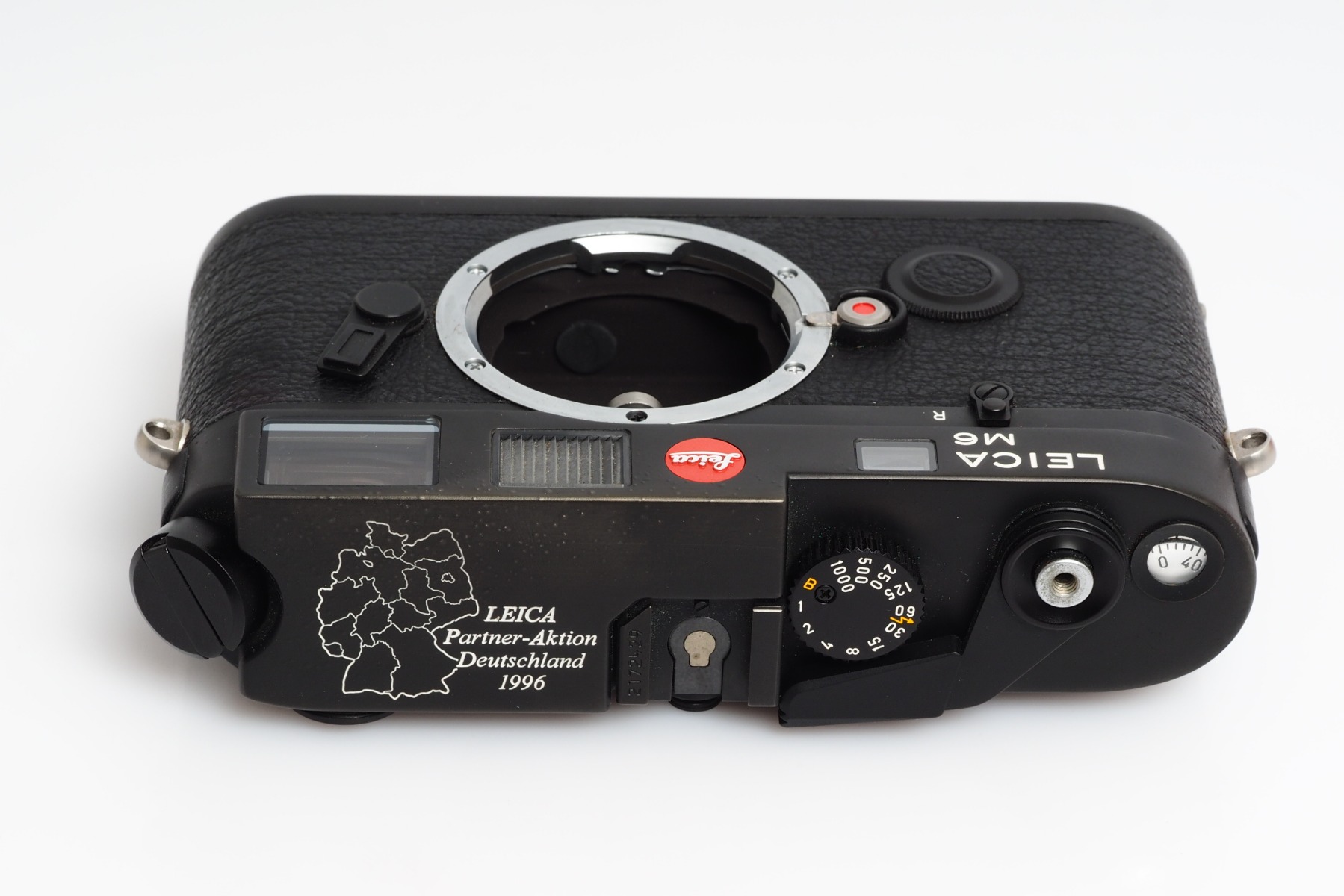
1996 – M6 Benelux
70, 90 or 94 chrome cameras delivered as demo cameras to dealers in Belgium, the Netherlands and Luxembourg.
1996 – M6 „Ein Stück Leica“
996 sets produced to mark its stock market flotation in this year. With Summilux-M 1.4/35mm. Body with cowhide covering with the Leica script all over it.
Product Code: 10496 Set
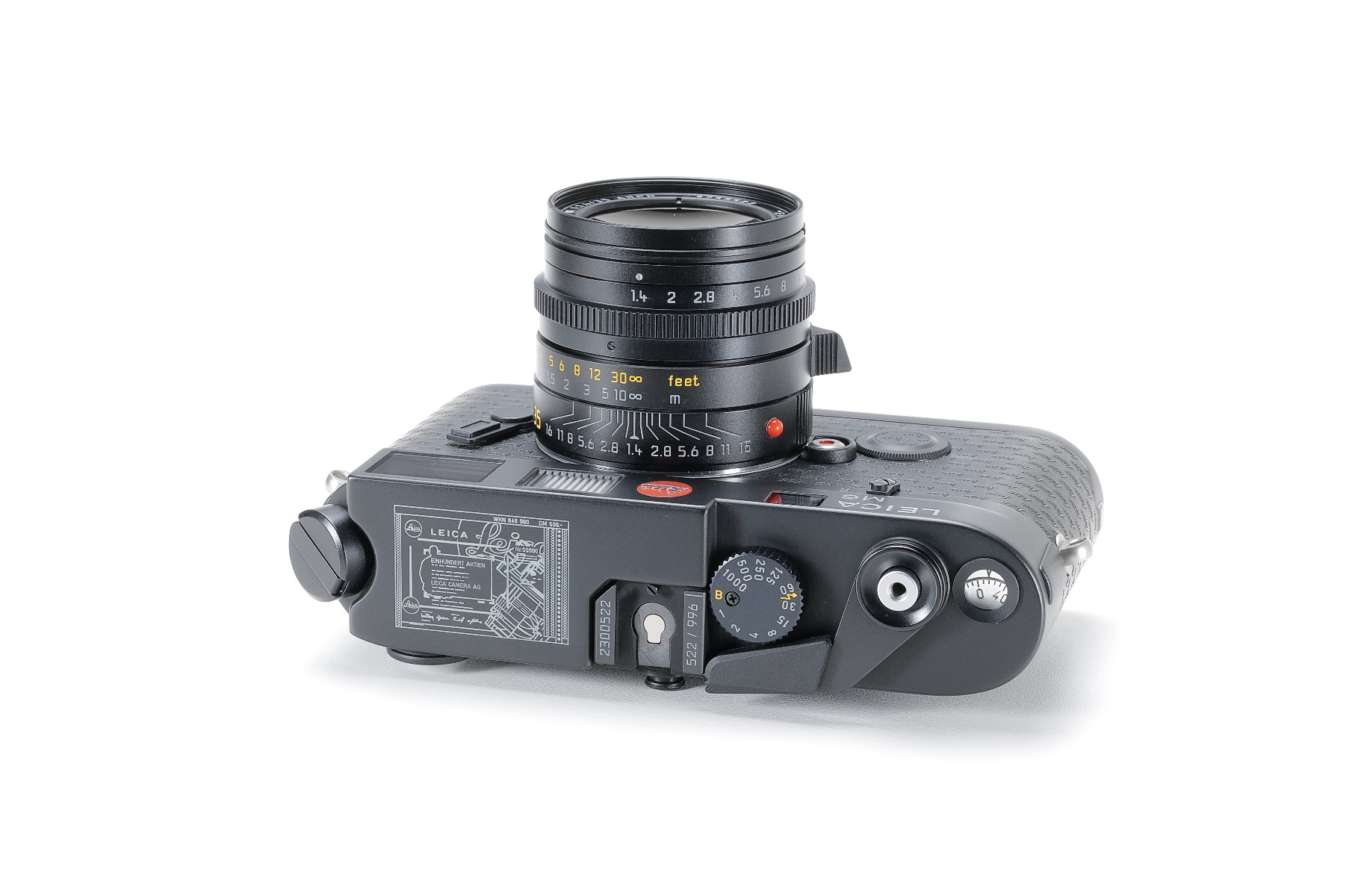
1996 – M6 Platin / Platinum / Gold Sultan of Brunei
Another order from the Sultan of Brunei for 500 cameras, 250 in gold and 250 in platinum finish. The platinum cameras were covered in grey snakeskin. All cameras were engraved with the Sultan's crest. 125 of the platin and 125 of the gold cameras were fitted with a diamond just above the accessory shoe. With Summilux-M 1.4/35mm Asph..
Another small batch must exist as at least two other cameras with earlier serial numbers and Summilux-M 1.4/35mm Asph. are known to exist (maybe 100 pieces).
1996 – M6 Platin / Platinum Schmidt Group of Companies 100 Years / Centenary Edition
150 sets with Elmar-M 2.8/50mm. Altough they were up to special number 188 as Schmidt was omitting all numbers containing a 4.
1997 – M6 Platin / Platinum Anton Bruckner
The Austrian Leica distributor ordered 200 cameras with Elmar-M 2.8/50mm to commemorate the 100 th anniversary of the death of the Austrian composer Anton Bruckner.
Product Code: 10454 Set
Product Code: 10425 Body
Product Code: 11839 Lens
1998 – 1999 From now on available with viewfinder magnification 0.85 (engraved in the silver band in the viewfinder) with frame lines for 35, 50, 75, 90 and 135mm lenses.
Product Code: 10413 – Black Body 0.85
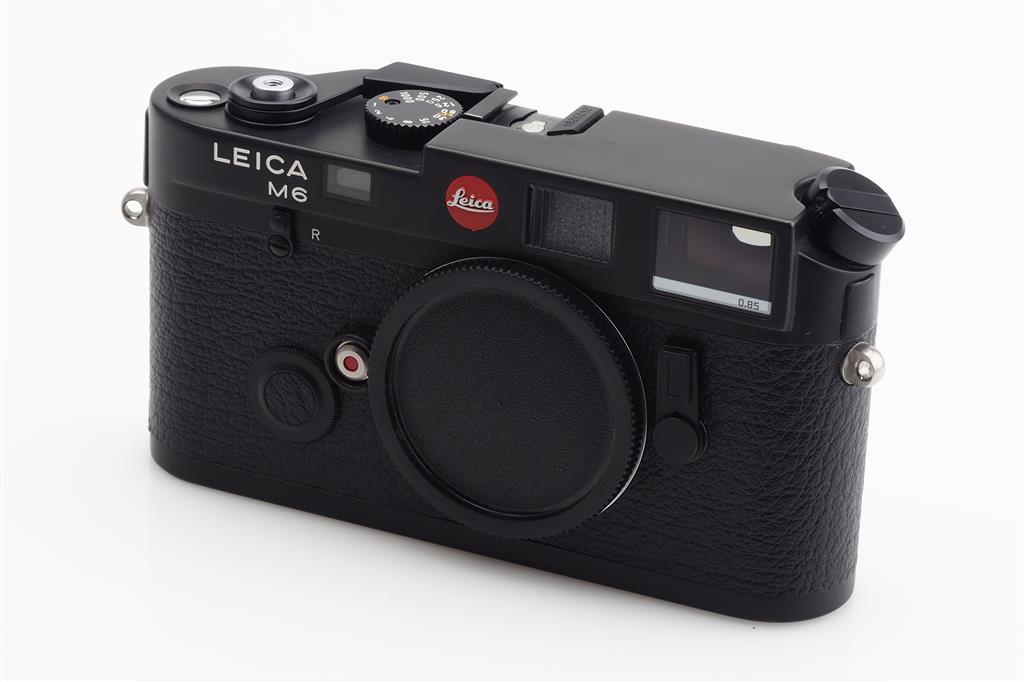
1998 – M6 Jaguar XK
To celebrate the 50 th anniversary of the Jaguar XK. Chrome body with British Racing Green conolly leather with Elmar-M 2.8/50mm. Only 50 sets made.
Product Code: 10469 Set
1999 – M6 Platin / Platinum 150 Jahre Optik
To celebrate the one hundred fifty years of the foundation of Carl Kellner's Optical Institute in July 1849, Leica Cameras issued 150 cameras. Each camera is engraved with one of the years from 1849 – 1999 together with the name and optical diagram of the matching lens. Each 30 years group of cameras was supplied with a different lens.
Product Code: 10480 - Summilux-M 1.4/35mm (1970-1999)
Product Code: 10481 - Summicron-M 2/35mm (1940-1969)
Product Code: 10482 - Summilux-M 1.4/50mm (1910-1939)
Product Code: 10483 - Summicron-M 2/50mm (1880-1909)
Product Code: 10484 - Elmar 2.8/50mm (1849-1879)
1998 – 2002 Leica M6 TTL
Product Code: 10433 Black Body 0.72
Product Code: 10434 Chrome Body 0.72
Product Code: 10436 Black Body 0.85
Product Code: 10466 Chrome Body 0.85
Product Code: 10475 Black Body 0.58 (2000 - 2002)
Product Code: 10474 Chrome Body 0.58 (2000 – 2002)
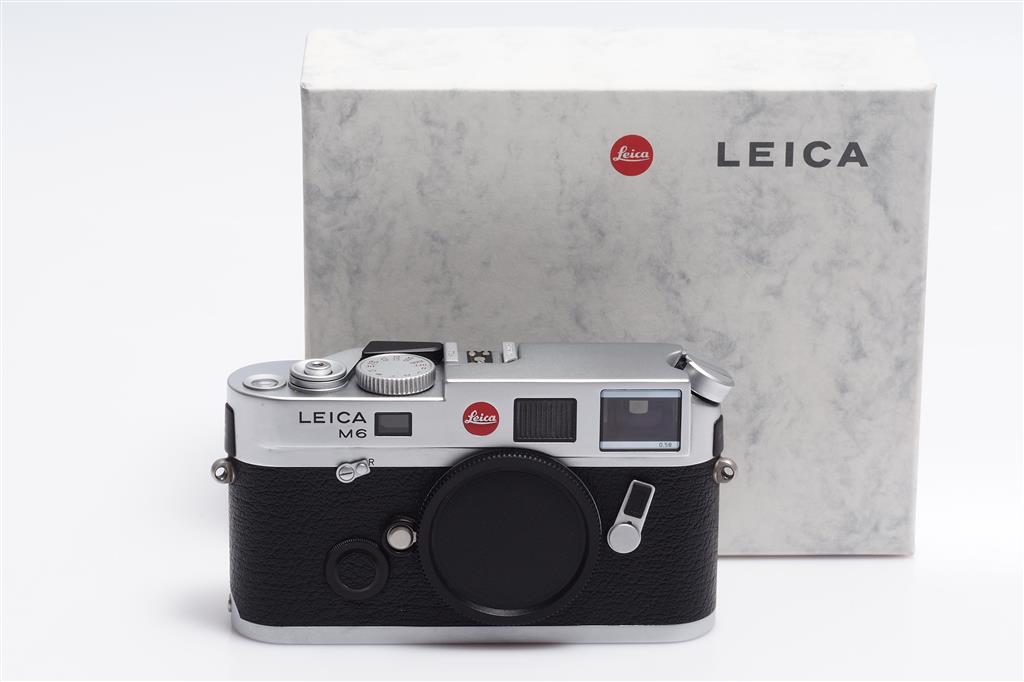
1999 – M6 TTL Kanto
The Japanese repair shop ordered 100 cameras with 0.72 magnification and Summicron-M 2/50mm lenses.
2000 – M6 TTL Black Paint Millenium
2000 black paint M6 have been produced with matching black paint Summicron-M 2/35mm and black paint
Summilux-M 1.4/50mm. The Rewind know shaped as on the M3/M2/M1.
Product Code: 10442 Body
Product Code: 11611 Summicron-M 2/35mm Asph.
Product Code: 11623 Summilux-M 1.4/50mm

2000 – M6 TTL Safari Green
After Leica announced their black paint Millenium M6, a special order was placed by a Hong Kong dealer for 300 green paint cameras. The Rewind know shaped as on the M3/M2/M1.
Product Code: 10478 Body
2000 – M6 TTL NSH
The Japanese Leica distributor NSH (formerly Siber Hegner) commissioned 400 of their own version of the black paint M6 with 0.85 viewfinder magnification. The Rewind know shaped as on the M3/M2/M1.
Product Code: 10477 Body
2000 – M6 TTL Test the Best
Swiss demonstration camera with 0.72 magnification. Only 40 pieces have been made. The camera is engraved with an outline map of Switzerland.
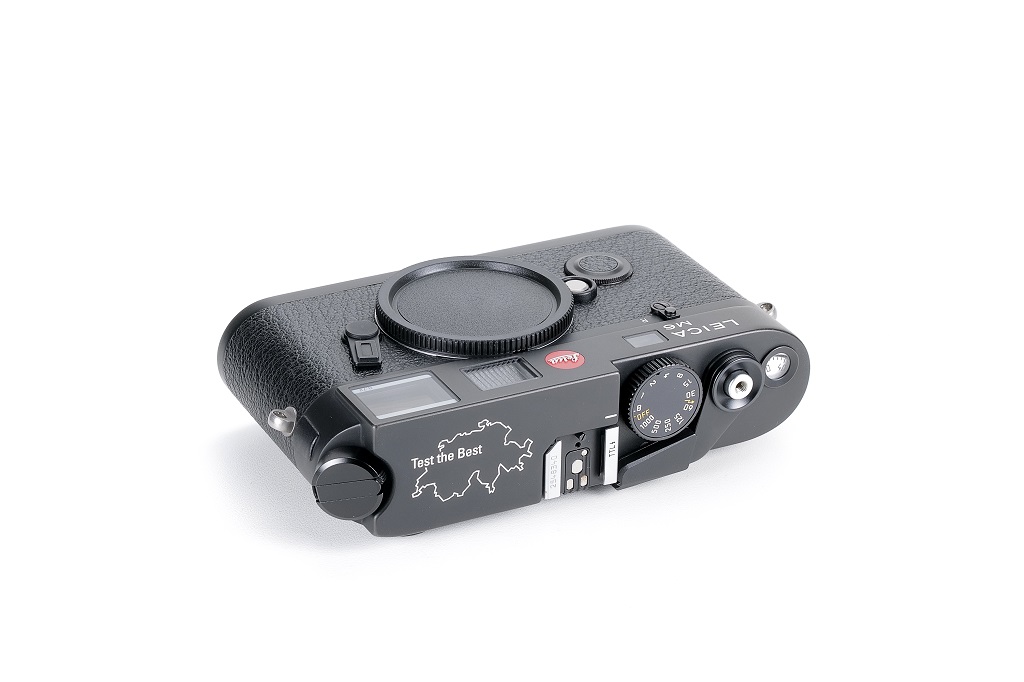
2000 – M6 TTL Black Paint LHSA
650 cameras with 0.72 and 500 cameras with 0.85 viewfinder magnification for the members of the Leica Historical Society of America. 60 pieces of the 0.85 cameras have been converted to 0.58 viewfinder magnification cameras.
Product Code: 10443 Body 0.72
Product Code: 10479 Body 0.85
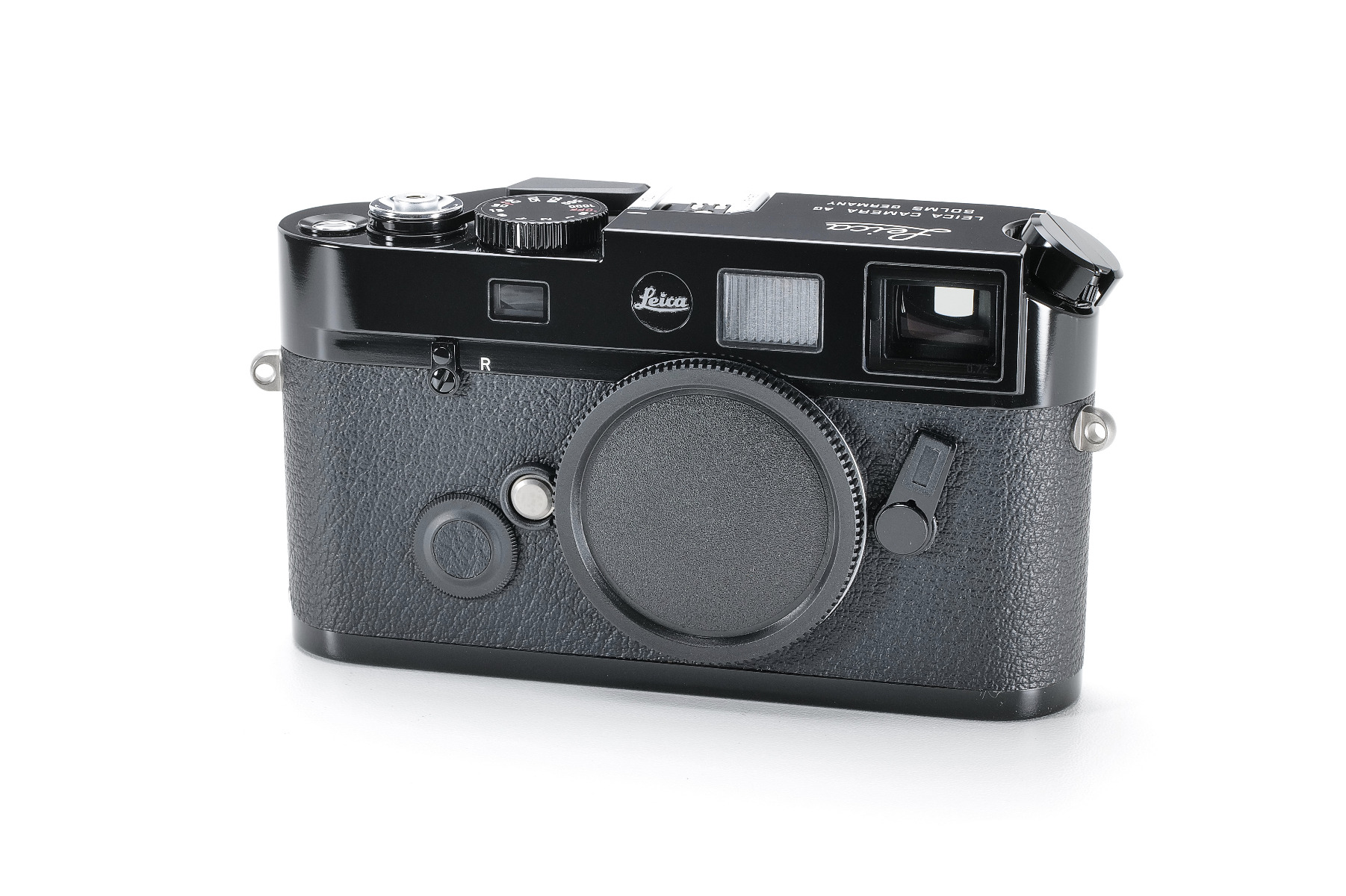
2000 – M6 TTL Black Paint Øresundsbron
An edition of 150 cameras with 0.85 viewfinder magnification was commissioned by Nordisk Foto Import A/S Denmark to commemorate the opening of the bridge between Denmark and Sweden. 50 cameras were sold as „body only“. 25 with a special Summicron-M 2/35mm Asph. in black paint and 75 with a special Summilux-M 1.4/50mm in black paint.
Product Code: 10492 Body Only
Product Code: 11622 Summilux-M 1.4/50mm
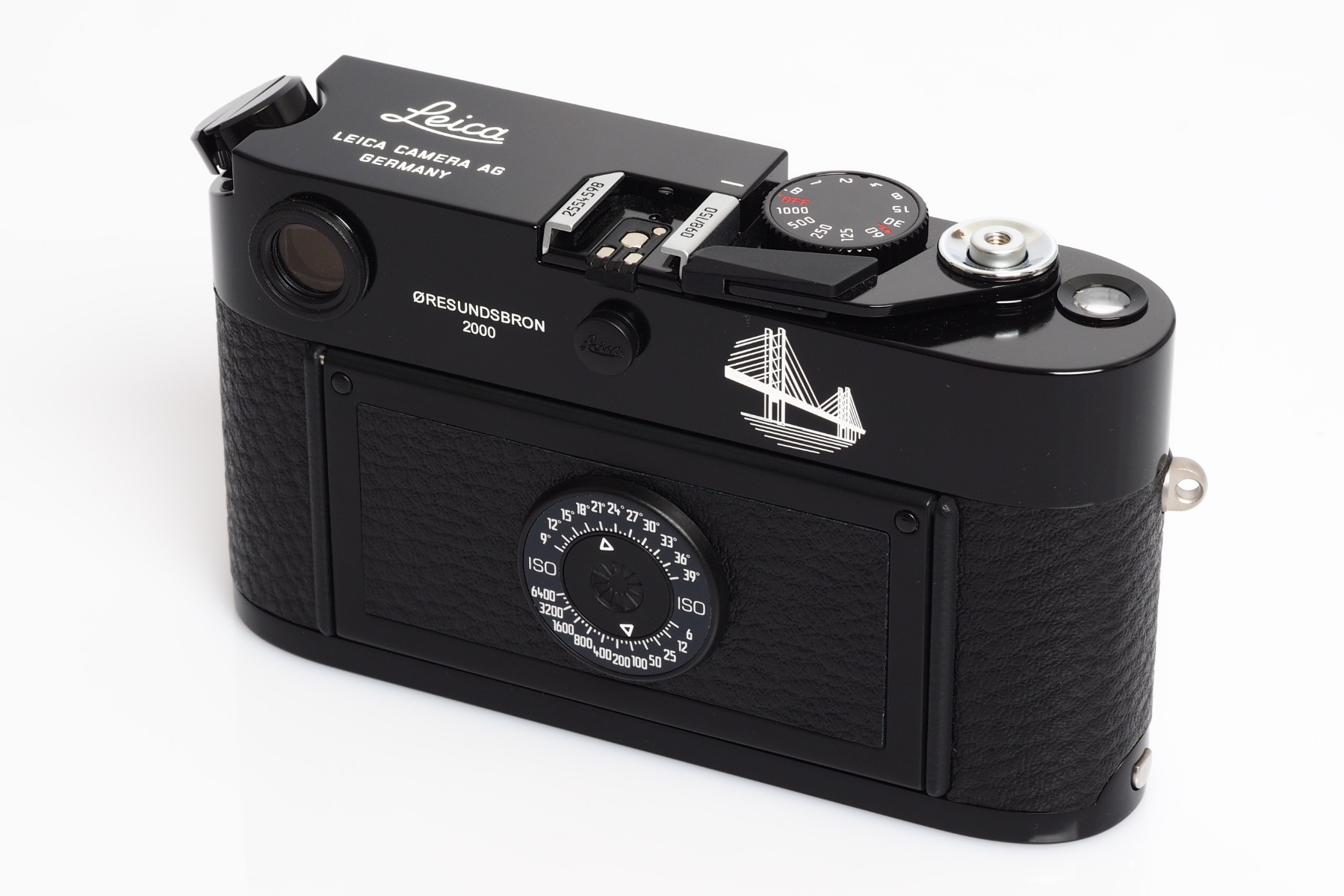
2000 – M6 TTL Black Paint ICS
An edition of 200 cameras with 0.85 viewfinder magnification was commissioned by the Japanese Leica distributor Kanto.
2000 – M6 TTL Black Paint Dragon 2000
An edition of 500 cameras with 0.85 viewfinder magnification for the chinese market.
2001 – M6 TTL Hansa
The Japanese buying organization commissioned 100 cameras with 0.72 viewfinder magnification in chrome with Elmar-M 2.8/50mm lenses to celebrate their 80 th anniversary.
2001 – M6 TTL Al-Thani
With orange leather covering, engraved topplate with 'Sheikh Saud Bin Mohd. Al-Thani 20xx Photography Competition Qatar' and with Summilux-M 1.4/50mm was produced in a small series of 16 chrome cameras by Leica in 2001 for presentation to the winners of the Sheikh Saud Photography Competition from 2002-2017.
2001 – M6 TTL Al-Thani Presentation Camera
With apple green leather covering, engraved topplate with the signature of 'Sheikh Saud Bin Mohd. Al-Thani' and with Summilux-M 1.4/50mm.
Sheikh Saud bin Mohammed Al-Thani commissioned six chrome M6 TTL cameras from Leica and gifted them to the following eminent photographers of the time:
Irving Penn Helmut Newton Henri Cartier-Bresson Khalifa Al-Obaidly Richard Avedon Sebastiao Salgado
The camera presented to Richard Avedon carries the serial number 2752420 and limited edition number 04/06 and is engarved 'As a gift to Richard Avedon'. W ith Summilux-M 1:1.4/50mm No. 3902513.
2002 – M6 TTL Titan / Titanium
Limited Editon of 1000 titanium plated M6 TTL cameras with 0.72 viewfinder magnification with buffalo leather covering. At the same time 500 examples of titanium plated Summicron-M 2/35mm Asph. (11609), Summicron-M 2/50mm (11624) and Apo-Summicron-M 2/90mm Asph. (11632) lenses have been produced.
Product Code: 10435 Titanium Body 0.72
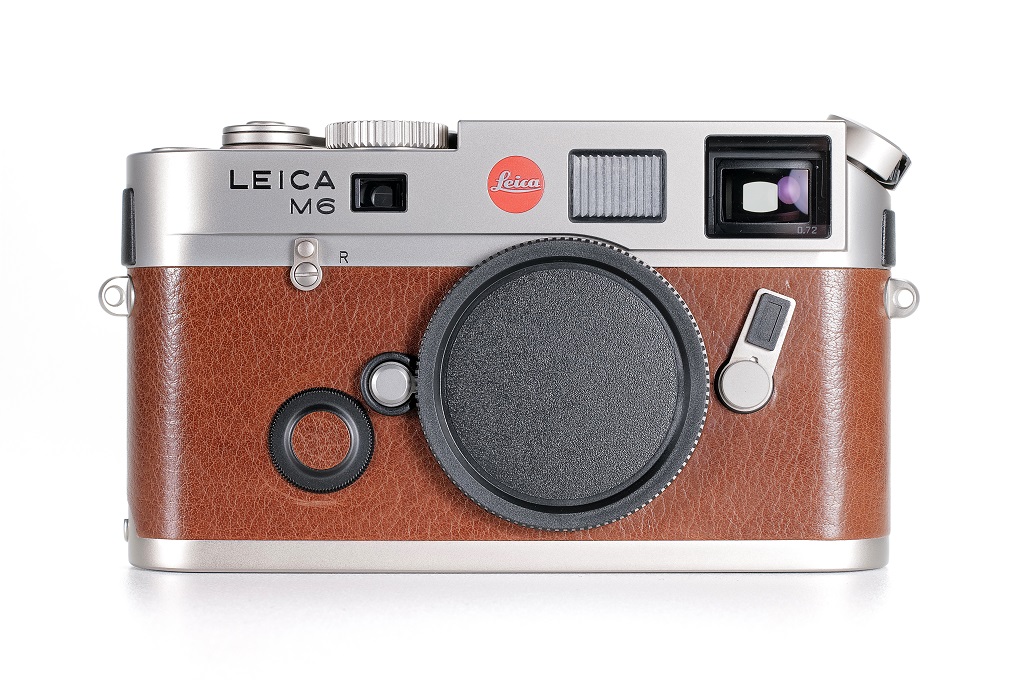
2003 – M6 TTL Die letzten 999 Leica M6
In January 2003, 18 years after the first introduction, Leica announced the end of their production line of the Leica M6 by making a last series of 999 cameras.
Product Code: 10542 Black Body 0.58
Product Code: 10543 Chrome Body 0.58
Product Code: 10544 Black Body 0.85
Product Code: 10545 Chrome Body 0.85
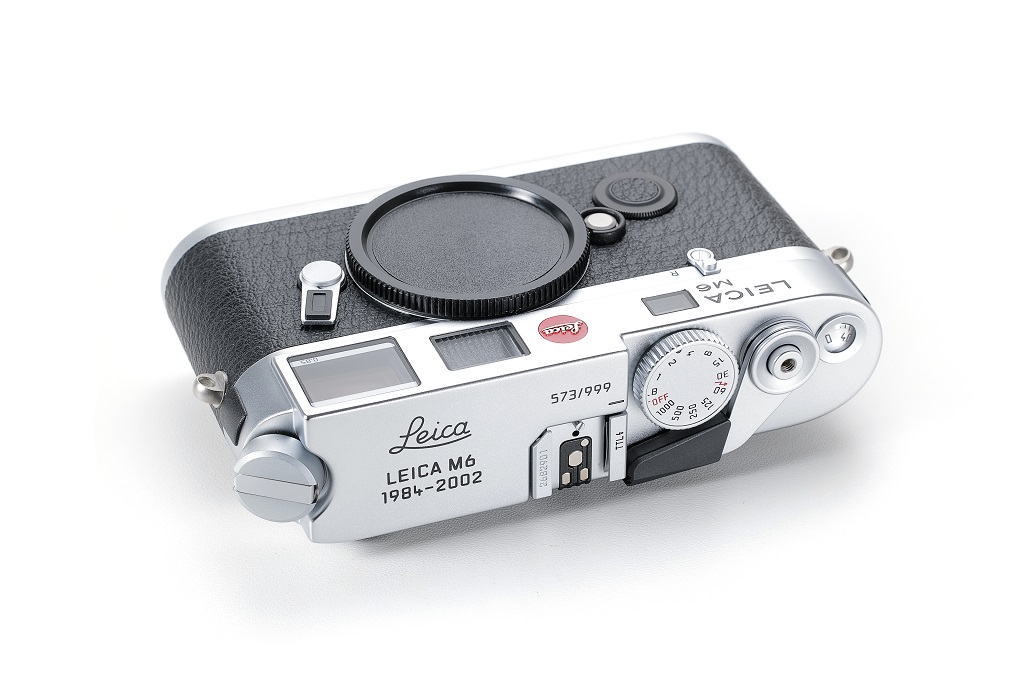
2003 – Leica M6A
Prototype of the Leica M7 with exposure automatic.
2022 – Leica M6 (Re-issue)
After almost 20 years, Leica has re-introduced the classic Leica M6 with a brass top and base plates instead of the former zinc and copper top and base plate. Based on the Leica M-A, the re-issue now features the classic M6 rewind crank, no plastic inserts above the strap lugs, a built-in exposure meter and a "Ernst Leitz Wetzlar Germany" engraving on the top plate. The painted top and base plate are now matte black painted as the Leica M11 and are no longer black anodized as they used to be.
Product Code: 10557 Black "Paint" Body 0.72
- Voigtländer
- Wetzlar Camera Auctions
- New Arrivals
- Medium & Large Format
- Willkommen bei Wetzlar Camera Auctions - dem Spezialauktionshaus für klassische Fotokameras
- Pentax 67 vs. Pentax 6x7: Recommendations & Lenses
- The Beauty of the Old - Marc Hoch
- Q & A #:1 Leica hype, the future of film, overrated cameras and giveaway - Jo Geier - Mint & Rare
- Introducing the "MAKE OFFER" feature – your gateway to the best deals
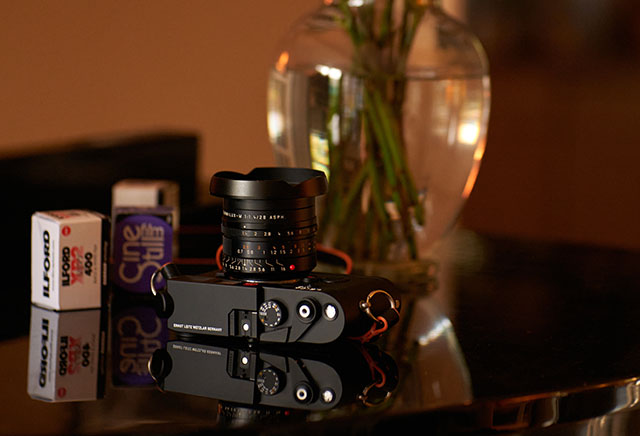
In this video, Thorsten Overgaard reviews the new Leica M6 that was announced on October 10, 2022.
Preorder now. For ipad, computer, smartphone and Kindle.
How to get back into film and what it will do four your eye. Read more here .
"Overgaard Original FILM STYLES for Capture One Pro"
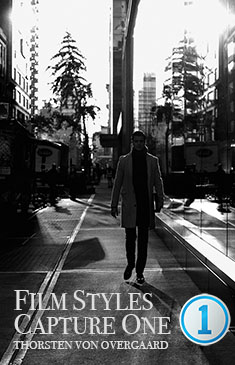
Buy now. Instant delivery.
Styles to get the right look of film scans. Or how to make digital files into film look. Read more here .
A new slimmer camera strap for Q2 and Leica M6
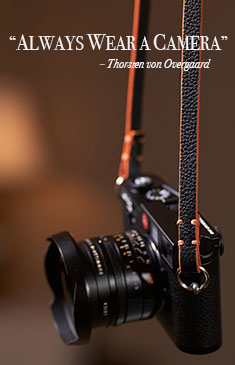
Preorder now. Delivery Feb 2023.
A new slimmer version of the world's best camra strap in soft calfskin. 10mm wide, 125cm long. Read more here.
And yes, all Leica M6 models have TTL metering:
Fundamentally, all Leica M6 cameras have TTL ( T hrough T he L ens) light metering. Yes, that is confusing, but it's just a name thing, or marketing. You can read further down the article how the light meter works exactly. The light comes through the lens, and an eye inside the camera reads the amount of light that reflects off the white spot. The meter in early Leica M6 Classic turns off automatically after 9 seconds, in the later TTL verion it turns off after 11 seconds.
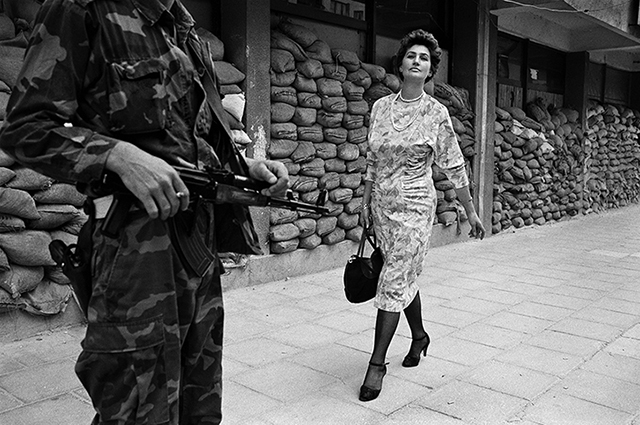
New to film photography? Start here:
Film stock:.
The basic words are CineStill 35mm film for tungsten (which is the new hype ) or 400 ISO CineStill daylight film , and the classic Kodak Portra 400 for portraits and beautiful skin tones. The cornerstone of it all would be the all-time classic Kodak 400TX (same as Kodak Tri-X in the old days) and the ILFORD XP .
Get the film developed and scanned:
The film has to be developed and either scanned or printed in a darkroom. In the US, Picturehouse/The Small Darkroom in New York is a good place to develop and scan. Prices of developing and scanning in 30MP is in the range of $30 per film roll. In London, the Aperture offer a good deal for £15 per film development with scanning, and there is also Bayeux . In Nottingfham UK is Make it Easy Lab . Austria has Blendpunkt . You could consider buying a scanner yoruself, for example a used Imacon, a simple lightbox film scanner, or a modern lightrom film scanner (but it's a lot of work scanning yourself).
(Don't) build a darkroom:
You can also find a perfectly workable Leitz Focomat enlarger and make your own darkroom, and Freestyle in Los Angeles is a good one-stoppe shop for darkroom paper, chemicals and all (film too). Some still build their dream darkroom, like my neighbour (photo to the right), but most of us probably prefer to shoot film and send it to a lab for developing/scanning so it is ready for online use and/or inkjet print.
Take a film class:
Consider to enroll in the Joe Greer online class where he shoots film with Leica M6. You may also find this The Film 101 Photography Online Class with Joel Greer and three other film photographers useful (with Joe Greer, Matt Day, Beatriz Valim and Mike Gray using Leica M6, Sinar, Mamiya RZ67, Pentax 67, etc.).
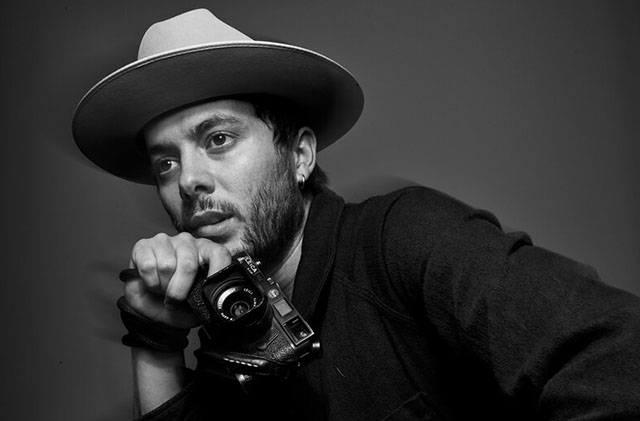
Leica M6: The quintessential formula for a rangefinder camera
In 1984 Leica hit gold with the Leica M6, a mechanical based camera so well made that is continued to be in production for 18 years. It's design is the quintessential formula for rangefinders, so right on that holding a digital Leica M models since the Leica M8 (2006) and forward, very much feels like holding a Leica M6.
The Leica M6 packs all functions that are needed for serious and creative photography in a body with dimensions of roughly 14cm x 8 cm x 4cm, a design that has known to be so ideal nothing really can be added or changed.
The Leica M6’s (1984) striking design shape and cleanly drawn lines gives impression of solid functionality, mechanical integrity and engineering precision, a the design can be recognized in the first full-frame digital camera, the Leica M9 (2009).
The Leica M6 is a fully mechanical masterpiece allowing the user to shoot at any shutter speed from 1/1000 of a second to one second, or bulb mode, all without batteries. The two LR44 batteries hidden beneath a circular cap on the camera's front are only there to power the internal light meter.
A less debatable "downgrade" from predecessors is the M6's ISO dial on the back. While older Leica’s like the M3 and M4 were equipped with a beautiful metal plate, newer cameras have a much simpler plastic dial. Though the M6's ISO dial – which is coupled with the internal light meter – goes all the way up to 6400, there is something about the little sun and light bulb painted on the back of older models.
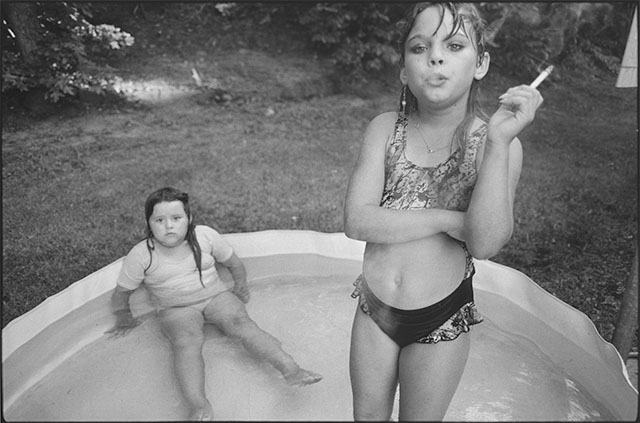
Why is it called a "35mm" camera?
The name 35mm is a film format in rolls where the film is 35mm high and usually 36 pictures long. The pictures on the film are 24x36mm, which is also known as "full frame" in modern digital camera terminology. On the 35mm level, 24mm of the film is the pictures, and the rest is left for perforated holes, to hold the film in place. The space between the frame and the film edge also contains the frame numbers.
As new Leica M6 models and limited editions over the years
If you look for a Leica M6 for practical photography, any silver or black Leica M6 will do. But here below in this article is all the Leica M6 limited editions presented through 1984-2003.
A film camera so successful it could be in production for 18 years, from 1984 to 2002. The Leitz engineers had waited for years industrial developments and innovations that allowed them to integrate electrical and electronic components for exposure automation into the confined space of first the M4-P body (1980) that was already packed with mechanical parts.
The Leica M5 (1971) was the step up from the original Leica M4 (1966) and had many of those parts. The Leica M5 is known as the Frankenstein camera, because it bulges out left, right and center with light meter and other electronics, ruining the else perfect form factor and design of the Leica M.
At the end of the 1970s, the Leitz engineers (Peter Loseries and Otto Domes) experimented with parts and components of the Leica R4 camera with the goal to create a platform from which the SLR and rangefinder cameras could be derived by combining the main body and shutter mechanism.
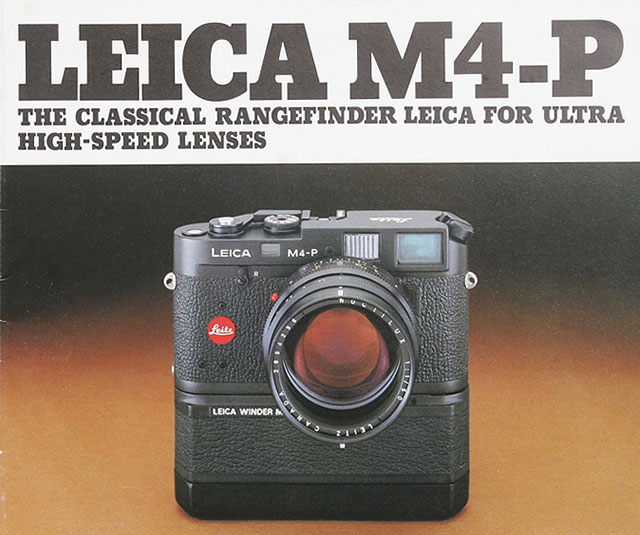
1981: "Leica M6 Electronic" (prototype)
Before the Leica M6 was introduced, the prototype of the production version Leica M6 was made, and this of course is a collectors item now rather than a camera for use. Fully electronic Seiko shutter which was already used in the R4 (with some modification because of light leaks that didn't matter in an SLR, but did in a mirrorless Leica M6), Also was added TTL-metering and automatic exposure control (as in the later M7).
The M4-P was the last of the classical full-mechanical rangefinder cameras made by Leitz. The next model, the Leica M6 incorporated a TTL-exposure meter and some of the electronics. The M4-P could be fitted with the external clip-on exposure meter, made by Metrawatt. This meter coupled with the shutter dial and could be used as an incident lightmeter.
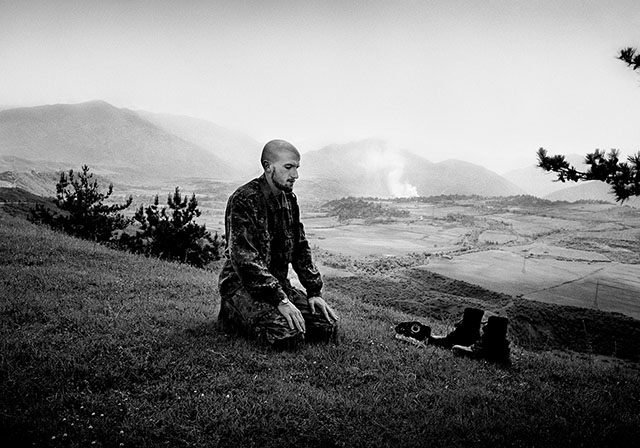
1984 – The Leica M6 Classic - Made in Wetzlar
The first production version of the Leica M6. Starting with serial number 1657251. Retail price was $1,695.00 on introduction, and it was only made in black (approximately $4,000 in 2022 value).
While it is called classic, yes it has TTL (Through The Lens light metering, even later versions are called Leica M6 TTL. Don't be confused, they all have TTL metering). This version can be recognized with not having plastic above the strap lugs (to protect the body from scratches from the strap rings). This version has ERNST LEITZ WETZLAR GMBH engraved on the top plate and ”Leitz” red dot on front. (Later versions will be the ones made in Solms and has a "Leica" red dot).Model no. 10 404 Black Body 0.72.
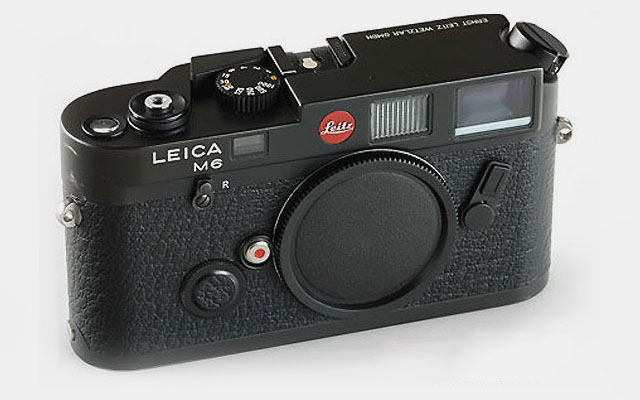
The very first Leica M6 Classic models can further be recognized by these small nerdy things:
1) Film plane indicator on top plate beneath advance lever (a white engraved line showing where the film plane is). 2) Rewind knob on tip of lever machined metal. 3) Small lighting thunder/flash sync symbol on shutter speed dial. 4) The back of the eyepiece is made of metal. 5) "Leica M6" is fairly hallow engraving. 6) No rubber strap Inserts. 7) Back door appear almost identical to later versions, but slightly different screws. 8) Body Embossed "Made in Germany" on the leather, on the back to right of back door. 9) The ISO / ASA dials appear identical.
1986 – Leica M6 Classic in Black and Chrome
From 1986 the Leica M6 have plastic coverings on the body above the strap lugs to protect the body from scratches from the strap's metal rings. Model no 10 404 (black 0.72) and 10 414 (chrome 0.72).
1987 - Leica M6 Classic with "M6" and no LEICA engraved on the front
Also known as "big logo", these cameras has only a large M6 angraved on the front, and no LEICA engraved above it on the front. Very much the same engraving as on later Leica M9 and so on, Else identical to the 1986 Leica M6 version mechanically and all.
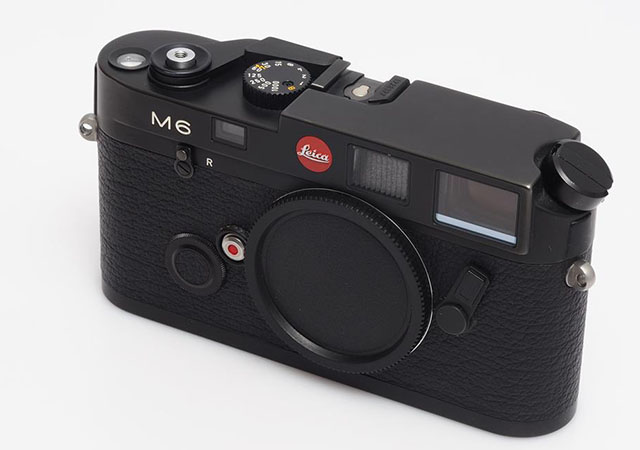
1987 – Leica M6 G (gold logo)
A limited edition made for a Swiss dealer. 100 cameras in black, chrome and titanium finish witht the Leitz logo in gold. heh made for a Swiss dealer. The Leitz logo in gold and the top plate engraved with a . The topplate engraved with a cross-section diagram of the 50mm Elmar. I have tried hard to find a phtoo of this, but came up emptyhanded.
1988 – Leica M6 Classic LHSA 20th Anniversary Limited Edition
A limited edition of only 43 cameras for the LHSA (Leica Historical Society of America). With a "1968 LHSA 1988" engraving on the top plate. Serial numbers 20-01 to 20-43.
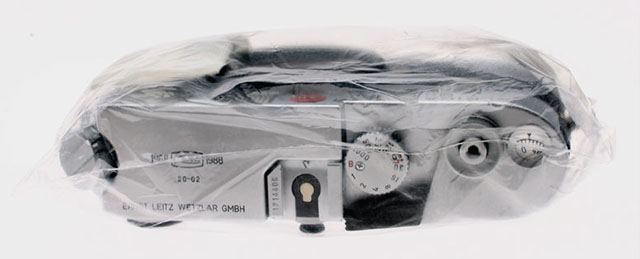
1988 – Leica M6 Classic "Made in Germany" (Made in Solms)
From 1988, the Leica M6 production moved to Solms a few kilometers from the Wetzlar headquarter. This was part of splitting up the Leica brand in three. The company producting microscopes kept the headquarter in Wetzlar, and the camera division (making cameras, binoculars and hunting scopes) moved to a new facrory in Solms.
Hence the Leica M6 became "Made in Solms Germany" and the top plate from now has the engraving "LEICA GMBH GERMANY" and LEICA M6 engraved on front of the topplate. The bigger news was that the red dot on the front now displays "Leica" instead of "Leitz". The move was rather depressing in retroperspective, but if you read my story " The New Leica Factory in Wetzlar " you can see how Leica moved back to a brand new facotry in Wetzlar in 2014.
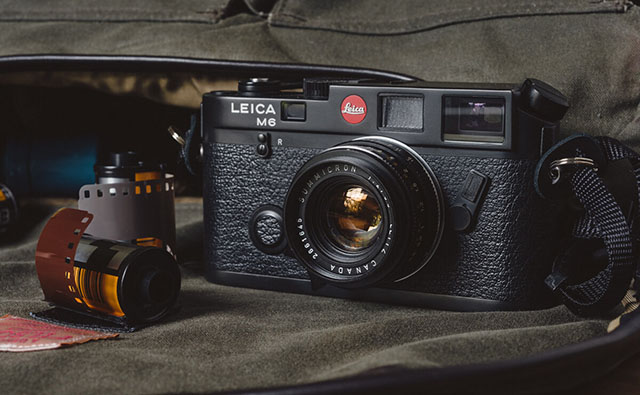
Leica M6 Black Chrome with Leica logo on the front. "Made in Solms" 1988-1998. Photo by Tom Knier .
1989 – Leica M6 Classic Platin "150 Years of Photography - 75 Years of Leica Photography"
A limited edition of 1,250 cameras and lenses were made to celebrate the 150th anniversary of photography and the 75th anniversary of Leica. Each with a letter of the word LEICA and a serial number from the series 1-250. Large engraving on top. With Leica 50mm Summilux-M f/1.4. Model no 10 450
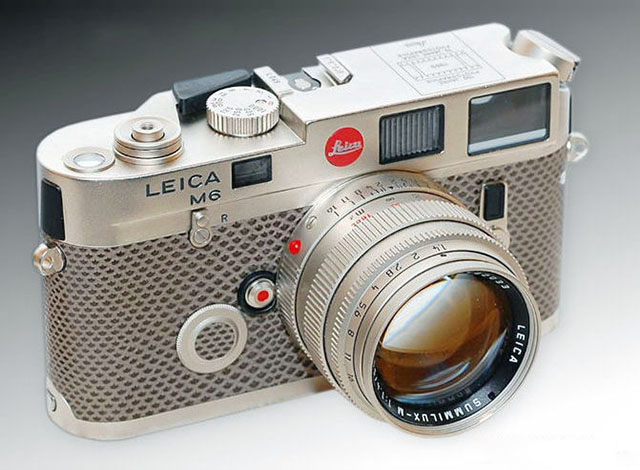
1990 – Leica M6 Siber Hegner Japan
Limited edition of 125 cameras made for the distributor in Japan with in chromed with a small special SHJ emblem on the top plate. This edition sells for around $5,000 in 2022.
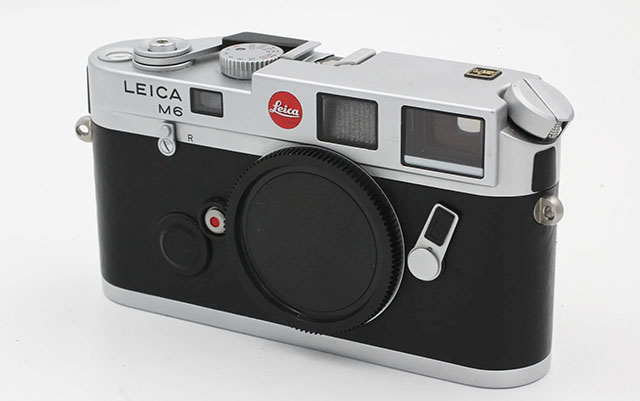
1990 – Leica M6 Classic "Panda"
A slightly different version on the outside. A silver chrome Leica M6 Classic with black winding lever, shutter release, shutter speed dial, rewind lever, rewind crank and knob and frame selector. All in black. Model numbers the same as regular production version. In production 1990-1993.
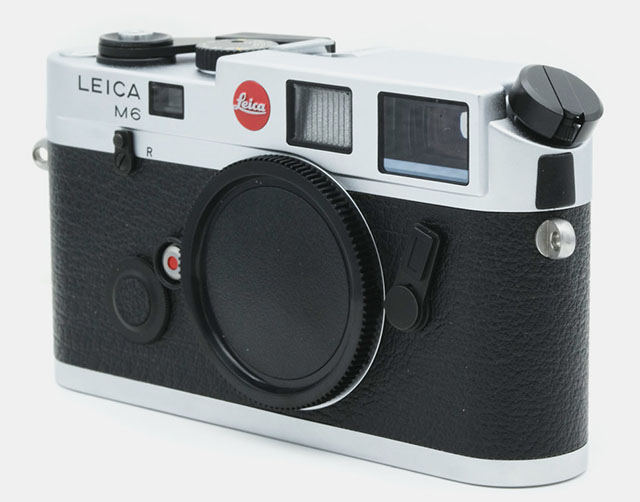
1992 – Leica M6 Classic "Columbus"
A limited edition of 200 issued by the Italian Leica agent Polyphoto to commemorate the 500th anniversary of the discovery of America. Engraved 1492-1992 and with a chrome Leica 50mm Summicron-M f/2.0 lens. Model no: 10 414 (body) and 11 825 (lens). Sells for around $6,000 in 2022.
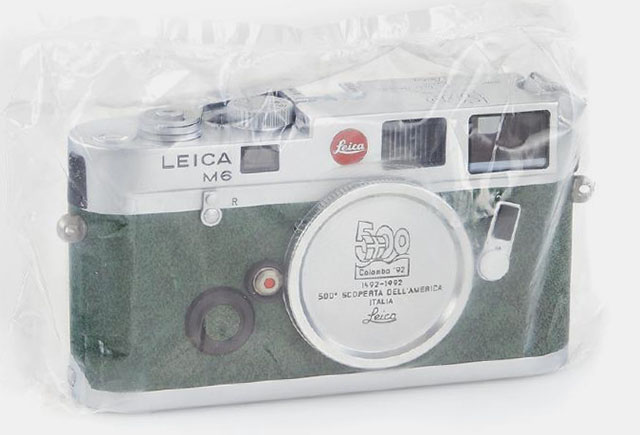
1992 – Leica M6 Classic "Year of the Rooster "
A limited edition of 300 cameras (or some say 267) issued by the Schmidt Group (the agent for Leica in Hong Kong). Rooster engraved in red on top plate. With matching chrome Leica 50mm Summicron-M f/2.0 lens.
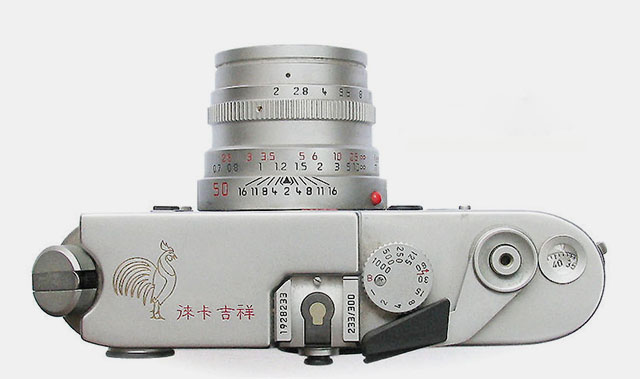
1992 – Leica M6 Classic Gold "Sultan of Brunei "
A limited series of 350 Leica M6 gold-plated camera and matching 50mm Summilux-M f1.4 lens and wooden presentaion box. 1.4/50mm in wooden presentation box. Engraving of two emblems on top. Serial numbers HB 001 – HB 350. Model no 10 412 (set ).
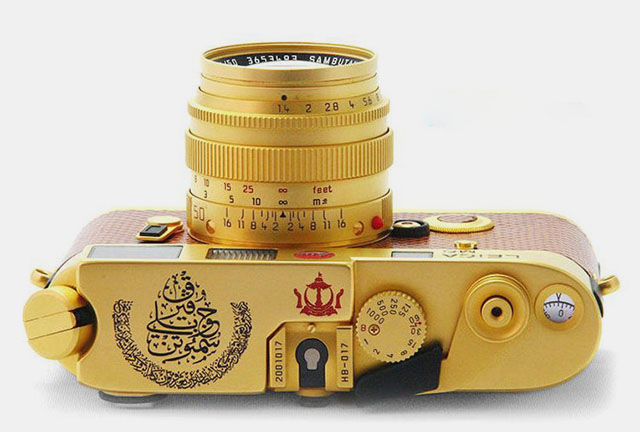
1992 – Leica M6 Classic Titan
A new model (not limited edition) made in titanium of the Leica M6 Classic, this model was in production 1992 to 1998. The topplate is made from brass instead of the usual zinc casting. Model no: 10412 with 0.72 viewfinder.
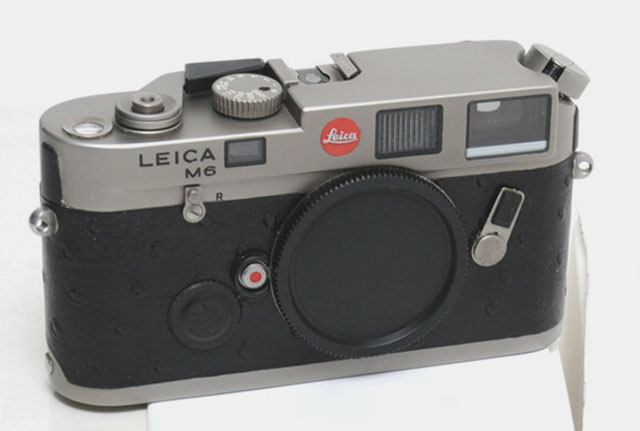
1993 – Leica M6 Classic - LHSA 25th Anniversary
Limited edition of 151 cameras, Leica M6 Classic in chrome. W ith a matching chrome 35mm Summicron-M f/2.0, Leica 50mm Summicron-M f/2.0 and Leica 90mm Summicron-M f/2.0 lens. Wooden presentaion box. Sells for $30,000 and above as complete set.
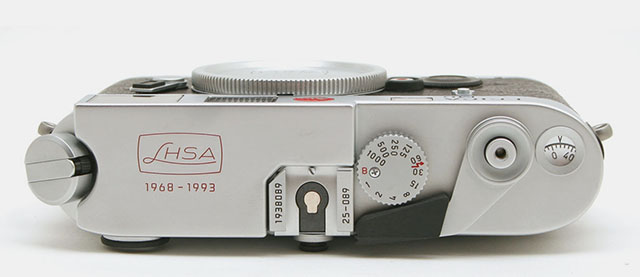
1993 – Leica M6 Classic "Royal Foto"
A limited edition of 101 cameras commissioned to the Austrian Royal Foto company for their 25th anniversary. A black and a chrome version with red covering and engraving on top plate "ROYAL-FOTO AUSTRALIA". Also, a special chrome Leica 35mm Summicron-M f./2.0 was available and engraved as well. Other lenses with special engravings may be as well. Model no: 10 404 (black body) and 10 414 (chrome body).
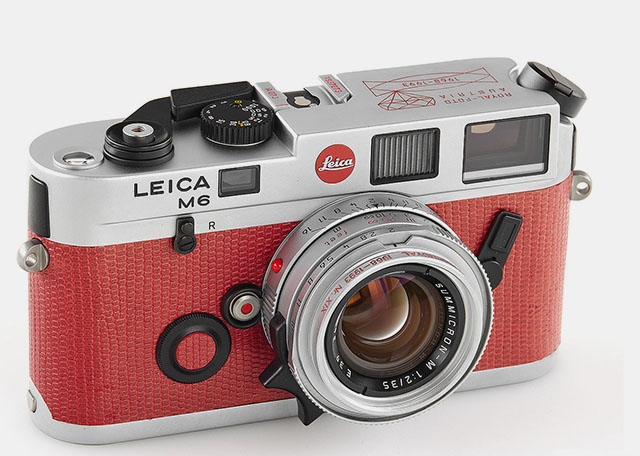
1994 – Leica M6 Classic Schnittmodell (Cut-Through Camera )
Well, this is not really a camera, as you can see. It is a advertising kit produced in very small numbers with product code 942005. Was made in chrome (most rare) and black.
1994 – Leica M6 Classic Titan " Foto Ganz, Zürich"
A limited run of 20 titanium Leica M6 ocameras for the 150th anniversary of Foto Ganz in Zürich (1844-1994), a titanium finished Summilux-M 1.4/35mm was available as well. Model no 10412 (body) and 11860 (lens).
1994 – Leica M6 Classic "Traveller Set"
A limited run of 500 chrome Leica M6 cameras and matching Leica 50mm Summilux-M f/1.4 lens - and a calfskin attache case and calfskin camera bag.
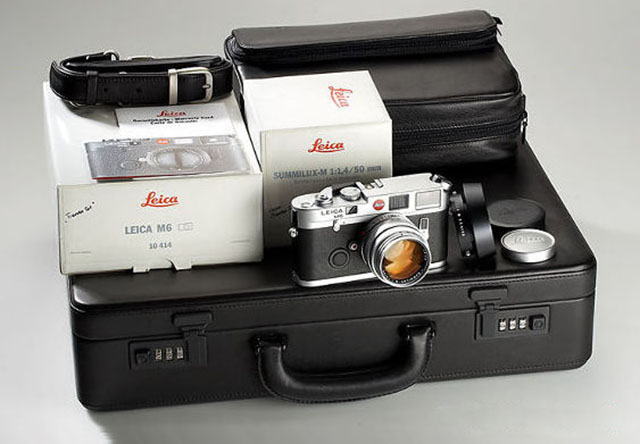
1994 – Leica M6 Classic "Royal Photographic Society"
A limited edition of 100 cameras in "Panda" style for the 100th anniversary (1894 – 1994) of The Royal Photographic Society. With a black 50mm Summicron-M f/2.0 lens.
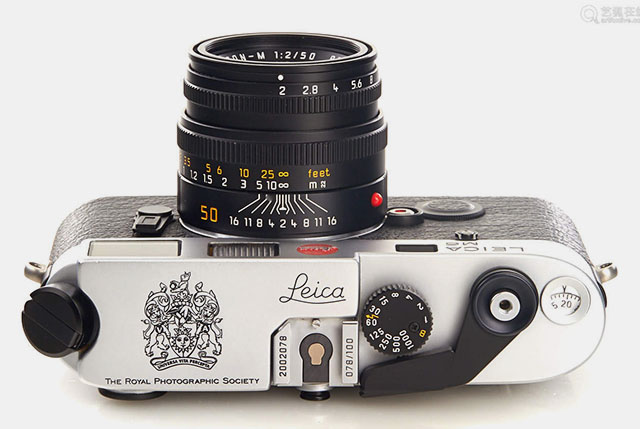
1994 – Leica M6J (The Leica M3 of Leica M6 models)
1194 was the year of a 3-in-1 anniversary and a very, very special Leica M6J limited edition : In 1994, Leica could celebrate three anniversaries (80 years of Leica, 40 years of Leica M and 10 years of Leica M6. They decided to celebrate it with a special edition, the Leica M6J that has a body shape of the Leica M3 and the finder frames of the Leica M4, and viewfinder magnification of 0.85 (as well as frame lines for 35, 50, 90 and 135mm lenses). This 0.85 viewfinder magnification is as close as possible to the famous viewfinder of the M3 (which was 0.92).
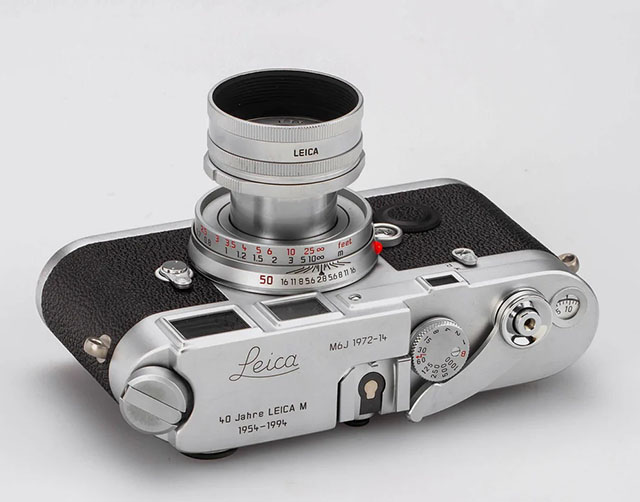
This special Leica M6J was made in 1640 units with serial numbers (1954-xx) for every year (40 x 40 cameras). Overall, the Leica M6J fits between serial number 2000999 and 2001000. The camera in the photo is serieal number 1972-14.
The Leica M6J features a silvrer chromed top plate made of brass, with the Leica logo, serial number and "40 Jahre LEICA M 1954-1994" engraved. Winding lever, rewind lever and frame selector are in design as the original Leica M3.
A matching collapsible chrome Leica 50mm Elmar-M f/2.8 , with matching serial number and a brown leather case to have camera with lens in, around the neck.
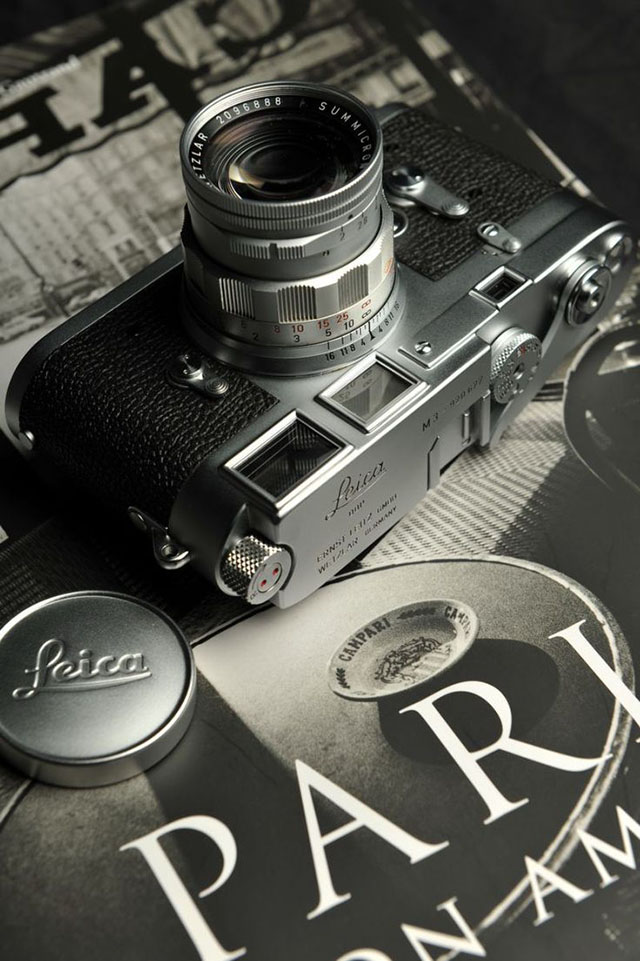
The Leica M3 or the Leica M6..?
Now is the time to ask yourself, is the Leica M3 or the Leica M6 Classic the film rangefinder of them all?
It is worth noticing that the very popular Leica M6 was in production during the tough years of Leica. Actually, it went into production before the tought years of demotion (1987-1988), and the production ended the year Dr. Andreas Kaufmann boguth into Leica Camera AG and basically saved the brand from bankrupcy. The Leica M6, ironically, is the bridge between former glory and new glory.
In 1988, the Leica camera facotry moved from the historic and glorious headquarter in Wetzlar, to a not very impressive factory building in the smaller nearby city Solms (a 7 minutes drive by car). Leica had taken a slow but certain slide from being the number one camera brand in the world to becoming a bit of a footnote in the arms race of photography.
Leica first missed the boat when SLR cameras took inmarch into the ranks of professional photojournalists, then frantically tried to cooperate with Minolta on a new cheaper Leica CL/Minolta CLE (1973) and an electronic SLR (Leica R3 in 1973), and when that didn't really save the day, the Leitz family a few years later had to sell their last shares in the company in 1986-87.
Despite being excellent in making lenses, binoculars and hunting scopes that could see far, seeing into the future wasn't one of the strong sides of Leica then. They misjudged the entire scene for many years, relying on their past successes.
On the other hand, to be fair, Leica's ability to hold onto the past would later save the entire brand, because if one examine the recent years successes from 2006 til 2022, the back catalog of simplicity, unmatched optical qualtiy and unique knowhow and heritage – all implemented to a large degree in every modern products like the Leica Q2 , Leica SL2 , Leica M10-R and Leica S – is what sets aside Leica from any other camera brand.
But back in 1988, the photographic activities (and binoculars) moved out of the Leica headquarter in Wetzlar (that made and still makes Leica microscopes) and moved into a small building in Solms.
Throughout all this, the Leica M6 sold somewhat 175,000 units from 1984-2002 (10,000 units a year). In comparison, the most successful Leica M was the Leica M3 that sold 220,000 units from 1954-1966 (18,000 units a year).
Leica was on the brink of bankruptcy in the beginning of the 2000’s, and only because Dr. Andreas Kaufmann didn’t know better, he ended up with an unhealthy amount of stocks; and then bought some more and threw in some money and pushed new products through. Him and his brothers had already bought the company in 2002 that produced the metal parts of Leica, so they were alredy in it to live or die in the attempt.
As we can see now, it worked. Leica flourished and made money, went through what appears as a miracle turnaround, and moved back to Wetzlar in a new headquarter in 2014, and made a record year in the most recent year 2021. Read my story, " Inside the Leica Factory in Wetzlar ” for a view into the Solms days vs the new Wetzlar days.
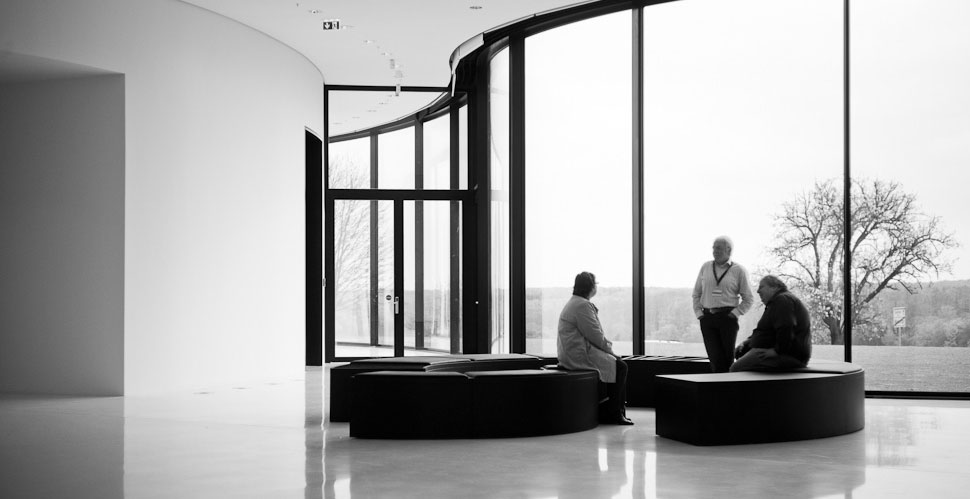
All this to arrive at a comparison of the Leica M3 and the Leica M6, the secret pastime activity of many Leica fans. The Leica M6 is a superb, but not perfect creation in comparison to the Leica M3: the rangefinder construction of the Leica M6 is not as robust as the one in the Leica M3 and there is some visible flarein the rangefinder patch of the Leiac M6. A few parts have been made of plastics instead of metal, and the addition of electronics (while extremely reliable) add some risk to the entire construction.
But, it should be noted that the Leica M6 have been able to withstand 22 years as the tool for many professional photographers in war and fashion (two sides of the same coin if you ask me).
Operationally, the Leica M3 is very silent and incredibly smooth. The Leica M3 has more mechanical adjustment options than the M6. The main point however, is that a different manufacturing technique lies behind. In the days of the Leica M3, the machinery of parts had a wider tolerance, and this gap was rectified at the stage of assembly. Many more adjustment possibilities were required, and offered, in the Leica M3 construction and assembly.
In the days of the Leica M6, the machines could work with tighter tolerances, and adjustments during assembly was therefore less required. From an engineering standpoint, one can say that the Leica M6 is a better product than the Leica M3 ... but maybe accept that the Leica M6 lack that mythical aspect of finesse that the M3 user takes for granted.
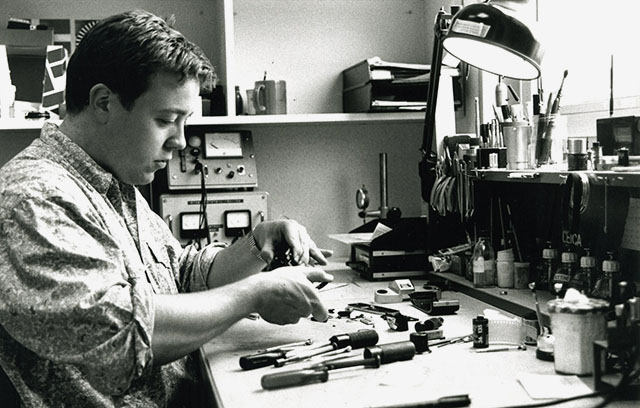
Moving forward to today’s Leica M11 (2022), Leica SL2 (2020) and Leica Q2 (2020), the tolerances of parts are now so tight that it requires much less – almost none – individual adjustment in assembling. It could in theory be done by robots. They are all the same, whereas each Leica in the beginning 100 years ago was the unique work of hand. Technology has slowly made the tolerances tighter and tighter, and thus also made assembly uniform.
When comparing the pressure of the shutter release that is extremely gentle in the M3, one has to realize that in the Leica M6 the release has to cope with more interation because of the activation of the exposure meter.
During the 22 years of production of the Leica M6 body no important changes or improvements were made, partly reflecting the fact that the camera had the right design, partly reflecting the fact that the Leica engineers had preciously little financial possibilities for fundamental research.
The Leica M3 and Leica M6 laid the foundation for today's digital rangefinder cameras, the Leica M8 (2006), Leica M9 (2009), Leica M240 (2012), Leica M10 ( 2017) and Leica M11 (2022).
So, the Leica M6 or the Leica M3? It is still and open question, and then maybe Leica M6J is the answer.
Or a Leica M11J , one could hope (a Leica M11 in the shell of a Leica M3).
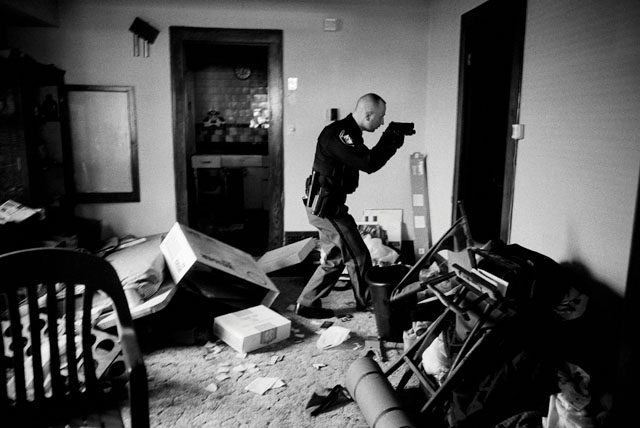
1995 – Leica M6 Classic "Leica Historica 1975-1995"
For the 20th anniversary of Leica Historica (the German Leica collectors society), 150 Leica M6 Classic in silver chrome and blue leather was produced as a limit series. With a matching Leica 50mm Summicron-M f/2.0 lens. Model no. 10 448 (set). These sell for $6,000 - $30,000 in 2022. Model no. 10 421 (body) and 11 836 (lens).
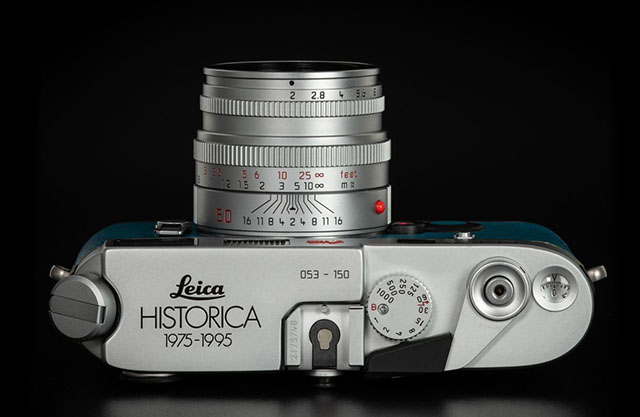
1995 – Leica M6 Classic "Polyphoto Demo Unit"
A limited run of 20 (or some think 90) Leica M6 Classic cameras for the Italian Leica distributor, with an outline map of Italy engraved on the top plate, and the inscription "DEMO UNIT FOR POLYPOHOTO S.p.A.).
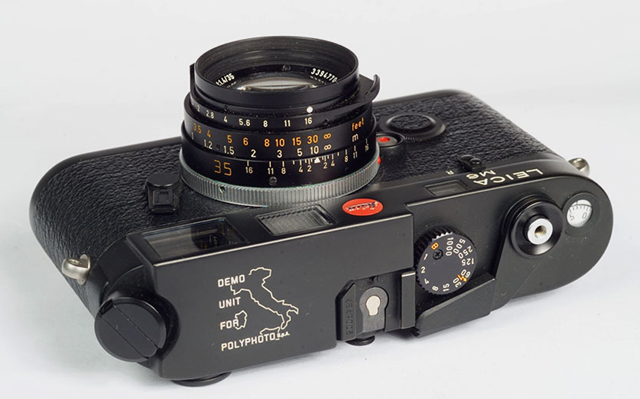
1995 – Leica M6 Classic "Gold Dragon"
A limited editon of 300 sets chrome Leica M6 Classic with matching Leica 50mm Summicron-M f/2.0 lenses commissioned by the Malaysian dealer and Schmidt Marketing in Hong Kong. A golden Dragon forming "China" engraved on the top plate, body warapped in karung skin (sea snake). Model no. 11 834.
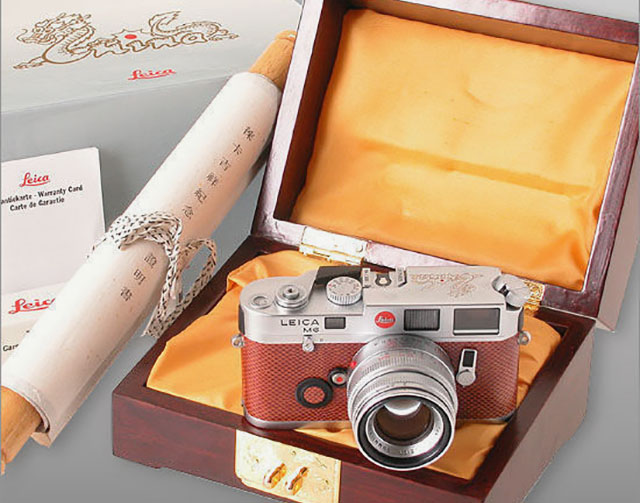
1995 – Leica M6 Classic "Royal Danish Wedding "
The wedding in 1995 of the Danish Prince Joachim with Alexandra from Hong Kong had Leica make a limited edition of 200 Leica M6 with accompanying Leica 35mm Summicron-M f/2.0 lens. The likely reason for this limited edition, I think, is that Alexandra has roots in Hong Kong and this likely made an intersting collectors market amongst Hong Kong fans. (When the Crown Prince Frederik of Denmark married Mary from Tasmania in 2004 there was no special editions made). Model no. 10 444 (set of lens and camera), model no, 10 423 (body only) and model no . 11 838 (lens).
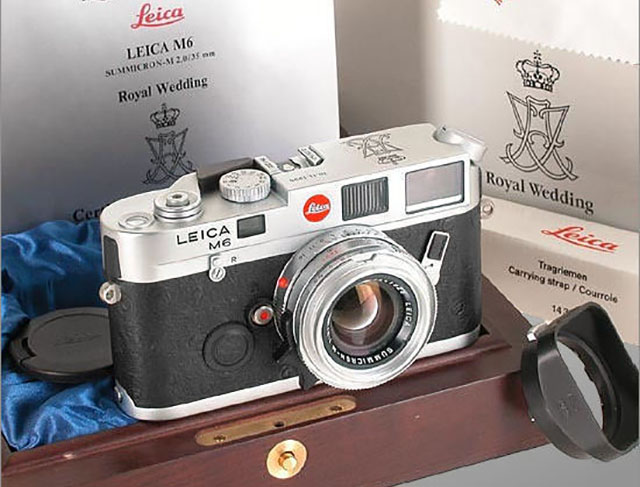
1995 – Leica M6 Gold 'King Bhumibol of Thailand'
A limited edition of 700 24-carat gold-plated Leica M6 in red covering, and with accompanying Leica 50mm Summicron-M f/2.0 lens to celebrate the 50th anniversary of the coronation of His Majesty King Bhumibol Adulyadej of Thailand (who happened to be a big photo enthusiast and even appeared on postage stamps wearing a camera). There is a YouTube video on this camera here .
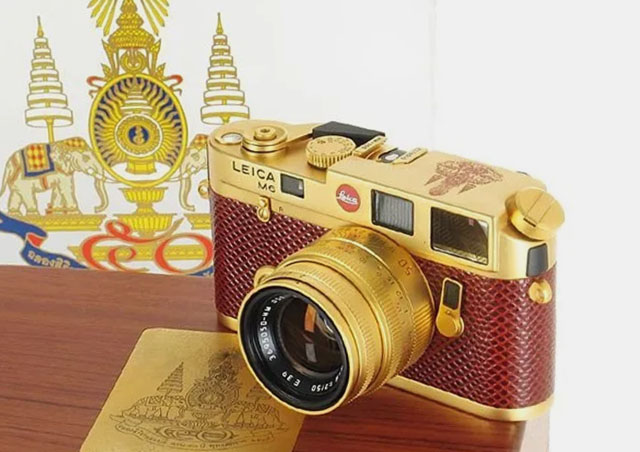
Advertisement:

1995 – Leica M6 Platin " Sultan of Brunei "
A limited edition of 250 cameras in platinum for the Sultan of Brunei with Leica 50mm Summilux-M f/1.41.4 with built-in lens hood. Another batch of platinum plated cameras exist as well, with a diamond on the top plate of the camera (above the Leica red dot) and with a matching Leica 35mm Summilux-M ASPH f/1.4 lens. An engraving ont he back of the camera says, "15th July 1996. In Commemoration of the 50th Birthday of His Majesty Sultan Haji Hassanal Bolkiah Mu'izzaddin Waddaulah, Sultan Dan Yang Di-Pertuan Negara Brunei Darussalamea".
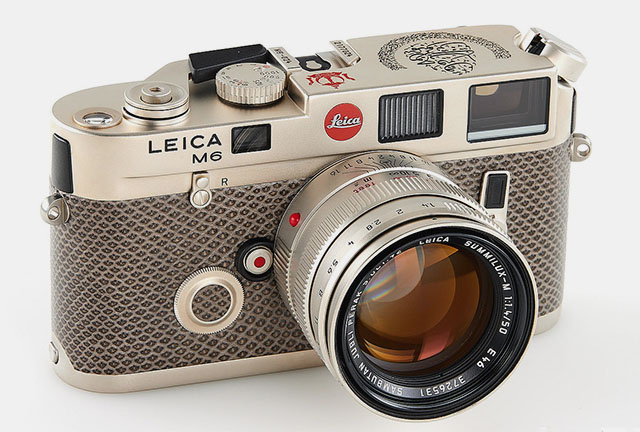

1996 – Leica M6 Classic "Partner-Aktion Deutschland "
A limited edition of 70 cameras as demonstration cameras for German dealers (and also some Leica R7 bodies have been made with this engraving).
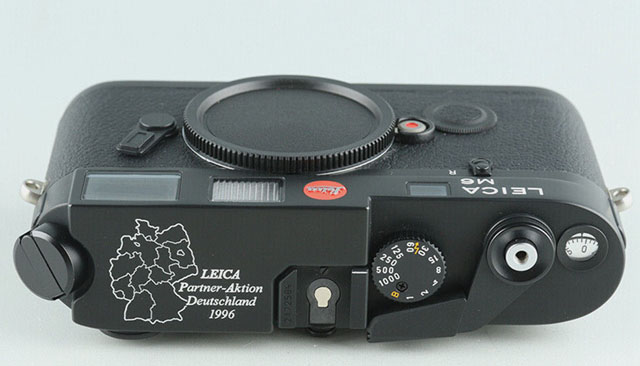
1996 – Leica M6 Classic "Benelux"
A series of 94 chrome Leica M6 Classic cameras delivered as demo cameras to dealers in Belgium, the Netherlands and Luxembourg. These sell for around $3,500 second-hand in 2022.
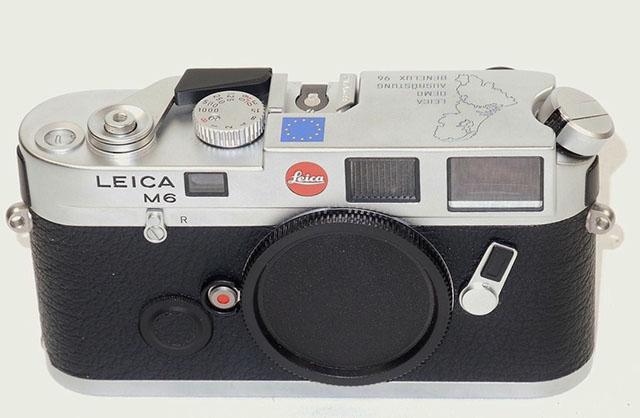
1996 – Leica M6 "Ein Stück Leica"
A limited edition of 996 sets produced to mark the Leica stock market flotation. With matching 35mm Summilux-M f/1.4. Body with cowhide covering with the Leica script all over it. Model no. 10 496 (set).
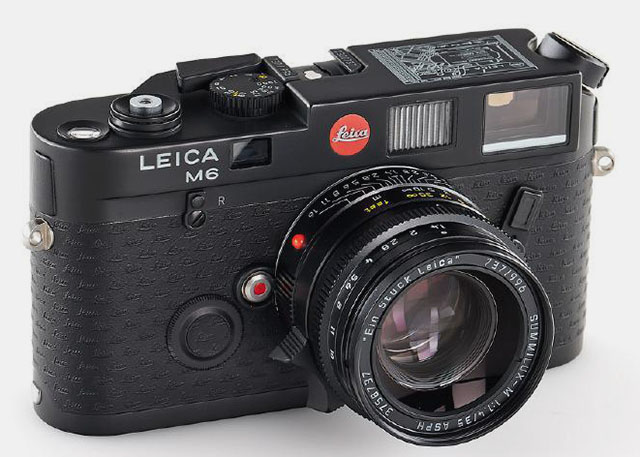
1996 – Leica M6 Gold Sultan of Brunei / Platinum
A fine and rare gold plated and diamond-set Leica M6 in a limited edition of 125 sets to celebrate the 50th birthday of the Sultan of Brunei on July 15, 1996. This comes with a Leica 50mm SummicronM f/2.0 gold-plated lens with the end-cap decorated with sultan of brunei emblem. Another order to celebrate the birthday was 250 in platinum finish (125 of them with diamond as well). The platinum cameras were covered in grey snakeskin and all cameras were engraved with the Sultan's emblem.
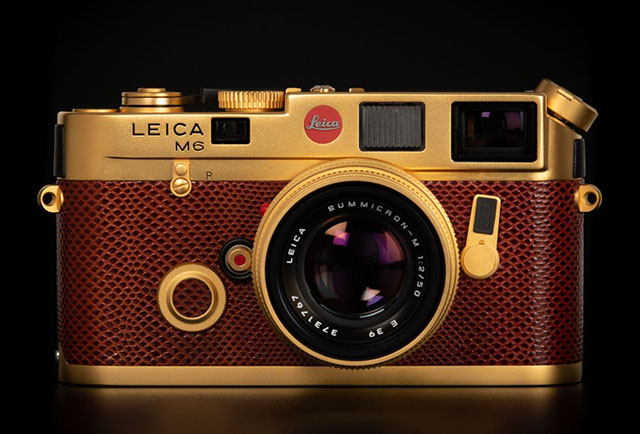
1996 – Leica M6 Classic Platin "Schmidt Group 100 Years"
Limited edition of 150 sets with collapsible Leica 50mm Elmar-M f/2.8 lens to celebrate Schmidt Marketing's 100 year anniversary. Schmidt Marketing was the Leica distributor for many years in Hong Kong and Asia. The serial numbers were up to special number 188 (as Schmidt was omitting all numbers containing 4, which is considered unlycky number).
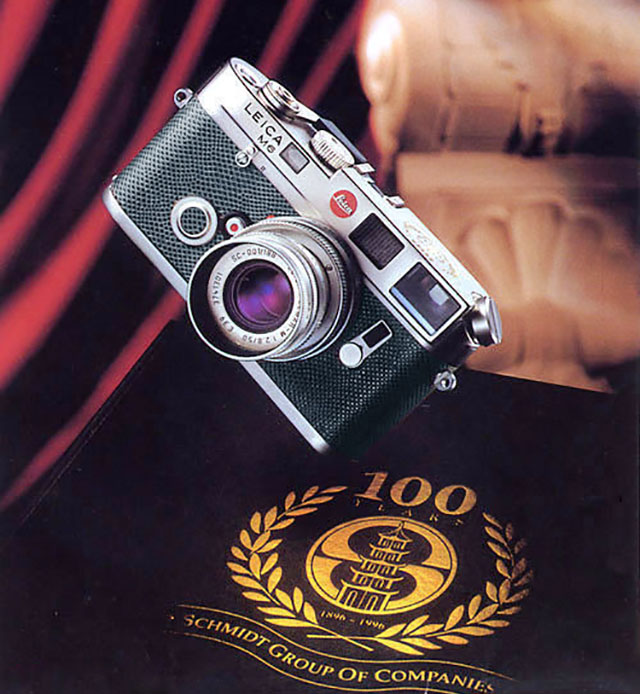
1997 – Leica M6 Classic Platin "Anton Bruckner"
Limited edition of 200 cameras, blue iguana (lizard skin) on platinum with collapsible 50mm Summicron-M f/2.8 in honor of Anton Bruckner was an Austrian composer. Sells for around $8,000 in 2022. Model no. 10 454 (set). Set Model no. 10 425 B(body) and 11 839 (lens).
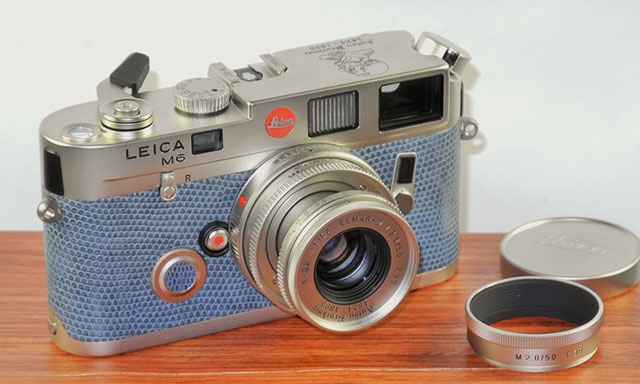
1998 – Leica M6 Classic with 0.85 viewfinder magnification
A 0.85 viewfinder version was available 1998-199 of the Leica M6 Classic. With 0.85 written in the silver band on the front of the viewfinder. rame lines for 35, 50, 75, 90 and 135mm lenses. Model no. 10 413 (black).
1998 – Leica M6 TTL (second generation Leica M6)
Here it comes, the second version of the Leica M6, the "TTL" model which was produced from 1998 to 2002. 0.72 viewfinder: Model no. 10 433 (black) and 10 434 (chrome), 0.85 viewfinder: Model no. 10 436 (black) and 10 466 (chrome). 0.58 viewfinder: Model no. 10 475 (black) and 10 474 (chrome) (2000 – 2002)
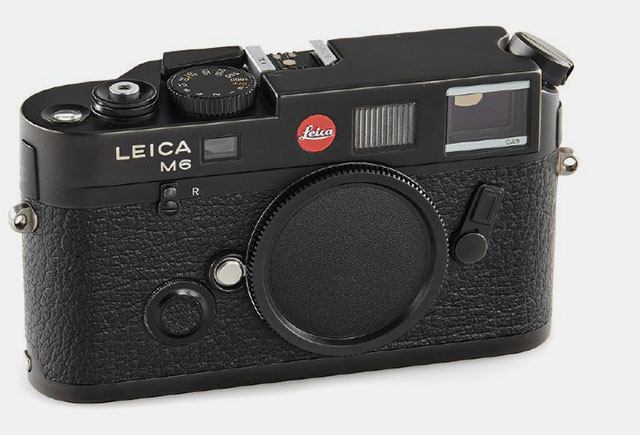
1998 – Leica M6 Classic "Jaguar XK50"
A very limited and exclusive version of the Leica M6 to celebrate the 50th anniversary of the Jaguar XK (1948-1998). Chrome Leica M6 body with British Racing Green conolly leather. Matching Leica 50mm Elmar-M f/2.8 collapsible lens with the engraving on the front "JAGUAR XK50 00/50". Presentation box of elm-burr veneer like the Jaguar's dashboard . Model no. 10 469 (set). The set sells for $15,000 and above in 2022.
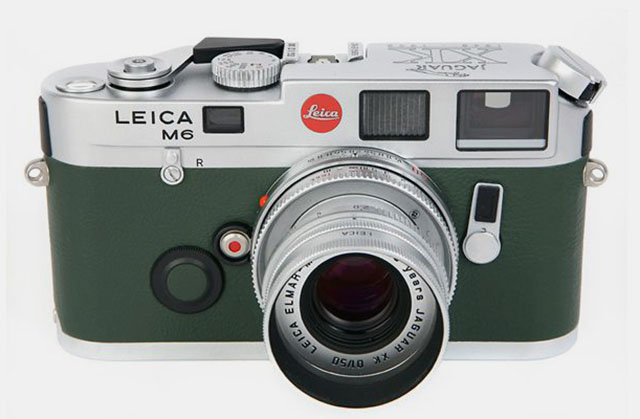
1999 – Leica M6 Classic Platin "150 Jahre Optik"
A limite dedition of 150 cameras to celebrate the 150th year of the foundation of Carl Kellner's Optical Institute in July 1849. Each camera is engraved with one of the years from 1849 to 1999 along with the name and optical diagram of the matching lens. Each 30 years group of cameras was supplied with a different lens. The set sells for $12,000 and above in 2022. Model no. 10 484 - Elmar 2.8/50mm (1849-1879) . Model no. 10 483 - Summicron-M 2/50mm (1880-1909) . Model no. 10 482 - Summilux-M 1.4/50mm (1910-1939) . Model no. 10 481 - Summicron-M 2/35mm (1940-1969) . Model no. 10 480 - Summilux-M 1.4/35mm (1970-1999).
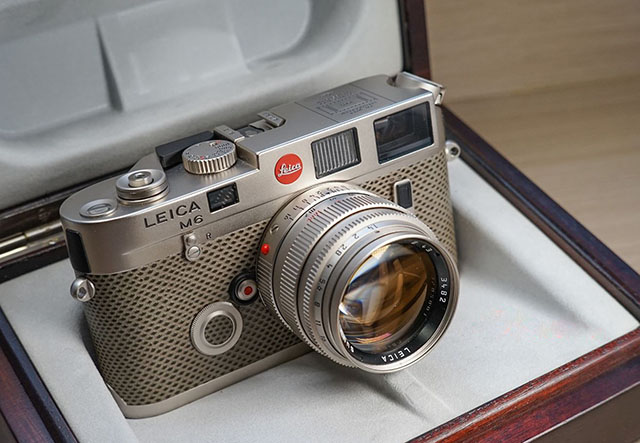
1999 – Leica M6 TTL "Kanto" ICS
The well-renoved and highly loved Japanese repair shop Kanto Camera ordered 100 cameras with 0.72 magnification and Summicron-M 2/50mm lenses. ICS wasn engraved on the back of the camera. Kanto Camrea does a lot of custom paint jobs of Leica cameras and lenses.
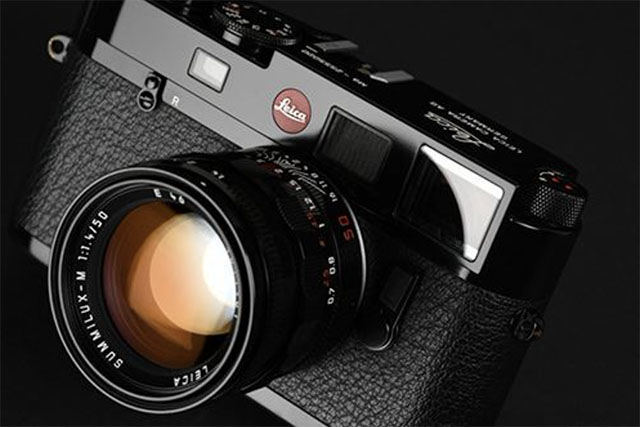
1999 – Leica M6 TTL Black Paint "Millenium"
A series of 2,000 Leica M6 TTL in black paint with matching black paint 35mm Summicron-M f/2.0 and 50mm Summilux-M f/1.4 . The Rewind know shaped as on the M3/M2/M1. Model no. 10 442. The kit sells for $20,000-$25,000 in 2022.
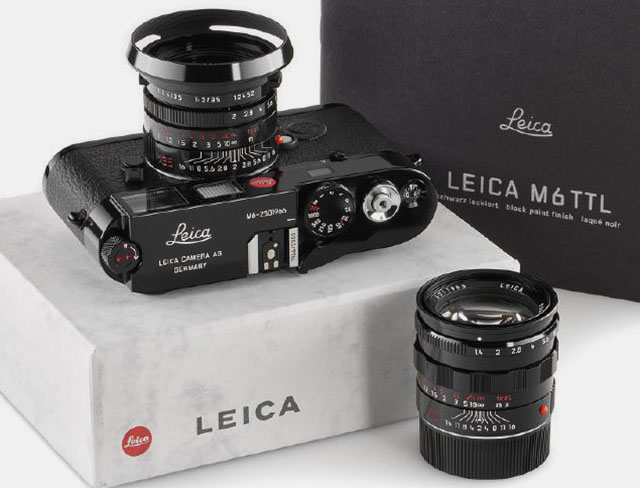
2000 – Leica M6 TTL Safari Green
After Leica announced their black paint Millenium M6, a special order was placed by a Hong Kong dealer for 300 green paint cameras. The Rewind know shaped as on the M3/M2/M1. Model no: 10 478 Body Only 300 pieces were made comparing to the 2,000 pieces of the M6 TTL Black Paint Millennium.
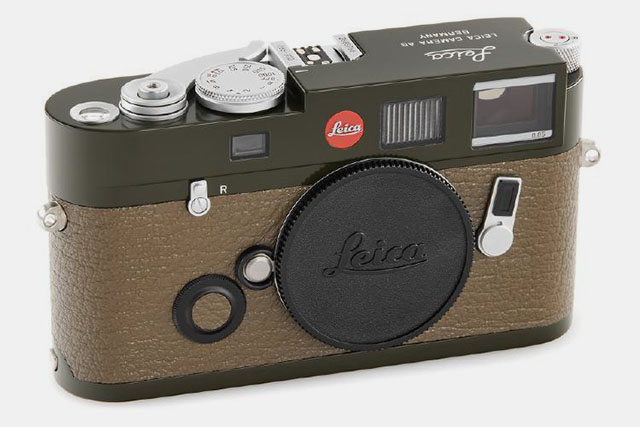
2000 – Leica M6 TTL "NSH"
The Japanese Leica distributor NSH (formerly Siber Hegner) commissioned 400 of their own version of the black paint Leica M6 TTL with 0.85 viewfinder. The Rewind know shaped as on the M3/M2/M1. Model no. 10 477 Body. These sell above $10,000 in 2022.
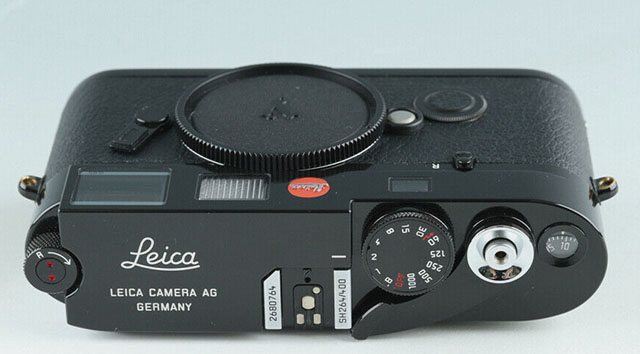
2000 – Leica M6 TTL "Test the Best "
Swiss demonstration camera with 0.72 magnification. Only 40 pieces have been made. The camera is engraved with an outline map of Switzerland.
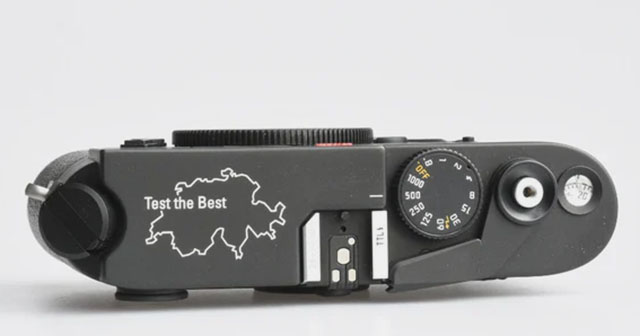
2000 – Leica M6 TTL Black Paint LHSA
A limited edition of 650 cameras with 0.72 and 500 cameras with 0.85 viewfinder for LHSA (Leica Historical Society of America). 60 of the 0.85 cameras have been converted to 0.58 viewfinder cameras. Black Leica dot and "LHSA SPECIAL EDITION" engraved on the back. Model no. 10 443 (body 0.72) and Model no. 10 479 (body 0.85).
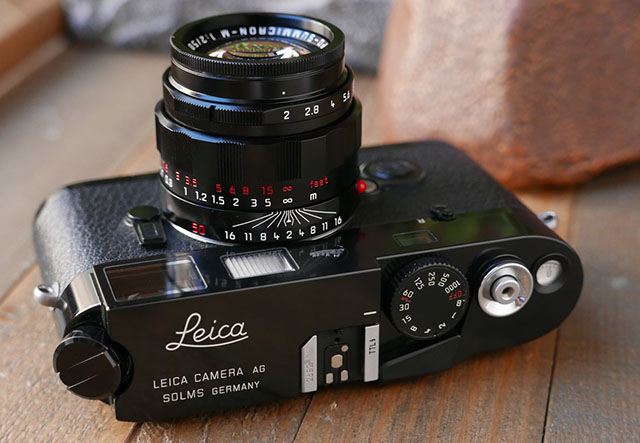
2000 – Leica M6 TTL Black Paint "Øresundsbroen "
A limited edition of 150 cameras with 0.85 viewfinder magnification was commissioned by Nordisk Foto Import A/S in Denmark (Scandinavian distributor of Leica) to commemorate the opening of the bridge between Denmark and Sweden, the then longest bridge in the world. The bridge engraved on the back as well as "ØRESUNDSBROEN 2000". 50 cameras were sold as body only, 25 with a special 35mm Summicron-M f/2.0 black paint, and 75 with a special 50mm Summilux-M f/1.4/ black paint. Model no. 10 492 (body).
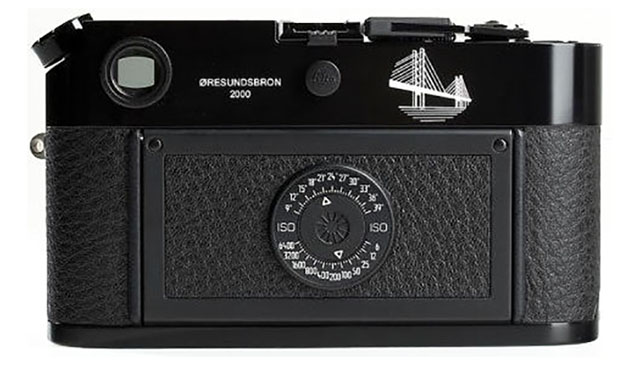
2000 – Leica M6 TTL Black Paint "Dragon 2000"
Limited edition of 500 Black Paint versions with 0.85 viewfinder for the chinese market. No "Leica M6" engraving on the front, and a chinese symbol and 2000 engaved on the back, along with the serial number xxx-500. Leica logo engraved on top with "LEICA CAMERA AG GERMANY". These sell for around $10,000 in 2022.
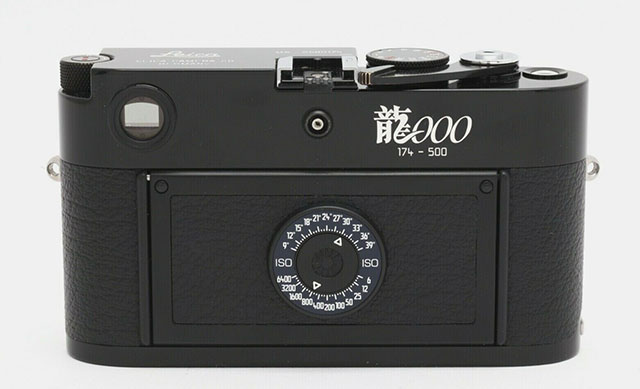
2001 – Leica M6 TTL "Hansa"
Japanese Hansa commissioned 100 cameras with 0.72 viewfinder in chrome, with matching 50mm Elmar-M f/2.8 lenses to celebrate their 80th anniversary. No engraving on the front, Leica logo engraved on top plate along with "LEICA CAMERA AG GERMANY". Model no. 10 493.
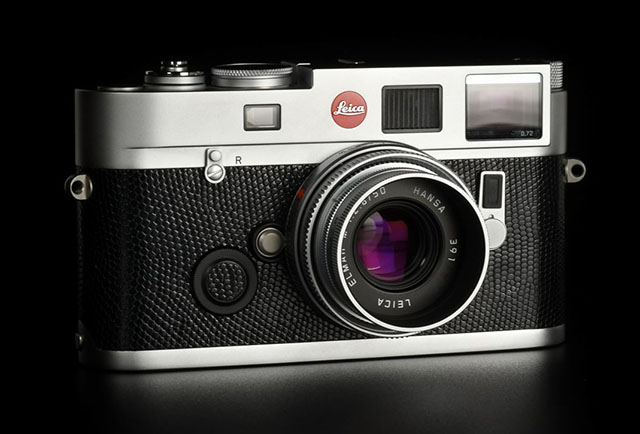
2001 – Leica M6 TTL Sheikh Saud Bin Mohd. Al Thani 0.85
A very limited edition of only 16 cameras with orange leather covering and engraved top plate with "Sheikh Saud Bin Mohd. Al-Thani " , and with matching Leica 50mm Summilux-M f/1.4 for presentation to the winners of the Sheikh Saud Photography Competition Qatar in the period 2002-2017.
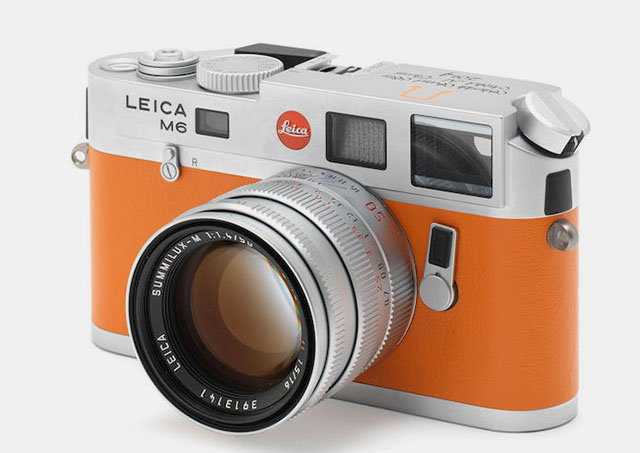
2002 – Leica M6 TTL Titanium
A limited editon of 1,000 titanium-plated Leica M6 TTL cameras with 0.72 viewfinder and buffalo leather covering. At the same time, a limited edition of 500 titanium-plated Leica 35mm Summicron-M ASPH f/2.0 lenses and 500 titanium-plated Leica 90mm APO-Summicron-M f/2.0 lenses.
Model no. 10 435 Titanium Body 0.72
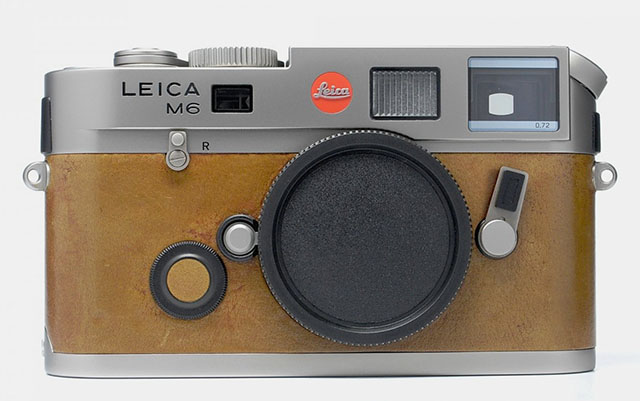
2002 – Leica M6A (Leica M7 prototype)
Not a model for sale or one put in production. This was the name of the prototype of the next model, the Leica M7 with exposure automatic.
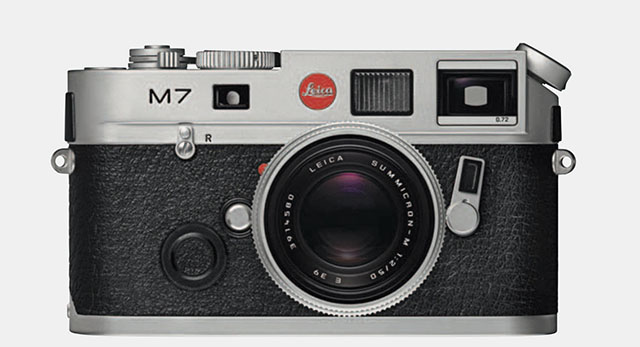
2003 – Leica M6 TTL "Die letzten 999 Leica M6 "
In January 2003, 18 years after the release of the Leica M6, Leica announced the end of their production line of the Leica M6, making a series of 999 cameras to end it with a bang. These are semi-collector items and sell in the range of $7,000 in year 2022. Model no. 10 542 Black Body 0.58 and no. 105 43 Chrome Body 0.58. Model no. 10 544 Black Body 0.85 and no 10 545 Chrome Body 0.85.
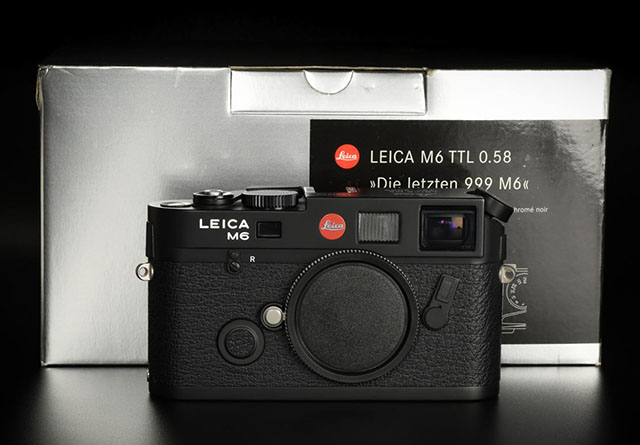
2022 – Leica M6 "Reissue"
On October 20, 2022 , Leica Camera AG reissued the Leica M6 with "Leitz" red dot logo and small shutter speed dial. The viewfinder has been updated to have a battery indicator LED lamp (is on as the only LED light if battery is low), next to the exposure tow with arrow left/right. The battery compartment fits two silver oxide button cell batteries (PX76/SR44) or one lithium battery like the one that comes with the camera ( DL1/3N )
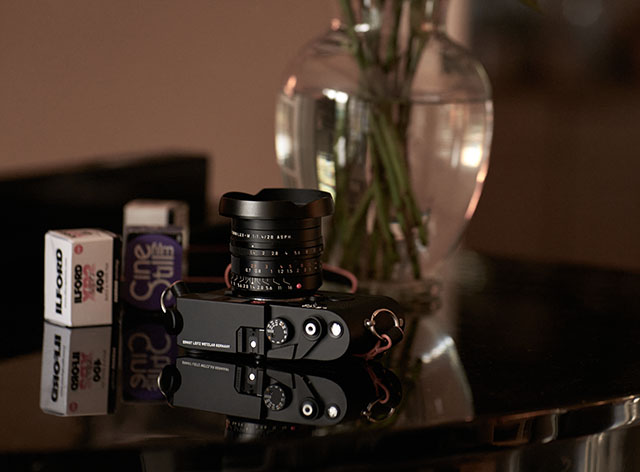
The Leica M family tree
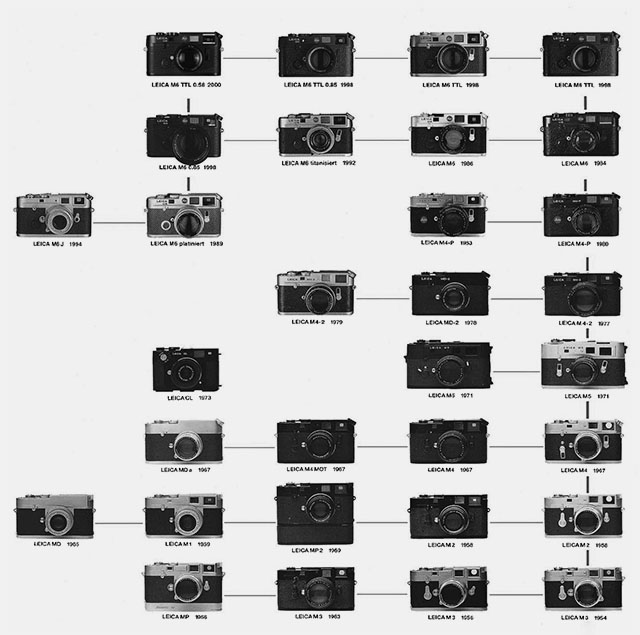
How to buy a second-hand Leica M6
When in the market for a used Leica M6 for practical use, pick a standard M6 in silver or black. If you just want a grat historic film camera, no reason to get fancy and make it complicated.
- First, look for cosmetics. How does the camera look? If there are heavy bangs, it shows accidents or abuse. Rewind crank should be parallel with the body (when you look at the camera from the back). Check inside the film department if it is showing brass or is damaged. It if looks good, there is a good chance it is a good sample.
- Check the mechanics. Check the slow speeds if they seem accurate. Those are the most delicate, and if they are ok, the faster speeds 1/125, 1/500 are likely ok too. If not, it needs adjustment.
- Check that the shutter works and looks to work all right. Listen to it, and look through the camera as you fire it. The shutter should be a moving light stripe. If not right, it needs CLA.
- Frame selector: When you move it, it should work with clicks and you should see the frames change inside the viewfinder change with the clicks. If sticky or not changing, it needs CLA.
- Check the frame counter. Make sure it moves forward when you take photo, and then reset it and check it goes back to zero. If not, it needs CLA.
- Check the viewfinder. Use a flashlight or smartphone flashlight to see the horrifying details that show when you put that much light through. Don’t be alarmed by dust, but look for coating errors (brown spots) which is a no-no. Also, if there are signs of fungus it’s a no-np, you don’t want fungus anywhere near your other equipment.
- Check the electronics. Open the battery department and check for corrosion. Small amounts can be cleaned out fairly easily. Then check that the light meter is within ½ stop of accuracy. Not that easy, but use a grey card in front of the camera lens, and use an external light meter to measure the light falling onto the grey card as well. Should match.
How to service or repair a Leica M6
Any camera is doing better after a CLA (Cleaning, Lubrication, Adjustment), and a classic and widely used camera as the Leica M6 can be serviced many places. Here is an incomplete list, feel free to send me more names and I will include them:
International: Leica Camera AG in Wetzlar, email [email protected]
USA: Gus Lazarri at TLC Camera Repair in NC. https://tlccamerarepair.com Don Goldberg at DAG camera in WI. https://www.dagcamera.com Sherry Krauter at Golden Touch Camera in NY. http://www.sherrykrauter.com Youxin Yue at YYE Camera in MA http://www.yyecamera.com
Hong Kong: Mr. Lo Kwok Wah, room 1303, Lee Wai Commercial Building, 1-3A Hart Avenue, Tsmi Sha Tsui, Kowloon, Hong Kong
Australia: Camera Electronics, Perth.
Japan: Leica Store Ginza, Tokyo.
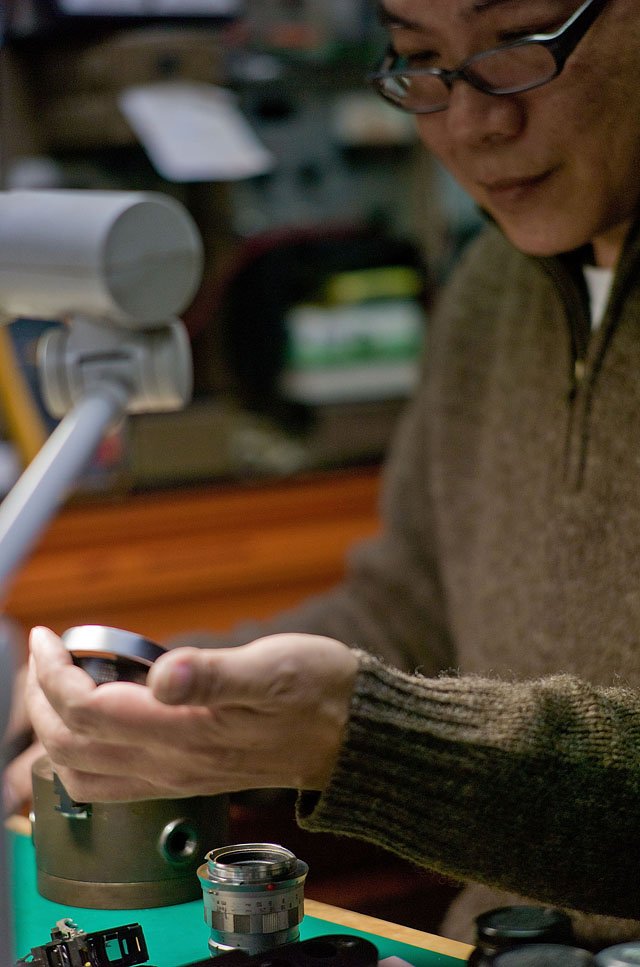
The light meter of the original Leica M6
The light meter’s photo cell reads light coming through the lens that is reflected off of the 12mm diameter circular white patch on the shutter curtain.
According to Leica, the M6's meter is based on a spot in the center of the viewfinder covering between 23% and 66% of the field of view of your lens. These diagrams from the M6 manual put that into perspective:
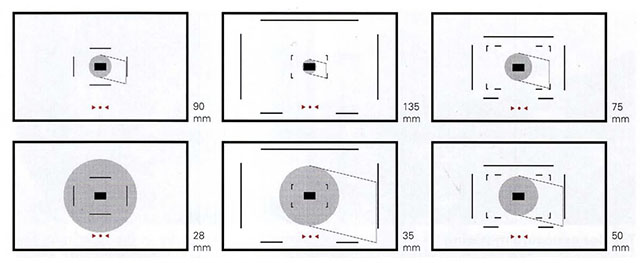
Link to the Leica M6 TTL manual as PDF from overgard.dk

Leica M10: Another camera borrow from the past
The Leica M10 (2017) digital rangefinder camera with 24MP sensor was the first Leica diigital rangefinder that got slimmed down to a thickness like the Leica M6 and Leica M4.
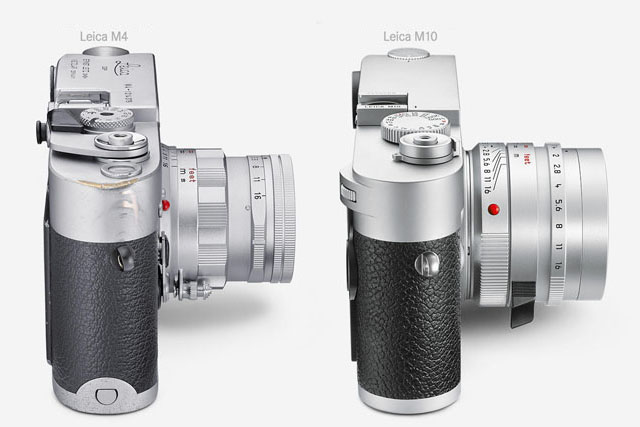
Using ND filters to photograph in sunshine
As the Leica M6's fastest shutters speed is 1/1000 and the lenses offered are often f/1.4, there can be too much light to use the lens wide open.
Then one can turn to using ND filters, which are Neutral Density filters that works like "sunglasses for a lens". A 4-stop ND filter will for example make an f/1.4 lens into a f/5.6 lens: It reduces the light 4 stops, and thus you can use the lens at f/1.4 even in sunshine.
Leica ND filters
Leica Camera AG makes ND filters that are all 4-stop, which is good for Leica M6. Here is a list of their filters:
Leica Neutral Density filters:
Other brand nd filters:.
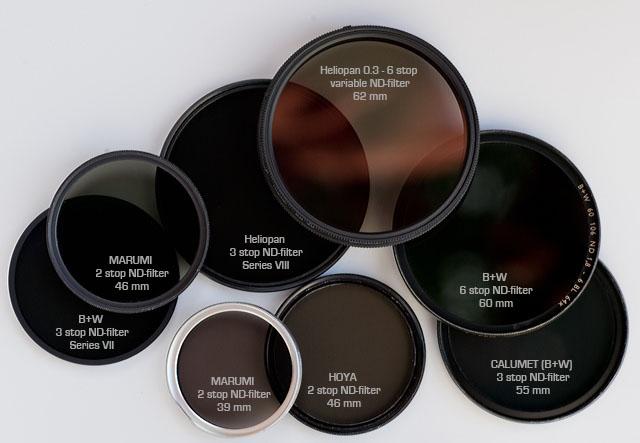
Leica color filters for black and white photography:
Leica also make color filters for black and white film. The prices are in the area of $125 per filter. Some are not produced anymore, and some are still in production/stock. But then there is also a lot of filters available from vintage outlets like Coeln Cameras and similar.
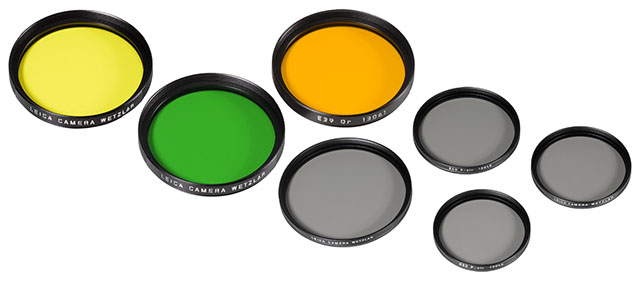
How does color filters affect black and white images?
Here is an article by Jon Sienkiewicz on Shutterbug on what different color filters do for the monochrome image: " Getting Black and White From Color: How To Use Color Filters To Create Monochrome Images " which aplies to both photographing film and digital.
1: = Basically means 1 divided with . On the lens to the right, it means that the diameter of the hole throught he lens is 25mm. We would normall call it a 50mm f/2.0 lens. The writing of 1:2/50 is a tradition from the 1800's of specifying a lens, which reveals quite a bit about the construction: Focal length 50mm simply means that the distance from center of focus inside the lens to the focusing plane (the sensor or film) is 50mm, and the aperture of f/2 or 1:2 means that the diameter of the hole the light comes throught is 25mm (50mm divided with 2 = 25mm). In traditional lens design, one could usually tell from looking at the length of a lens if it was a 400mm, 100mm or 35mm. Newer designs with mirrors (in tele lenses) and more corrections (in wide lenses) can make the size of the lenses shorter or longer, but the distance from center of focus to sensor in a modern 50mm lens will still be 50mm for a 50mm and 400mm for a 400mm, and so on. See Focal length and Aperture further down for more.
a) 35mm lens is a lens that has a viewing angle of view is 63°vertically, 54° horizontally and 38° vertically within a 35mm film frame or "full-frame" 24x36mm digital format. See Focal length further down. b) 35mm focal length : the distance from center of focus inside the lens to the focusing plane (the sensor or film) is 35mm.
c) 35mm film format (also known as full-frame in digital sensors) was a standard film format that came about in 1892 where the width of the film roll was 35mm, and it's been the most used format ever since. Only a format of 24 x 36mm is used for the photo on the film roll. 35mm film format was first used in 1892 by William Dickson and Thomas Edison for moving pictures with frames of 24 x 18mm, using film supplied by George Eastman (Kodak), and this became the international standard for motion picture negative film in 1909. Later other motion picture formats came about, such as Academy Ratio (22 x 16 mm), Widescreen (21.95 x 18.6 mm), Super 35 (24.89 x 18.66 mm) and Techiscope (22 x 9.47 mm). The inventor of the Leica camera, Oskar Barnack, built his prototype Ur-Leica in 1913 as a device to test film stock and\ motion picture lenses and had it patented. Putting 35mm film format into a small camera gave him the idea "small negative, large print" and he decided to increase the size of each frame on the 35mm film to 24x36mm (for more detail and sharpness), and then invented an enlarger to make large prints from the small negative. The length of a film, 36 pictures, is said to have become the standard because that was how far Oskar Barnack could stretch his arms (when cutting film from larger rolls to put them into film rolls for the Leica camera). d) 35mm equivalent is often given as a standard when talking about lenses in small compact-cameras or large format cameras with other sensor/film format than the 24 x 36mm frame. Example: A camera with a 12 x 18 mm sensor has a 14mm lens on it, and even the lens is actually a 14mm, it is specified as a 28mm lens because the viewing angle that ends up on the sensor is equivalent to a 28mm lens on a 35mm of full-frame camera.
a) 50mm lens is a lens that has a viewing angle of view is 47° vertically, 40° horizontally and 27° vertically within a 35mm film frame. b) 50mm means there is 50mm from the center of focus inside the lens to the focal plane (sensor or film). c) 50mm lens is often compared to the human eye. Not because of viewing angle (how wide it sees) but because of size ratio (how it sees). The 50mm lens is the lens that comes closest to the size that the human eye see things. Whereas the human eye has a much wider angle of view [120-200°] than the 50mm lens [47°].
AOV - angle of view = Is the angle a lens 'see'. A 35mm lens has a 54° angle of view horizontally. Each human eye individually has anywhere from a 120-200° angle of viewn ags.
Aperture = The same function as the iris and pupil has in the eye. The pupil in the eye is the dark circular opening in the center of the iris of the eye, varying in size to regulate the amount of light reaching the retina (the sensor area inside the eye). Aperture on a camera is the f/ stop on the camera that regulates how much light passes through the lens by increasing or decreasing the hole through the lens. On a f/2.0 lens the lens is fully open" at f/2.0. At f/2.8 the aperture inside the lens make the hole through the lens smaller so only half the amount of light at f/2.0 passes through. For each f/-stop (4.0 - 5.6 - 8.0 - 11 - 16) you halve the light. The aperture of the lens is basically the focal length divided with the f/-stop = size of the hole (50mm divided with f/2.0 = the hole is 25 mm in diameter). Besides regulating the amount of light (so as to match the correct exposure), the aperture also affects the dept of field : , which is how deep the sharpness is. To get the sough-after photos with narrow depth of field where the background is blurry, the lens has to be wide open at f/2.0 or so. Stopping the lens down to f/8 or f/16 will result on more depth of field, meaning the background will start becoming in focus. To maintain narrow depth of field, one can use the ISO sensitivity and/or the shutter speed to match the correct exposure (as aperture is only one of three ways to control the exposure; the correct amount of light). ORIGIN: Late Middle English : from Latin apertura, from apert- ‘opened,’ from aperire ‘to open’.
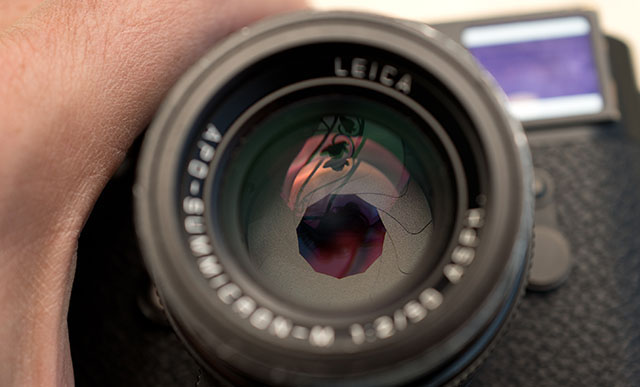
Aperture Priority Mode = When the shutter speed dial on top of a Leica M camera is set to A , it is short for “Aperture Priority” and allows the user to set a specific aperture value (f-number) while the camera selects a shutter speed to match it that will result in proper exposure based on the lighting conditions as measured by the camera's light meter. In other words, you set the aperture as priority (f/1.4 for example), and the camera calculates a shutter speed (1/250 of a second) that matches that. If you change the aperture to f/2.0 by changing the aperture ring on the lens, the camera will re-calculate the speed to 1/125 so as to get the same amount of light to hit the sensor (f/2.0 is half the light through the lens as f/1.4 and 1/125 if twice the amount of light on the sensor as 1/250).
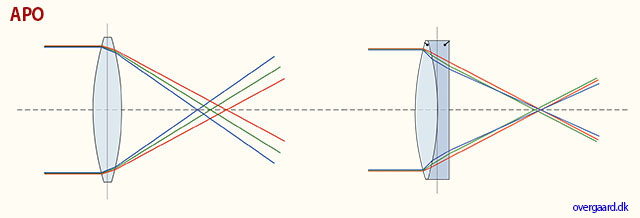
APO = in lens terminology stands for " apochromatically corrected ". In most lenses, optical design concentrates the focus of blue light and green light into a single plane, but red light falls slightly into another plane of focus. In APO lenses, the design and expense has been put in to making red light focus on the same plane as blue and green. Under a microscope you would see that all light subject is now in focus, creating a sharper image overall. Many manufacturers offer APO designs, but in most of these only the very center of the lens is APO corrected. Leica prides itself on making most of the frame APO corrected. APo-correction has traditionally been used for long tele lenses (and periscopes), but in recent years APO-correction has been applied to 50mm and wide angle lenses as well. One will notice that the colors are really bright and alive, almost more real than to the eye, in lenses like the Leica 90mm APO-Summicron-M ASPH f/2.0 and 50mm APO-Summicron-M ASPH f/2.0. Apochromat; ORIGIN early 20th century, made of the two words; apo (Greek origin, away from ) and chromatic (Latin origin, meaing relating to color) .
Archive = The place where one store historical documents and records, and they are organized and kept safe so you can find them again when you need them. For modern digital photography it is usually a hard drive, organized in folders and with keywords, and with a mirrored set of backup hard drives in case somethign happens to the original archive. In classic film photography, the negatives are stored in pockets or envelopes with notes on them to when, where and who, and prints of the pictures are stored in another archive based on year, location, who's in the photos or other system that make sense and make it easy to find things again. The product of being organized is freedom. One could also call the archive for a library (originally from the word 'books', now meaning a collection of films, prints, recorded music, etc., organized systematically and kept for research, sale, printring or borrowing). Another word, in photography, could be stock (as in stock photo ; the picture files or prints kept on the premises of a business or warehouse and available for sale or distribution ). In the 1990's one would find Image libraries which was a business that kept stock of prints and photos from various photographers one could request for magazine use or advertising. You would simply call them and say you need a sunset with a bench, and they would find what might be usefull and send it off to you, and you would pay for the usage of the photo(s) that ended up in final print).
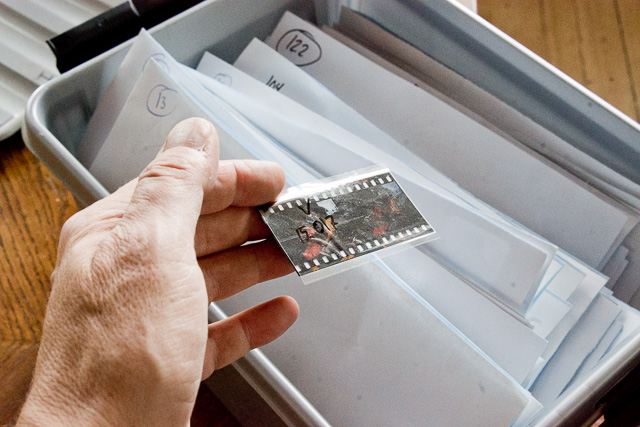
ASPH = (Aspherical lens) stands for " aspheric design ". Most lenses have a spherical design - that is, the radius of curvature is constant. These are easy to manufacture by grinding while "spinning" the glass. This design however restricts the number of optical corrections that can be made to the design to render the most realistic image possible. ASPH lenses ( a-spherical , meaning non-spherical ), however, involve usually 1 element that does *not* have a constant radius of curvature. These elements can be made by 1) expensive manual grinding, 2) molded plastic, or 3) Leica's patented "press" process, where the element is pressed into an a spherical ("non-spherical") shape. This design allows Leica to introduce corrections into compact lens designs that weren't possible before. Practically, the lens performs "better" (up to interpretation) due to increased correction of the image, in a package not significantly bigger than the spherical version.
There is another Aspherical lens manufacture technique: an uneven coating layer is applied to a spherical lens. The coating is thicker on the edges (or on the center, depending). Canon "Lens Work II" calls these "simulated" aspherical lenses. Simulated and Glass-Molded (GMo) asphericals show up in non-L Canon lenses, while the L lenses have actual ground aspheric elements.
A- means non, or without. From Latin, ex. Sphere: ORIGIN Middle English : from Old French espere, from late Latin sphera, earlier sphaera, from Greek sphaira "ball".
Auto - means “self”. The idea is that when a camera has auto-(something), it does that (something) by itself.
Max Berek (1886-1949) was lens designer who joined Ernst Leitz Optische Werke in 1912 and became the head of the microscope development where he also designed the first lenses for the company's new adventure into photography, the Leica introduced in 1925. In particular, he calculated the Elmax 50mm f/3.5 lens for the so-called Ur-Leica .
Bokeh = The visual quality of the out-of-focus areas of a photographic image, especially as rendered by a particular lens: It's a matter of taste and usually photographers discuss a 'nice' or 'pleasant' bokeh (the out-of-focus area is always unsharp, which is why the quality discussed is if one likes the way it renders or not by a particular lens). The closer you get to something, the 'more' bokeh' you get (in that the focus becomes less for the background and foreground at close distances than at long distances). ORIGIN from Japanese 'bo-ke' which mean 'fuzzines' or 'blur.'.

Burning = Expose one area of a photos more (in the development in the darkroom by exposing more light from the negative onto the light-senisitive paper by shading for all other areas than one with two hands forming a hole, or a piece of metal or paper with a hole in it). In modern digital post processing (using editing software liek Lightroom or Capture One Pro), a digital tool "burn" a selected area and makes it darker digitally. (Also see "Dodging").
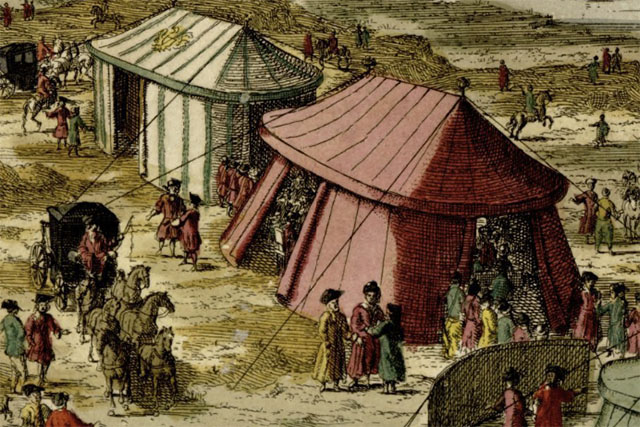
Camera - is today’s short name for Camera Obscura (meaning “a dark room”) . Camera means Chambre and was used only as a Latin or alien word, actually only for Spanish soldiers’ rooms, until popularized in connection with photography in 1727: “Camera Obscura”. In 1793 the slang term “camera” was used by Sterne Tr. Shandy: “Will make drawings of you in the camera” and by Foster (1878), “The eye is a camera”. Camera Obscura was described by Iraqi scientist Ibn-al-Haytham in his book, “Book of Optics” (1021) and by Leonardo da Vinci in 1500; popularized and made widely known in 1589 by Baptista Porta when he mentioned the principle in his book “Natural Magic”. Johannes Kepler mentions Camera Obscura in 1604. Camera = chambre (room), Obscura = dark (or cover) .
CL = C ompact L eicafilm camera (or C ompact L ight measuring). Used to be the name of the Leica CL "Mini M" that Leica Camera AG and Minolta made together in the 1980's. The name CL was used again for the digital Leica CL (2017), which is a digital camera that takes Leica L lenses (made for Leica TL and Leica SL). See my article Compact Leica Cameras for more.
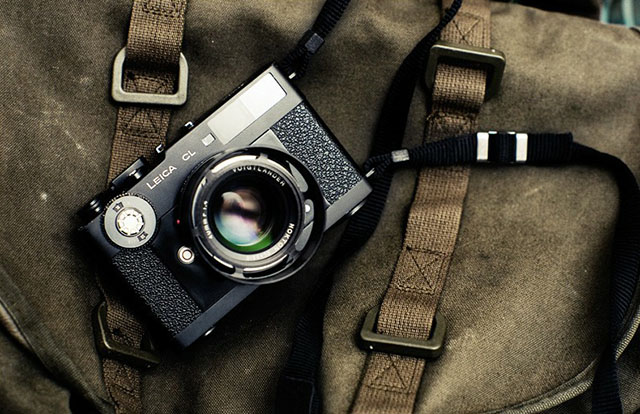
CLA An acronym for "(C)lean, (L)ubricate & (A)djust", whereby the item is merely re-lubricated, fine-adjusted and calibrated rather than repaired. "I just got my equipment back from CLA at Leica"
Collapsible - Usually refers to a collapsible lens such as the Leica 50mm Elmarit-M f/2.8 Collapsible, or Leica 90mm Macro Elmar-M f4.0 Collapsible, etc. A collapsible lens is one that can collaps into a compact lens when not in use.
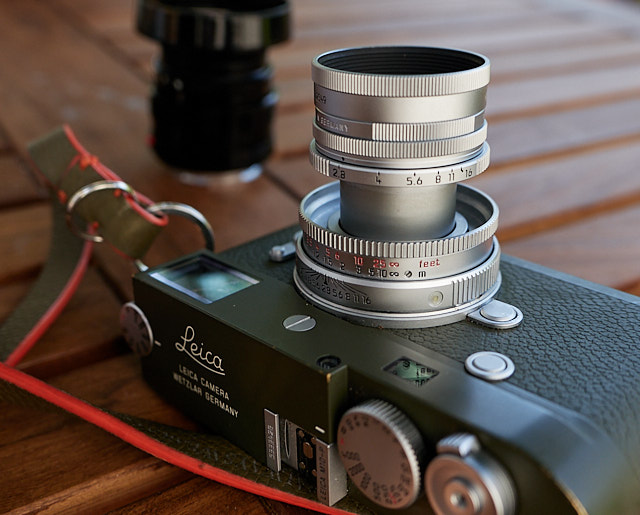
Compact Camera - A camera that is compact, usually the same as a point-and-shoot or beginners camera. See my article Leica Compact Cameras .
Compur Leica I Compur camera (1926-1941) and Leitz Compur 50mm f/3.5 (1938) and Leica Summicron (II) Compur 50mm f2.0 lens (1959). Marketed as the Leica B, collectors have taken to calling it the Compur. It was fitted with a Compur leaf shutter. The Compur is a long-lived series of leaf shutters that were made by the German company F. Deckel AG, based in München.
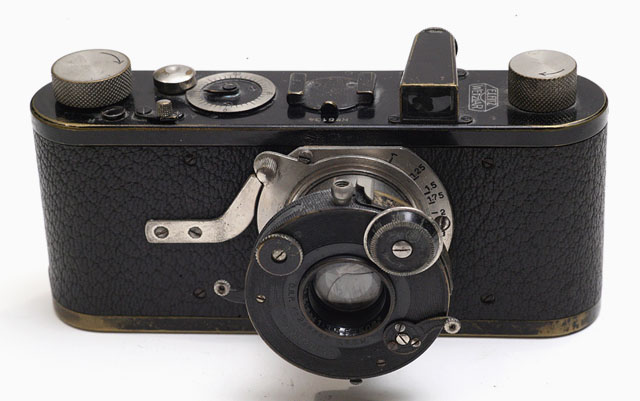
Contrast - The degree of difference between tones in a picture. Latin contra- ‘against’ + stare ‘stand.’
Daguerreotype = Daguerreo pint. The first type of photography camera and photography technique (1939) on metal plates, named after Mr. Daguerreo, and -type means to print ( from Greek tupos ‘ impression , figure , type ’). To make the Daguerreotype image, a daguerrotypist would polish a sheet of silver-plated copper to a mirror finish, treat it with chemicals that made its surface light sensitive. After exposure in the camera, one would wash off the light-sensitive chemicals and add a layer of glass to the metal plate. The photo taken was the original, there was no printing of copies, enlarging or anything (a concept re-invented by Polaroid instant film in 1943).
The artist, scene-painter and physicist Louis-Jacques-Mandé Daguerre (1787-1851) and Joseph-Nicéphore Niépce never had exclusive rights to the process they invented. Instead Daguerre and Niépce received a pension from the French state, which declared photography a gift to the world.
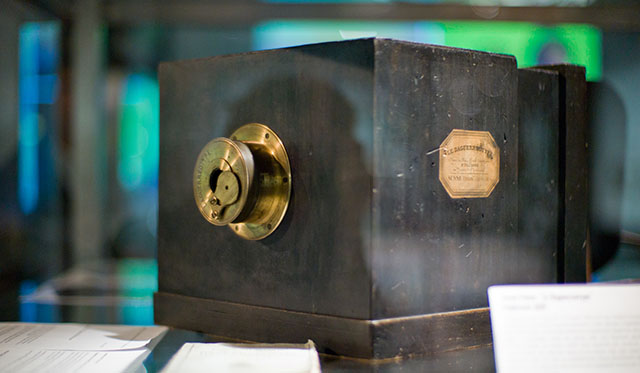
Depth - Distance between front and back. Distance from viewer and object.
Digital rangefinders = The Leica M camera originates from 1925 and have been existing as film camera in many models. From 2006, the first Leica M digital rangefinder was launched, Leica M8. The Leica M7 (2002) is a film camera, so the new mode was Leia M8 and the main difference was that it had a crop digital sensor. The Next Leica M9 had a full-frame 24x36mm sensor. The Leica M240 had many features supposedly requested by users, the most noticeable was live view via a CMOS sensor, electronic viewfinder and video recording. Leica M10 was a return to the original Leica simplicity, including being a smaller body resembling the film cameras, and video and other features and buttons had been removed, a simplified menu created, and most noticeable an ISO dial to set the ISO on a wheel on the top left of the camera, very similar to the similar looking dial on older Leica film cameras where this dial was a rewind function for the film. Leica M11 (2022) was simplified even further, with a new sensor design that was designed to resemble classic color photography closer (Kodachrome and Leica M9 colors), yet featuring new technology such as triple-resolution sensor (where the sensor as a fourth function is also used as light meter), digital shutter and a new design where the battery is part of the bottom plate (no battery door, and no more bottom plate). was the rentwas simply digiral .
Distortion = In photo optics/lenses: When straight lines in a scene don't remain straight because of optical aberration.
Lens designers can correct for distortion to a degree so the whole image field is perfect corrected and all lines remain straight. In modern lens design many designs rely on Software Distortion Correction (SDC).
The eye adjusts for distortion so we always see vertical and horizontal lines straight when we look at things. Even when you get new prescription glasses (if you use such), you will often experience distortion in your new glasses. After a few days they eyes have adjusted for the glasses and the distortion you saw to begin with is now gone. Software Distortion Correction (SDC) is far behind what the human eye can perform of adjustments. (Also see my definition on Perspective for more on the eye and optics)
Dodging = Expose one area of a photos less (in the development in the darkroom by exposing less light from the negative onto the light-senisitive paper by shading for an area with a hand or piece of metal of paper). In modern digital post processing (using editing software liek Lightroom or Capture One Pro), a digital tool "dodge" a selected area and makes it lighter digitally. Also see "Burning")
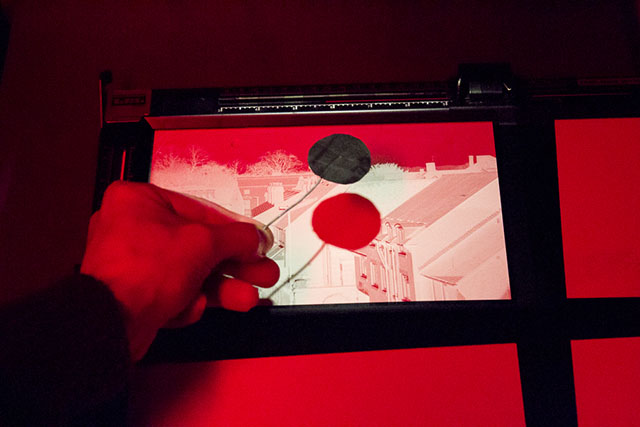
DOF = D epth o f F ield (or D epth o f F ocus), an expression for how deep the focus is, or (more often use to express) how narrow the area of focus is. This is how much of the image, measured in depth or ditance, will be in focus or "acceptable sharp".
The appearance of the DOF is determined by: 1) aperture (the smaller the aperture hole is, the deeper is the depth of field, and opposite, the wider open a lens you se, the more narrow will the DOF be) and 2) distance to the subject (the farther away, the larger area is sharp; the closer the subject in focus is, the more narrow the DOF gets).. The DOF scale measurement on top of the Leica lenses shows lines for each f-stop that indicates from which distance to which distance the image will be sharp. Shallow DOF is a generally used term in photography that refer to lenses with very narrow focus tolerance, like f/1.4 and f/0.95 lenses, which can be used to do selective focus; making irrelevant subjects in the foreground and background blurry so only the subjects of essence are in focus and catches the viewers eye). in modern cameras like the Leica SL2, the camera has a DOF scale inside the viewfinder. As DOF is the same for all lens brands and designs, only depending on focal length, distance and aperture f-stop, the camera can calculate it and show a 'digital DOF scale" in the viewfinder.
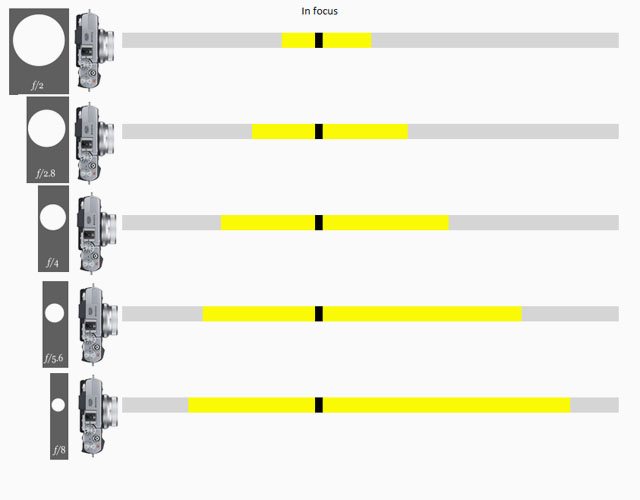
DR = Dual Range lens. This is a type of Leitz/Leica lens that works as macro (near focus range) and normal lens, and comes with googles/"Eyes" for the macro function. The 50/2 Dual Range Summicron was made from 1956 to 1968, only in chrome, with a near-focusing range as close to 478mm.
You mount the googles/"Eyes" to focus at close range. If you use the lens in normal range, you can take off the googles/"Eyes"
The googles/"Eyes" can be critical for which camera the lens fits on. the Leica M6 TTL requires that the plastic tab onthe eyes is removed; and other Leica M models likewise. It fits on the Leica MP, M2, M3 and oterh models. .
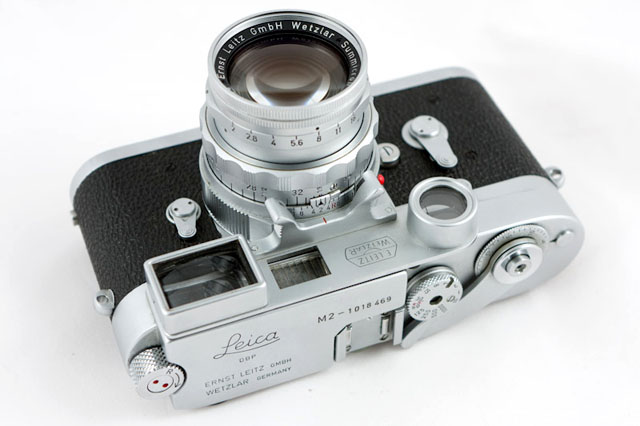
Dynamic range . The grade of ‘contrast range’ (or number of tones) a film or sensor, or simply a photograph, possess between bright and dark tones. The human eye is said to have a dynamic range of 10-14 ‘stops’ (but because we scan area by area and compile a concept of the overall scene, they eye is often thought to have a much higher dynamic range), Film used to have 7-13 ‘stops’ and some modern sensors have up to 15-17 ‘stops’.
E - Diameter in Leica filters and screw diameter, as in E46 which means that the filter diameter is 49mm for this lens. In general language, one would see Ø46 used, as Ø is the general symbol for diameter.
Elcan-M is the name of lenses for M lenses that fits the Leica M system Leica M, as the U.S. Navy High Resolution Small Format Camera System during the Vietnam war.
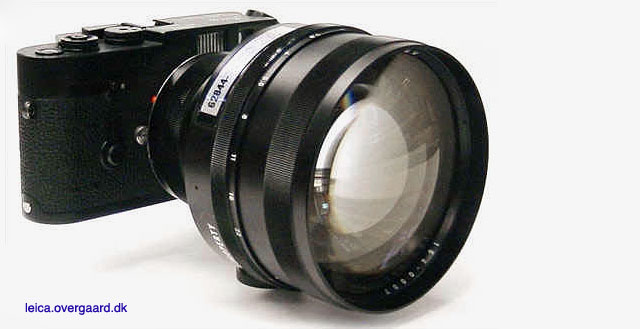
Elmar = Refers to the maximum lens aperture - here f3.5 . Historically derived from the original 1925 50mm f3.5 Elmax lens, which was an acronym of (E)rnst (L)ieca and Professor (Max) Berek, designer of the original lenses. Later that year the 50mm f3.5 Elmar superceded the Elmax, which was discontinued due to its complexity and high cost of manufacture.
Elmarit = Refers to the maximum lens aperture - here f2.8 . The name is obviously derived from the earlier (and slower) "Elmar" designation. Not every f/2.8 lens is called an "Elmarit" though, the most obvious current exception being the 50mm f2.8 Elmar-M collapsible lens which for nostalgia and marketing reasons has kept the original 1930's Elmar name (the 50mm f3.5 collapsible Elmar, manufactured 1930-59, was one of Leica's most famous and popular lenses). Vario- Elmarit (and Vario- Summicron, etc) is Leica Camera AG's name for zoom lenses.
Elmax Elmax lens named after = E rnst L eitz + Max Berak. Ernst Leitz was the founder of Ernst Leitz Optical Industry which later became Leica. Professor Dr. Max Berak was employed at Leica in 1912 and was the architech of the first Leica lens which Ernst Leitz asked him to design for the "Barnack's camera" (the 1913-prototype named after Oscar Barnack who invented it). The lens was a f/3.5 50mm and was known as the Leitz Anstigmat and later the Elmax.
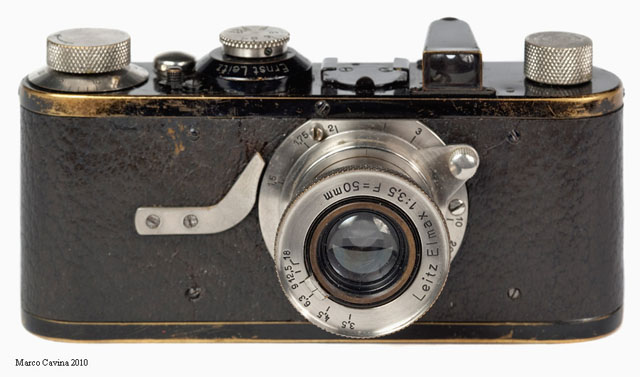
f/ (f-stop, also known as aperture ).
f- (focal length). Often given in mm, for example 90mm. In the past they were often given in cm or inch, for example 9.5 cm or 3.2 inch.
f/1.25 is the size of the "hole through" the lens, the aperture. f/1.25 means focal length divided with 1.25. In the Leica 75mm NoctiluxM ASPH f/1.25 , the "hole through" the lens at f/1.25 is 60mm in diameter. At f/1.4 the "the hole through" is 53.5mm in diameter. At f/4 the "hole through" is 18.75mm in diameter. Each step smaller from f/1.4 to f/2.0 to f/2.8 to f/4.0 and son on is a reduction ofthe light to half for each step. The Noctilux f/1.25 therefore lets 50% more light in through the lens than a 75/1.4 Summilux.
f-stop = the ratio of the focal length (for example 50mm) of a camera lens to the diameter of the aperture being used for a particular shot. (E.g., f/8, indicating that the focal length is eight times the diameter of the aperture hole: 50mm/8 = 6,25 mm); or the other way around, the hole is the focal length divided with 8). ORIGIN early 20th cent.: from f (denoting the focal length) and number . One f-stop is a doubling or halving of the light going through the lens to the film, by adjusting the aperture riing. Adjusting the f-setting from f 1.4 to f.2.0 is halving the light that goes through the lens. Most Leica lenses has half f-stops to enable the photographer to adjust the light more precicely.
Filters = Glass filters you put in front of the lens. A much used filter is the claer UV filter that is supposed to protects the front of the lens. Other filters are color filters that add effects to black and white photography by changing the color balance. Other filters are ND (Neutral Density) filters that reduce the amount of light coming through (used for for example video recordings as video is usuallu filmed at 1/50th second shutter speed and thus most lenses are too bright wide open. Or they are used for long exposure photography in order to record for example stars movements over the sky. Other filters are filters that create star effects, or blur the view, and almost any effect you can think of.
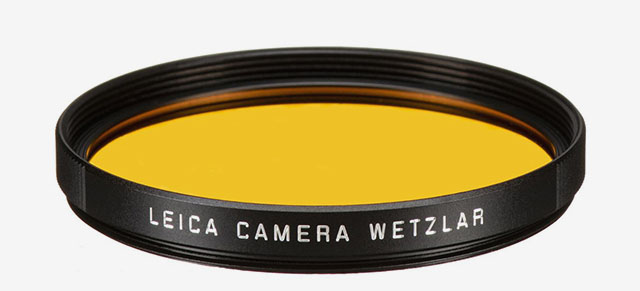
Flare = Burst of light. Internal reflections between (and within) lens elements inside a lens. Mostly, flare has a characteristic "space travel" look to it, making it cool. Particularly in older lenses with less or no coating of the glass surfaces to suppress this, it can be a really cool effect. In newer lens designs, the coatings and overall design try to suppress flare and any reflections to a degree, so that there is seldom any flare to be picked up (moving the lens to pick up a strong sunbeam), but instead a "milking out" (or "ghosting") of a circular area of the frame; meaning simply overexposed without any flare-looking flares.
FLE = See "Floating Elements"
Floating Elements (FLE) = Near focus correction in a lens by having a single lens or a group of lenses floating independently of the other lenses. Most lenses are born with poor performance at their closest focusing distance. Center sharpness may be good, but aberrations and corner softness increase when you’re shooting closeups. Floating elements are lens elements outside of the primary focus group that change position when the lens is focused on a close object, correcting aberrations and improving close up performance. Floating Elements originally was coined by Canon in the 1960's and quickly became the general term for this feature. Other brands came up with new names for the same thing, Minolta called it Floating Focusing , Nikon used the term Close-Range Correction (CRC), Leica call it FLE/Floating Elements. Floating elements are for close-focus improvement of image quality and not for reducing "focus shift". Floating elements by themselves cannot reduce focus shift, but by reducing the impact of focus distance on performance, they give the designers more freedom in other areas - which could include minimising focus shift. (As a side-note, when a lens "rattler when moved, it is not the floating elements "floating around" but can be the IS (Image Stabilization) elements for elense that has that, AF elements for auto focus lenses, or the aperture cage that rattles (as in the case of the Leica 35mm Summilux-M f/1.4 FLE - if you stop down the Summilux to f/16, the sound is usually not there).
Focal length = Originally focal length referred to the distance from the sensor (or film in older days) to the center of focus inside the lens (28mm, 50mm, 400mm, etc). Today one call it effective focal length (EFL) as a 400mm lens is not nessesarily 400mm long due to optical constructions that can make it shorter. The 35-420mm zoom on the Leica V-Lux 1 is for example only ca. 135 mm long. Nobody uses that measurement, except those who construct lenses! For users of lenses, focal length refers to how wide the lens sees. The viewing angle, which is often given in for example 90° viewing angle for a 21mm lens, 74° viewing angle for a 28mm lens, 6° viewing angle for a 400mm lens, etc. Each human eye individually has anywhere from a 120° to 200° angle of view, but focus only in the center.
Leitz Focomat = Darkroom enlargers made by Leica from 1937 to 1958. As you may recall, the concept of the Leica was "small camera, large print". The enlarger is the key to make the small negative into a large print.
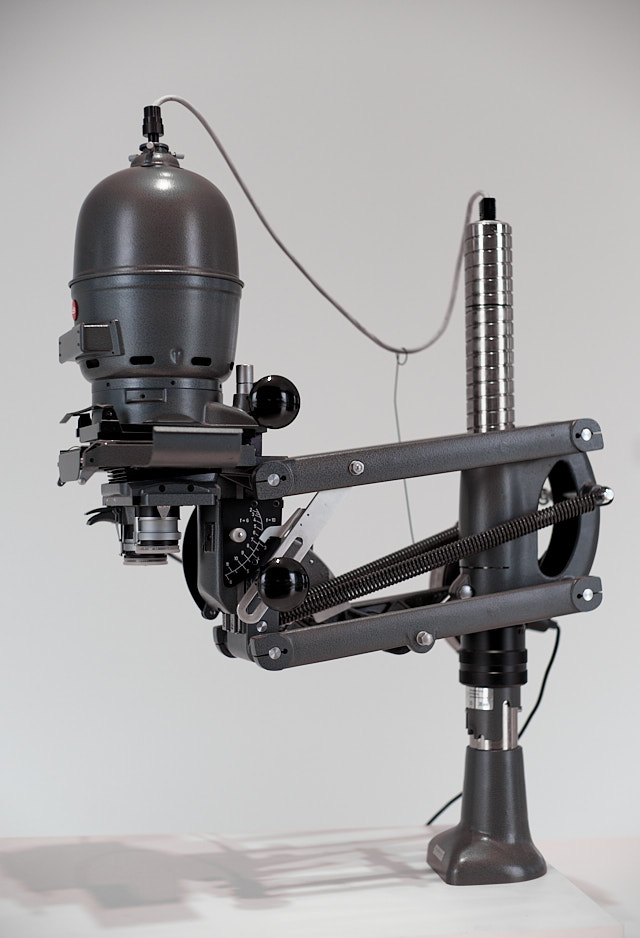
Focus, in - Sharp and clear in appearance. Focus - “The burning point (of a lens or mirror)”. In Latin the word focus meant fireplace or hearth. The word was probably first employed outside of its Latin literal use as “the burning point of a lens or mirror” in optics, and then came to mean any central point. The German astronomer Johannes Kepler first recorded the word in this sense in 1604.
Focus shift = That the focus of a lens shifts as the aperture changes. For example, if one focus a 50mm lens at f/2.0 and then stop the aperture down to f/8, the focus may change, especially noticeable in close focusing. Modern lenses with floating elements (FLE) where the floating elements adjust for image quality in close-focusing may also help avoid focus shift.
Frame lines = the lines inside a viwfinder that indicates the edger of the frame. In a Leica M, the viewfinder always is as wide view as 24-28mm. A mechanical contach on the lens (triggers the camreas frame selector) so the viewfinder shows the frame line of that lens. In the Leica M, the frame lines comes in sets, so there are alwaus twop sets of frame lines shown at any time (see illustration below). (This is different than in most cameras where you only see what the lens captures: SLR cameras was the evolution in 1940's where the image from the lens was displayed directly onto a matte screen inside the camera via a mirror. Later mirrorless cameras, the viewfinder shows the exact picture that the sensor sees through the lens).
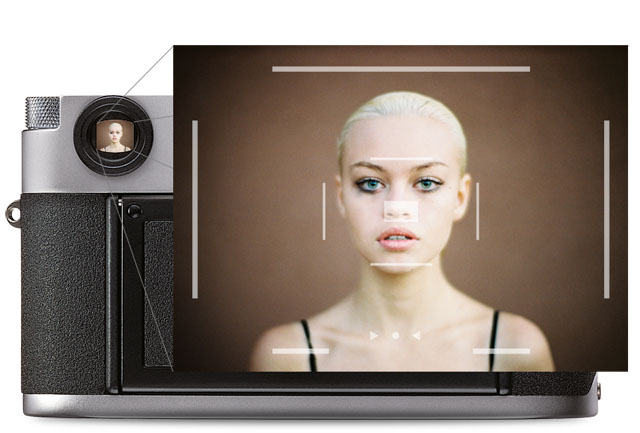
Full Frame (FF) = The size of the sensor is 24 x 36mm which is the format Oskar Barnack and Leica Camera AG invented with the first Leica that was introduced in 1925. Many other formats invented since, such as APS, APS-C and all usually refer to Full Frame ratio, by which it means what size they have compared to Full Frame. The "full frame" technically deifinition thouhg is a sensor that camtures the full frame in one go (as the early sensors as in Leica S1 scanned the image/senor over a period of time). The 24 x 36mm Full Frame format is so "king of photography" that it has continued to be the ideal for all cameras. Besides this, there exists Large Format cameras such as 4x5" (100 x 125 mm) and Medium Forma t 6x6 (60 x 60mm amongst other sizes in that area).
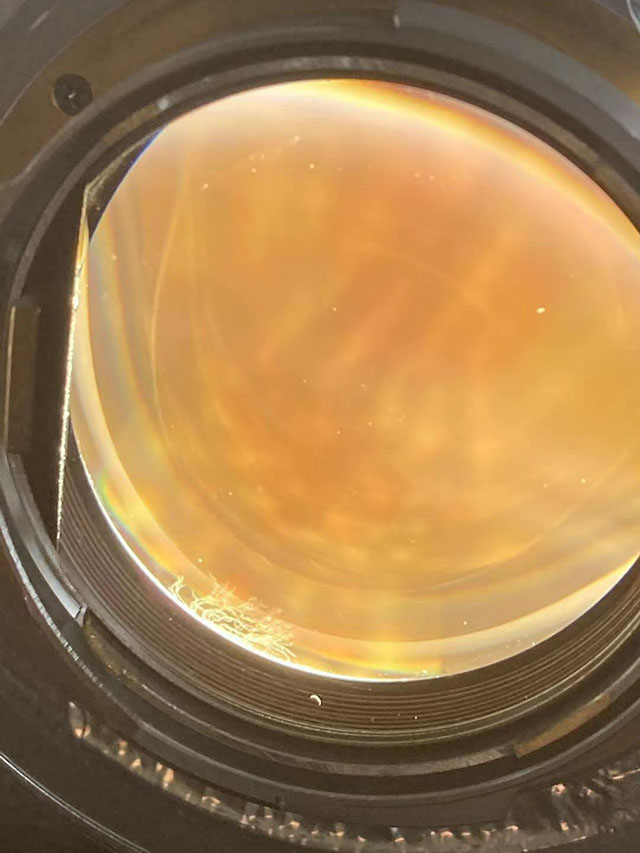
Fungus - Is a living organism that attacks and eat glass in lenses. Usually humid and dark conditions can cultivate it. Lenses and camreas are therefore often kept in dryboxes in Hong Kong, Philippines and similar place, whereas the hot and humid climate of Florida in USA doesn't seem to creaate fungus. Lenses kept in a leather camera bag in a humid attic or wet basement for years, that's also a place that can cultivate fungus. I have occasionally warned against keeping Leica lenses in the leather pouches that are supplied with the lenses. I might be right or not, but I wouldn't keep them in those. Not that I think fungus will develop in normal conditions, but if wetness enters for some reason, the lens is in perfect conditions for cultivating fungus. When you send a lens to Leica Customer Service at the factory in Wetzlar, they inspect for fungus and doesn't allow lenses with fungus inside the repair department. Sometimes they offer to send the lens to a facility in Hamburg that can kill the fungus, but that is for lenes with very little signs of fungus. The fungus "eats" the glass, so once it starts, it create lines, and it continue to spread across the lens surfaces. In short, don't buy lenses with fungus, if you live in areas where fungus is normal to occur, store your equipment in dry box. And if youalready own a lens and discover fungus, see what you might be able to do with experts in the matter. When you use Leica lenses, you use lenses that have no eexpiry for use. Lenses from 1930's are still being sold and used. So any Leica lens has the potential to be used for many years, which is a good reason to make sure you don't get fungus in them. There is an article here at PetaPixel on do-it-yourself fungus removal.
Ghosting (light) = Secondary light or image from internal reflections between (and within) lens elements inside a lens. The reflected light may not always be in focus, so overall it looks like a "milked out" image. A subject in focus has brightened patches in front of it that come from reflections inside the lens. the most elementary look of ghosting is when you look in a rear-view mirror in a car at night and you see doubles of the headlights behind you (a strong one and a weaker one), because the headlights are reflected in a layer of clear glass on top of the mirror glass.
Hektor - Refers to the maximum lens aperture - usually f2.5 (whihc at the time of development in the 1930's was considered very light-strong lenses). The name was apparently taken from the name of lens designer, Professor Max Berek's dog, Hektor. He also had another favorite dog, Rex, which may have inspired the lens name Summarex. But ... there is also another possibility, which is that Hektor (the lens and/or the dog) was inspired by Hektor, the oldest son of the Trojan king Priamos, who is listed in the history books as being the most couragerous defender of his home city, Troy. (Max Berek knew of this because Greek history had been required during his high school education). In any case, the first 50mm Hektor f/2.5 was designed by Max Berek in 1931 for the Leica I Model A, and the - for that time - extremely light-strong 73mm Hektor f/1.9 was designed in 1930-1931 in preparation of the modular Leica system.
Incident light meter = A light meter that measures the reflections off of something. Incident means “falling on something”, from Latin incidere ‘to fall’ and in- ‘upon’. Most cameras have an incident light meter, and what is does is that it measures how much light reflects off a white, dark red, or mixed landscape; and then adjust it to be midddle tone. Thus, if you photograph snow, the images will usually be under-esposed as the meter wants the white snow to be middle tone (50% black), and if you photograph in a dark restaurant, the image will be overexposed because the light meter wants the scene to be middle tone (50% black). For a normal scene in a city with whites, blue sky, people, cars and all, the ligth meter usually gets it right. Thus, as a user of the camera you have to be aware that the light meter doesn't know what you are photographing, so you must do the adjustments in those instances where the scene is not a mix of tones making up middle tone. This is also the portrait of a person with lots of light behind the person, her you must adjust the exposure so the face is corectly exposed and not the overall frame of bright light from behind and the face 'in shadow'.
ISO = Light sensitivity of the camera sensor is given in ISO ( I nternational O rganization for S tandardization). It's a standard that was used in film and is now used in all digital cameras also. The base ISO for the Leica TL2 sensor is around 100-150 which means that this is what the sensor "sees". All other levels are computer algorithms calculating the effect as if the sensor could "see" more (hence noise at higher ISO levels). ISO goes in steps of doubling: When the ISO is raised from 100 ISO to 200 ISO, the camera only need half the amount of light to make the same picture. For each step in ISO to 400, 800, 1600, 3200, etc. the light sensitivity is doubled for the sensor (and the camera sensor only need half the light of the previous ISO to record the same image).
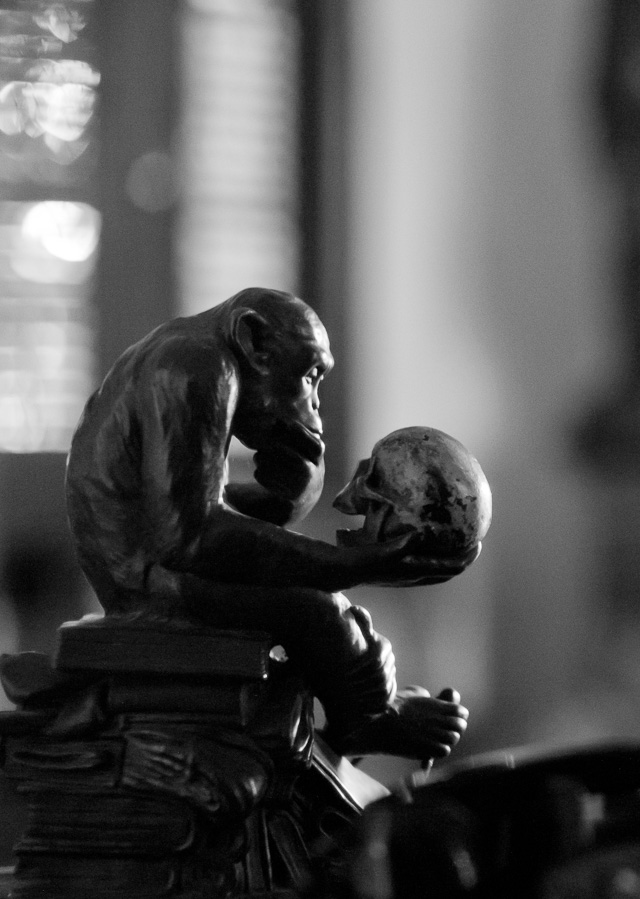
Leica = A compound word derived from " (Lei)tz" and "(ca)mera". Apparently they were originally going to use "LECA", but another camera company already used a similar name in France, so they inserted the 'i' to prevent any confusion. The Leica name and logo is owned by Leica Microsystems GmbH.
Leicaflex was Leica's first s ingle l ens r eflex (SLR) camera, released in 1964. It is a very solid, fully manual SLR with an exceptionally bright viewfinder. The Leicaflex SL and Leicaflex SL2 and Leicafles MOT (enabling attachment of motor winder) came after, and then Leica went onto Leica R3 that it developed with Minolta, then Leica R4, Leica R5, Leica R6.2, Leica R7, Leica R8, Leica R9.
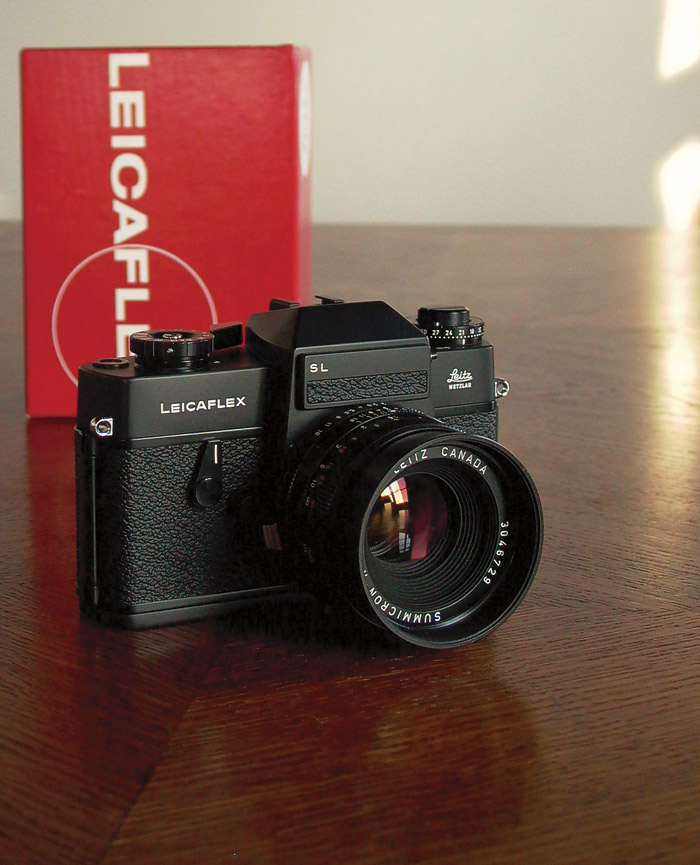
Lens - A piece of glass or similarly transparent material (like water or plastic) that has a shape so that it can direct light rays. The word “Lens” is used both for single piece of glass as well as a camera lens with several lenses that works together. From ‘lentil’ because similar in shape.
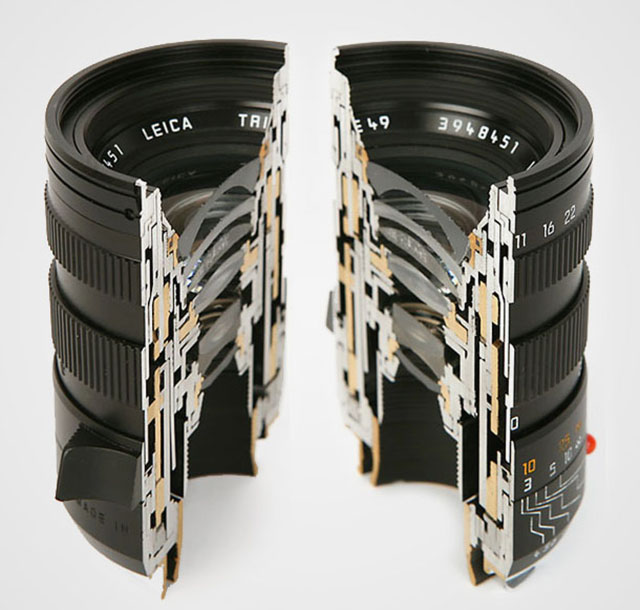
Lens hood = (also called a Lens shade or Ventilated Shade ). A tube or ring attached to the front of a camera lens to prevent unwanted light from reaching the lens and sensor. In the past where lenses were not coated to prevent internal reflections inside the lens, the lens hood was often essential. These days where lenses are coated, the shade serves just as much as decoration and protection (bumper) as well. ORIGIN Old English hod; related to Dutch hoed, German Hut 'hat,' also to hat.
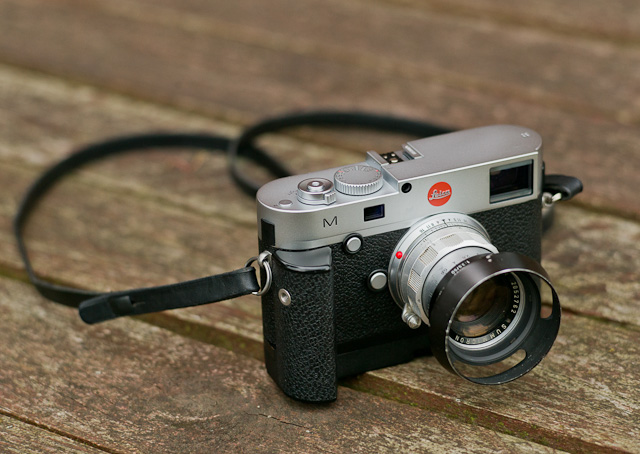
Lens names of Leica distinguish which widest aperture the lens has:
Level Gauge = This is a tool in the viewfinder to see if you hold the camera 100% horizontal and/or vertical. You can turn it on in the Menu > Photo Live View Setup > Level Gauge > On. Before level gauge was integrated as a digitized feature in modern digital camers, it was a Bubble Level Gauge / Spirit Level you put on top of the camera. The idea is to be able to get 100% vertical and horizontal lines (because if you tilt the camera slightly, the horizon will not be horizontal, and of you tilt the camera forward or backwards, the lines of for example vertical buildings will not be vertical.
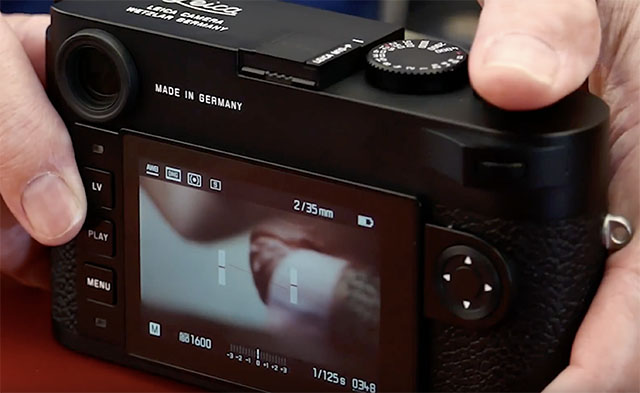
Light = Tiny particles called photons that behaves like both waves and particles. Light makes objects visible by reflecting off of them, and in photography that reflecting off of subjects is what creates textures, shapes, colors and luminance. Light in its natural form (emanating from the sun) also gives life to plants and living things, and makes (most) people happier. So far, nobody has been able to determine exactly what light is. The word photography means “writing with light” ( photo = light, - graphy = writing). Read more about light in my book Finding the Magic of Light .
LMT - Leica Thread-Mount : Also known as M39 , is the screw mounted lenses for Leica cameras. It’s a simple as that; you screw on the lens, and back in 1932, the possibility to change the lens was the big news hwen introduced by Leica on the Leica III. The M39 system was updated with the M Bayonet from 1954 for the Leica M3. The M bayonet is a quick way to change lenses and is the current mount for Leica M digital rangefinders.
M (as in "M3", "M6", "M7" etc.) A) The M originally stands for "Messsucher" , which is German "Meßsucher" for "Rangefinder". The "3" in M3 was chosen because of the three bright line finders for the 50, 90 and 135 mm lenses. Later the numbers of the M cameras were more or less chosen to follow each other. M-body evolution in chronologic order: M3 - MP - M2 - M1 - MD - MDA - M4 - M5 - CL - MD-2 - M4-2 - M4-P - M6 - M6 TTL - M7 - MP - M8 - M8.2 - M9 - M9-P - MM (black and white sensor) - ME (Type 220) - Leica M (Type 240) - Leica M-P 240 - Leica M 246 Monochrom - Leica M-A (type 127, film camera) - Leica M 262 - Leica M-D 262 (without a screen) - Leica M10 - Leica M10-P, Leica M10-D, Leica M10 Monochrom, Leica M10-R, Leica M11 . B) M also refer to M-mount as the M bayonet that couple the Leica M lenses to the Leica M camera. Before the M bayonet the coupling between the camera and lens was screwmount. C) M nowadays refer to the Leica M line of cameras rather than the "Messsucher". (
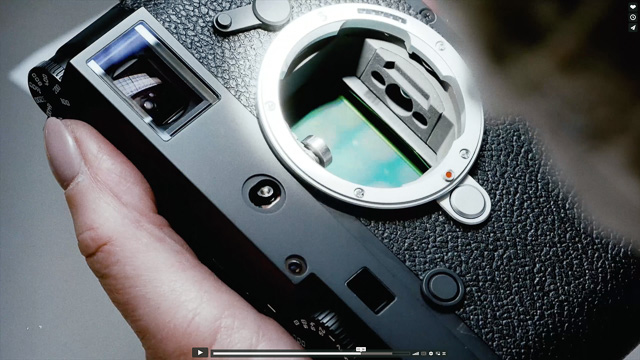
Mandler, Dr. Walter (1922 - 2005) Legendary Leica lens designer and CEO of Ernst Leitz Canada (ELCAN) 1952-1985. Read more in Leica History .
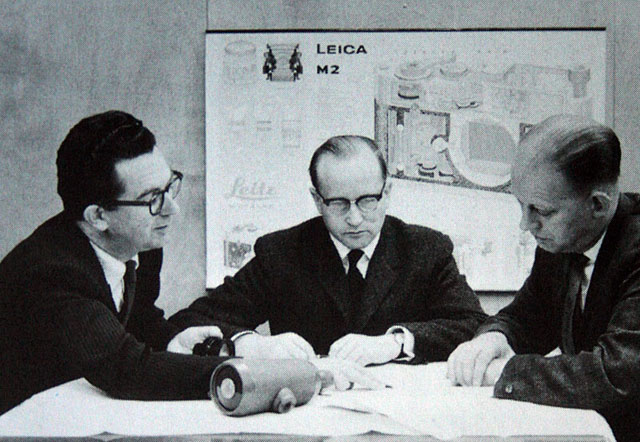
Meßsucher = ( rangefinder or distance finder ) = Mess = range , sucher = finder . It is always correctly written with the "ß". There are technically not three "s", rather the "ß" and one "s" because it is a word constructed by the combining of two precise words. Correctly, the Messsucher is not a distance finder, but a distance finder integrated in a viewfinder. This started with the Leica M3 (1954) as the first Leica camera where the distance finder and the viewfinder was not two separate oculars on the camera. The Leica M3 was named M3 becuse it was M esssucher and had 3 frame lines inside the viewfinder. The previous models had a separate viewfinder (called a Entfernungsmesser, a range finder). As we can tell, the German words cover more precisely these concepts, whereas the English translation of both "Messsucher" and "Entfernungsmesser", ends up being "rangefinder" camera.
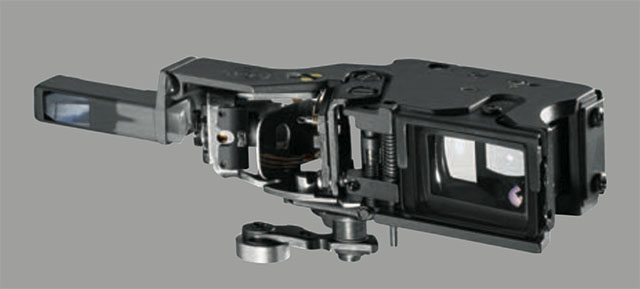
mm = millimeter(s), as in a 50mm lens. (Earlier in lens history lenses focal length was given in cm = centimeters; as in a 5 cm lens). For anyone used to centimeters and millimeters, it’s no wonder. But if you grew up with inches, feet and yards, you may have had a hard time grasping what a 50mm lens was. But as lenses were designed first in Europe, the metric system with centimeters and millimeters was used to describe lenses. (Leica and others made lenses for a while with either meter scale or feet scale; but then eventually started including meter and feet on all the lenses (two scales, usually distinguished with different colors). However, the lens' focal length remained always 50mm, 75mm and so on). The reason a 50mm lens is a 50mm lens is that there is 50mm from the focus plane (the film or sensor surface) to the center of focus inside the lens. When photography was a young subject, it was engineers who made it all, and the users were expected to understand. The engineers were so into the making of the lenses, that it apparently never dawned upon them that today’s users would think of a 21mm lens as a wide angle lens rather than a lens where there is 21mm from the sensor to the center of focus inside the optics.
MP a) Stands for Mechanical Perfection, as in the Leica M-P. b) Megapixels (millions of pixels). c) Megaphotosites (millions of photosites).
ND = Neutral Density filters are gray filters, they function as 'sunglasses' for lenses. They simply block the light so that a lens can work at for example f/0.95 or f/2.0 in sunshine. If a camera is set to 200 ISO and the maximum shutter speed is 1/4.000, this will usually result that the lens has to be at f/2.8 or smaller aperture in sunshine. Else the image will over-exposed. So in order til stay within the maximum shutter speed of 1/4.000 and still use a lightstrong lens wide open, one mount a ND-filter that reduce the light with 3 stops (8X) or 6 stops (64x). For video ND-filters are used quite a lot (as the shutter speed for video is 1/60), and ND-filters are also used to reduce the light for really long multi-exposures at night (stop-motion video and stills).
ND-filters also exist as variable ND-filters so one can adjust the amount of light going through from for example 1 stop (2X) to 6 stops (64X).
ND-filters also exist as graduated ND-filters where the top of the filter is dark and then gradually tone over in no filter (so as to reduce the skylight in a landscape for example).
The ND filters are called Neutral because it is a neutral filter. It doesn't change colors, only the amount of light.
"Niner" The nick-name for the 90mm f/2.5 Leica lens in the 30's when it first came out.
Noctilux = Also known as "King of the Night" because "Nocti" means Night and "Lux" means Light. The f/1.0 lenes from Leica are named "Noctilux". The first Leica Noctilux lens was the 50mm Noctilux f/1.2 which shortly after it's introduction was improved to the 50mm Noctilux f/1.0. In the current model the f-stop has been improved further to f/0.95. "Noctilux" refers to the maximum lens aperture - here f1.0 . "Nocti" for nocturnal (occurring or happening at night; ORIGIN late 15th cent.: from late Latin nocturnalis, from Latin nocturnus ‘of the night,’ from nox, noct- ‘night.) , "lux" for light. The Leica Noctilux 50mm f1.0 is famous for enabling the photographer to take photos even there is only candleligts to lit the scene. See the article "Leica Noctilux - King of the Night"
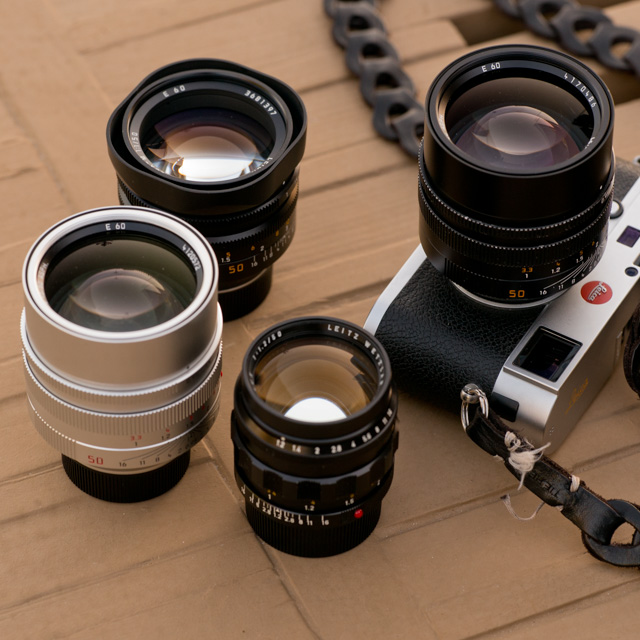
No. Number, on this site Leica catalog numbers or order numbers. Some the numbers changed depending on the number of cams in the lens: The Elmarit-R f2.8/135mm started life as No. 11 111, however when fitted with 2 cams for the SL became No. 11 211, yet another No. for the 3 cams lens and a fourth number for 3 cam only at the end of its life. Number changes also applied to M lenses depending on whether they were screw-thread, bayonet or for M3 with “spectacles”. Thus the No. in the Thorsten Overgaard Leica Lens Compendium list is a guideline but not a comlete list of existing catalog numbers.
"Open Box" = See "U" (Leica Type "U" further down, which is is a term used by Leica Camera and Leica dealers (internally) that means "lightly used" or "used and refurbished". Usually sold with 10-15% discount of new prices,a nd with one year warranty only.
Optic = Eye or vision. From French optique or medieval Latin opticus , from Greek optikos , from optos ‘seen.’
Perspective = The way objects appear to the eye; their relative position and distance. Also, selective focus (foreground and background out of focus) can change the perception of perspective (also see Three-dimensional ). A wide angle "widens" the perspective and makes objects further away appear smaller than they are to the eye; and objects closer, relatively larger than they are to the eye. A tele lens will "flatten" the perspective and often objects further away will appear relatively larger than close objects than they are in real life. A 50mm lens is the one closest to the perspective and enlargement ratio of the human eye.
The word Perspective comes from the latin word for optics ( perspicere , per- ‘through’ + specere ‘to look’), and so-called Renaissance painting is simply painting done within the framework of optics and the linear perspective it presents.
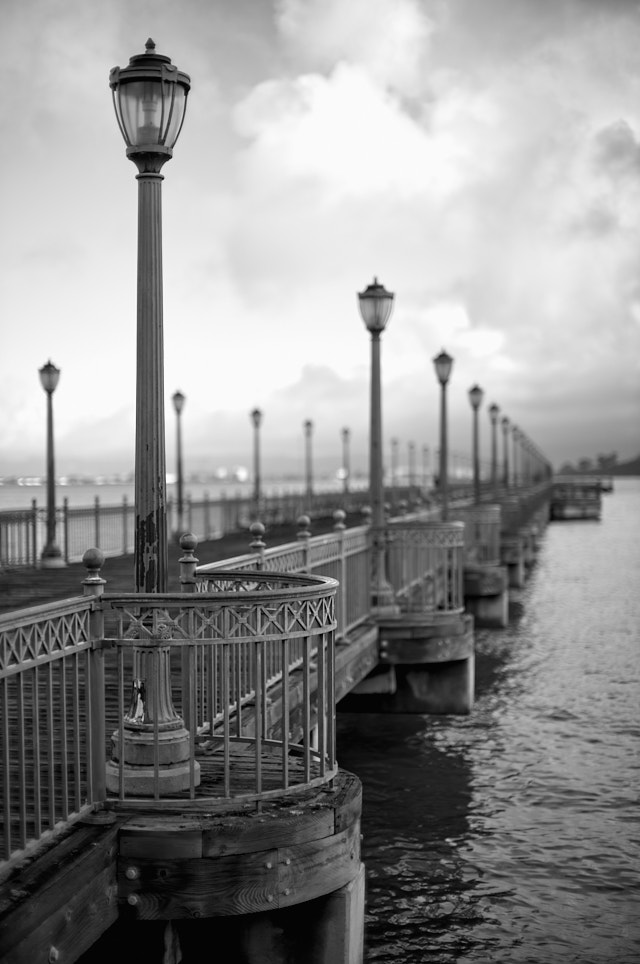
Painters works with vanishing points , which is where the lines meet, so as to create an illusion of perspective and three-dimensional effect on a two-dimensional painting or drawing.
The human eye corrects for perspective to an extreme degree. We always see vertical lines vertical and horisontal lines horisontal: The eye has a angle of view equivalent to an 8mm wide angle lens, a size ratio equivalent to a 50mm lens and we focus on relatively small area of the viewing field - one at the time. Three things happens that are worth paying attention to:
1) We compile areas of our view that we focus on, to one conceptual image that "we see". Ansel Adams, the great American landscape photographer pointed out that a large camera used for landscape photography capture every detail in focus and sharp so you can view it in detail after; but the eye does not see everything in focus when you try to compose the landscape photography, the eye scans only one part at a time and stitch the idea together. This makes composing or prevision of a landscape photography challenging.
2) We compile areas of our view that we individually adjust the exposure of. A camera adjust the exposure of the whole image frame to one exposure. That's why what looks like a nice picture to the eye of houses in sunshine with a blue sky above, becomes a photograph of darker buildings with a bright white sky: The camera simply can't take one picture that compare to what we "compiled" with our eyes, adjusting for each type of light.
3) Objects (on a table, for example) in the bottom of our viewing field will appear 100% perspective corrected - to a degree that it is impossible to correct in optics, with or without software correction. A wide angle lens, even with little distortion, will exaggerate the proportions of the closet part so it - to the eye - looks wrong.
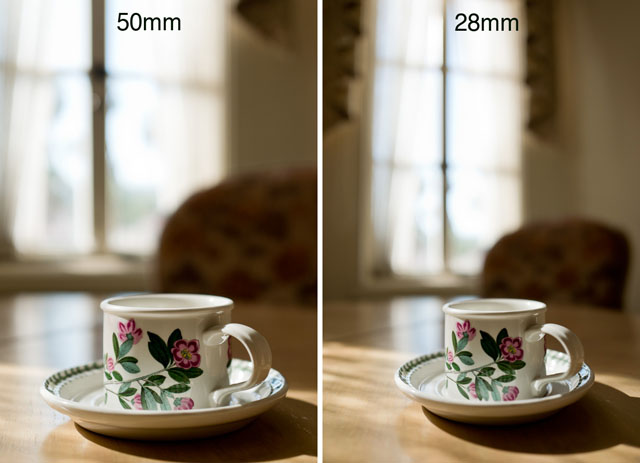
Perspective correction - In software like Adobe Lightroom and Capture One Pro there is often a feature to correct perspective (and distortion) like seen below. You can change perspective this way, or at least make believe: If you correct a tall building on teh vertical lines, you will notice that the height of the windows doesn't match the perspective. If the building is with straight lines, the windows should all be of the same size. But a tall building seen from below and corrected with software will have taller windows (closer to camera) in the bottom than in the top (further away from the camera originally).
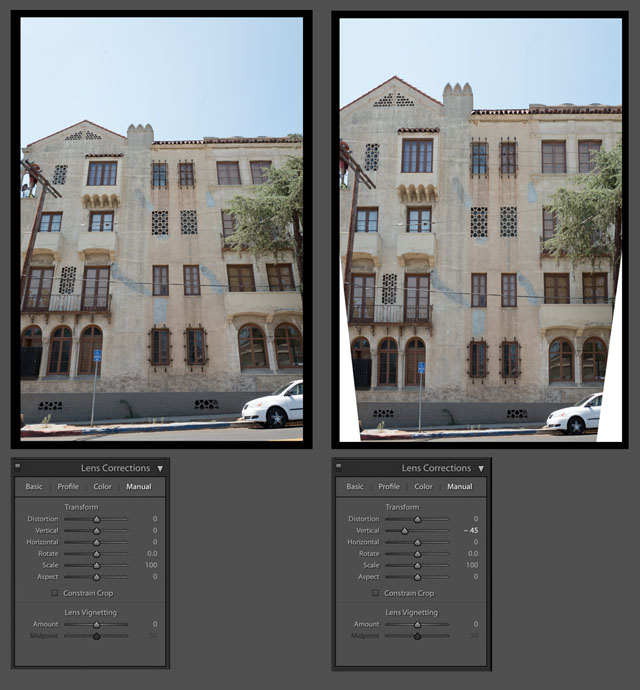
Photography - "Writing with light" in that photo is light, graphy is writing. Also often said as "Painting with light".
Photogenic - That you are able to look good in photos, or said about someone that they do well in photos. Comes from "eminating light".
R - Reflex: The Leica R cameras (2009) is the SLR cameras from Leica. The first Leicaflex (1964) feels like a Leica M, built as a tank, and with reflex and fits Leica R lenses. Over the production time of the Leica R system, a number of magic lenses from fisheye to 800mm were made for this system (as well as a made-to-order 1600mm lens for a prince in Qatar). Also a number of zoom lenses was made for the Leica R system. Many of the lenses are being used for cinema in their next life, especially the wide angle and the 50/1.4, but also the 280mm APO f/2.8 tele lens was retrofitted with a PL mount and used for the Joker movie in 2019. The Leicaflex series (1964 - 1976) was modernized with the Leica R3 (1976) that was made together with Minolta , and then Leica went on with Leica R4, Leica R5, Leica 6.2, Leica R7, Leica R8 and Leica R9. The latter two models got a digital 10MP back made as an accessory in 2004 (CCD-sensor made with Imacon and Kodak). You simply took off the film back and mounted a digital back (and could change back to film if you wanted to). See my Leica DMR article . The Leica R system was retired in 2009 when the production of new lenses stopped. Leica Camera AG said then that the plans fot the R10 camera had been retired as it was not feasible to maintain an SLR system. Though, in 2016 Leica opresented the Leica SL system which is a SLR camera without reflex and instead is mirrorless cameras, and with a new series of L-mount lenses. The Leica SL (and Leica M) can use Leica R lenses via adapter.
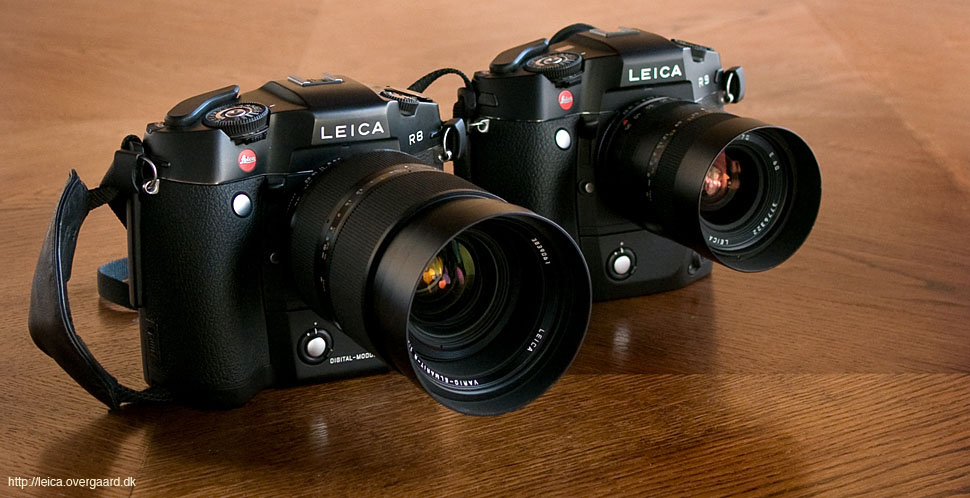
"Rattle" = Noise from something moving around inside a lens when moved or shaken, as if something is loose: When a lens "rattle" when moved, it is not the floating elements "floating around" but can be the IS (Image Stabilization) elements for elense that has that, AF elements for auto focus lenses, or the aperture cage that rattles (as in the case of the Leica 35mm Summilux-M f/1.4 FLE - if you stop down the Summilux to f/16, the sound is usually not there).
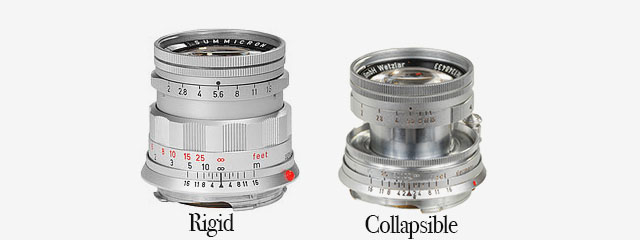
Rigid - Refers usually to the Leica 50mm Summicron-M f/2.0 " Rigid " of 1956. It is called "Rigid" because, unlike the 50mm Collapsible, this one is not able to be changed. Rigid means stiff, uable to be forced out of shape. Not able to be changed . From Latin rigere , "be stiff". The name is a little confusion nowadays as all or most lenses are rigid today, but back in 1925-1956, many lenses were collapsible so the camera was compact when not in use. Just like compact cameras today often has a lens that extrudes when the camera is turned on, and collaps into the camera body when the camera is turned off.
RF (R)ange (F)inder - the mechano-optical mechanism which allows M Leicas to focus. Alternative meaning - RF is also shorthand for Hexar RF , Konica's motorised "M-lens-compatible" rangefinder camera released in 2000.
Saturation : How colorful, intense or pure the color is. Less saturation would be less colorful, more saturation would be more colorful. In today’s photography, de-saturating a photo on the computer will gradually make it less and less colorful; and full de-saturation would make it into a black and white photo.
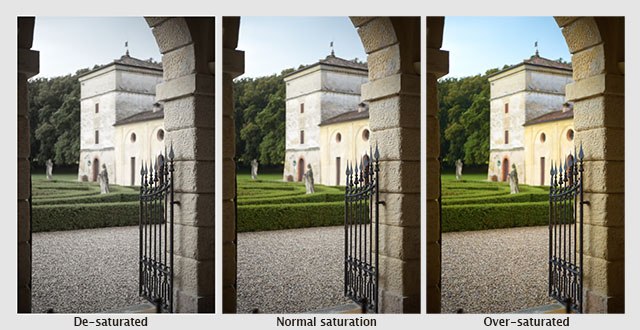
Sharpness - See “Focus”
Shutter speed dial - The dial on top of the Leica M where you can set the shutter speed manually. It can also be set to A which stands for Aperture Priority (where the camera suggests a shutter speed; or when you move the dial away from A, the camera will show arrows in the viewfinder, suggesting which direction to change the Aperture to, to get the correct exposure).
The number on the dial refers to the shutter speeds. "4000" is 1/4000th of a second (one second divided with 4,000).
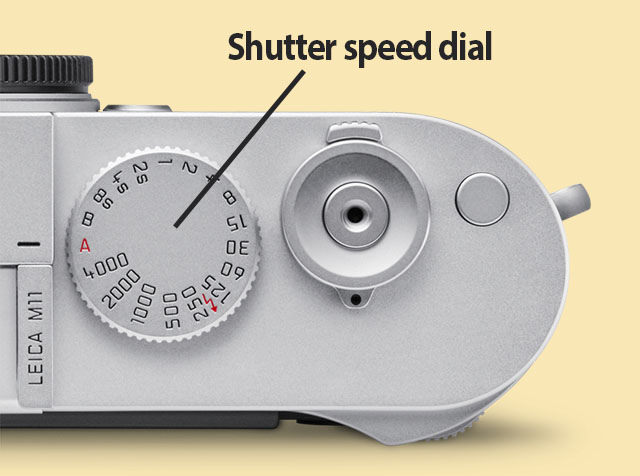
Slide - Short for slide film, also known as a transparency or a dia-positive (or a lantern slide as they were called in the 1800's). A transparent film in positive, and mostly in color, that can be projected onto a wall or screen in large size by putting the slide into a slide projector ("magic lantern" as they were called back in the day) that sends light through the film and projects it to a wall or screen via a lens. In the 1930's and 1940's Walther Benser traveled the world with a slideshow of pictures made with the Leica. In the period long before the television he managed to fill large theatres with hundres and often thousands of people who were amazed by the large pictures from the "small camera" as the Leica was also known as back then.
Slide projector - Also known as "magic lantern" back in the day. Leica came out with their first projectors in the 1930's (see a list of projectors and acessories here ). It's a device with a strong lamp behind a transparent picture (slide) that is projected to a wall or screen via a lens. Today we use LCD projectors which is simply a digital image on a small screen inside the projector house that is projected to a wall or screen by a lens. Early models of LCD projectors had three lenses so as to projet each channel of red, green and blue onto the wall or screen.
SLR = Abbreviation for S ingle- L ens R eflex; the lens that forms the image on the film/sensor also provides the image in the viewfinder via a mirror. Newer camera models has aen EVF ( E lectronic V iew f inder) that displays in the viewfinder what the sensor sees in real-time.
Summar - (or a story of name development) The 1933 lens 50mm f2.0 Summar: It started out as Summar (f2.0), then the Summitar (f2.0 in 1939), then the Summarex (f1.5 in 1948), then the Summaron (35mm f.2.8 in 1948, then later f2.0, f3.5 and f5.6 lenses), then the Summarit (f1.5 in 1949 and used again for the 40mm f2.4 on the Leica Minilux in 1995, then again for the 35mm, 50mm, 75mm and 90mm Summarit f2.5 in 2007) then the Summicron (f2.0 in 1953 for the collabsible 50mm) and finally the Summilux (50mm f1.4 in 1959). ORIGIN of Summar is unknown.
Summarex The great thing about being a lens designer is that you get to name the lens. Dr. Max Berek who worked for Leitz from 1912 till his death in 1949 named lenses after his two favorite dogs. One was Sumamrex named after his dog Rex , the other Hektor named after his dog Hektor .
Summarit Refers to the maximum lens aperture - here f/1.5.
Summicron = Refers to the maximum lens aperture - here f/2.0 . There are many guesses how this name came about, a popular one being that the "summi" came from " summit " (summit means the highest point of a hill or mountain; the highest attainable level of achievement) while the "cron" came from "chroma" (ie. for colour). Not so: The name (Summi) cron was used because the lens used Crown glass for the first time, which Leitz bought from Chance Brothers in England. The first batch of lenses were named Summikron (Crown = Krone in Deutsch). The Summi (cron) is a development from the orignal Summar (the 50mm f2.0 lens anno 1933). Vario- Summicron, Vario- Elmarit is Leica Camera AG's name for zoom lenses, for example the Vario- Summicron f/2.0 as the one that is on the Leica Digilux 2 .
Summilux = Refers to the maximum lens aperture - here f/1.4 , "-lux" added for "light" (ie. the enhanced light gathering abilities). In Leica terminology a Summilux is always a f/1.4 lens and a Summicron is a f/2.0 lens.
Thambar Leitz Thambar 90mm f.2.2 . At most about 3000 were made, originally, probably in eight batches, starting with 226xxx (built in 1934) and going through 283xxx, 311xxx, 375xxx, 416xxx, 472xxx, 511xxx, and 540xxx (about 1939/1940).
But then the Thambar was re-launched in 2018, exactly the same lens, and is now available from Leica Stores for $7,195.00, which is int he same range as an original second-hand 1930's model in good condition. Today the original versions are staggeringly rare and can be extremely expensive for a perfect condition Thambar with all accessories (center spot filter, shade, cap and box). The lens has been rumored to be slightly radioactive due to the process of producing the glass.
Known to be a legendary soft-focus portrait lens that 'make a woman look 10 years younger.' A glass filter with a black spot in the middle, about 13mm (1/2”) in diameter cuts out the central (sharpest) part of the image and makes everything even softer. Here are some advice from a Thambar user, Theodor Heinrichsohn, who have used it mainly for portraits using an Leica M5 and Leica M6: 1. The results are more or less unpredictable. Best practice is to shoot many times and pick the one you like best. 2. Shots against the light are generally more effective than with the light behind you. 3. The most pleasing results to my taste were with center filter at medium apertures. With luck portraits took on the "dreamy" look that the lens is famous for. 4. I never used the Thambar for anything except portraits.
Read my article " How to get the Leica Thambar to work - feat. Milan Swolfs ."
Origin of the name is currently unknown. Suggestions has been made that the name Thambar was derived from Greek, meaning “something that inspires wonder”. Also close to the English word Tamper (with) which is to meddle, damaging or altering something.
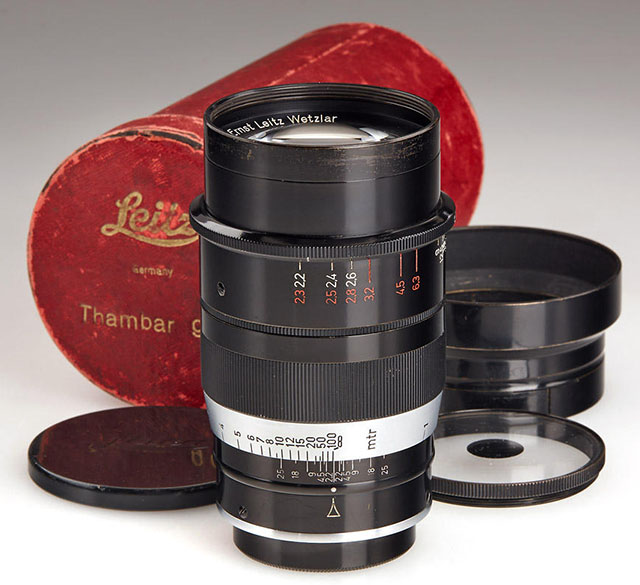
Thick / Thin The first 90mm Elmar that came out in 1930 was called "Thick" of "Fat" When the smaller Elmar came out in January 1933 it was called "Thin".
Three-dimensional = Having the three dimensions of height, width and depth. In photography and lens design, three-dimensional effect is also the perception of even small micro-details; the texture of skin can appear flat and dead or three-dimensional and alive. Also, selective focus (foreground and background out of focus) can change the perception of depth. Also see Perspective.
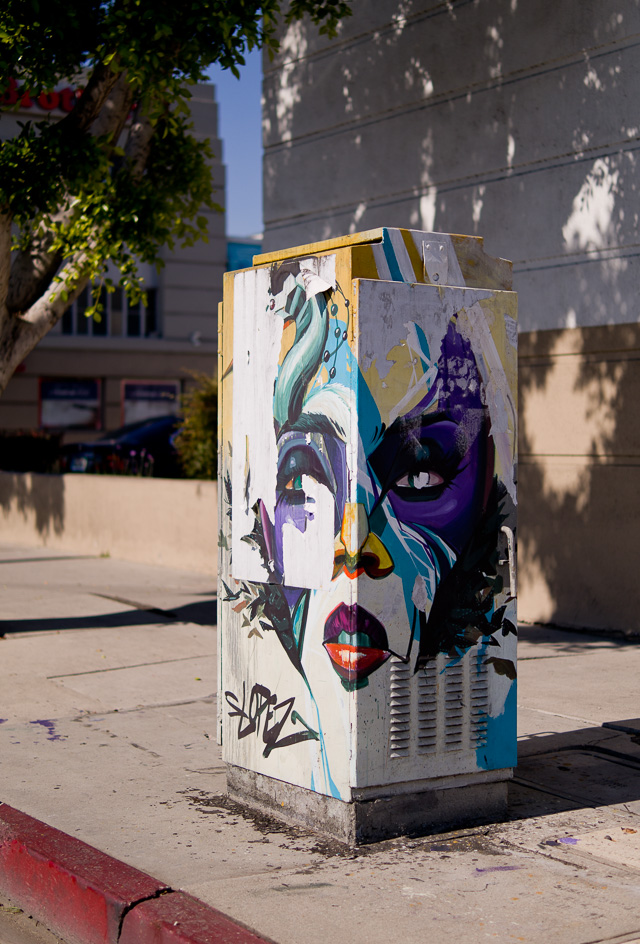
TTL (T)hrough (T)he (L)ens light metering, usually WRT the flash metering capabilities built into the R6.2, R8, R9, M7 and M6TTL cameras.
"U" = Leica Type "U" is a term used by Leica Camera and Leica dealers (internally) that means "lightly used" or "used and refurbished". Usually sold with 10-15% discount of new prices and only one year warranty. This is a lens or camera where the box has been opened, and whoever opened it didn't intent to keep using it. So that can be demo in store, a customer returned it after opening it, or a brand new camera that had to go back to Leica for correcting something mechanical or firmware - and now it is put back in circulation as "Type U". It can have phsycal marks, or it can be as brand new. In many ways the same as "Open Box" which is a softer term implying that the box was opened but the lens or camera wasn't used.
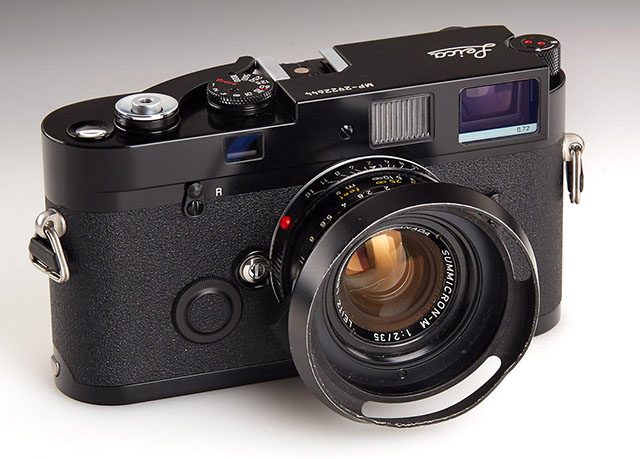
Ventilated Shade - A shade is a hood in front of a lens that provides shade from light going straight onto the lens from outside what you are photographing, which could cause internal reflections like flare, which would make the picture less contrasty. The ventilated shade has holes so it doesn't obstructs the view from the viewfinder. In many of today’s mirrorless cameras where there is no viewfinder looking ver the lens, so there is no actual need for a ventilated shade; but they are considered classic or vintage looking and are still in high demand. It makes no difference for the purpose of the shade (to create shadow) if it is ventilated or not.
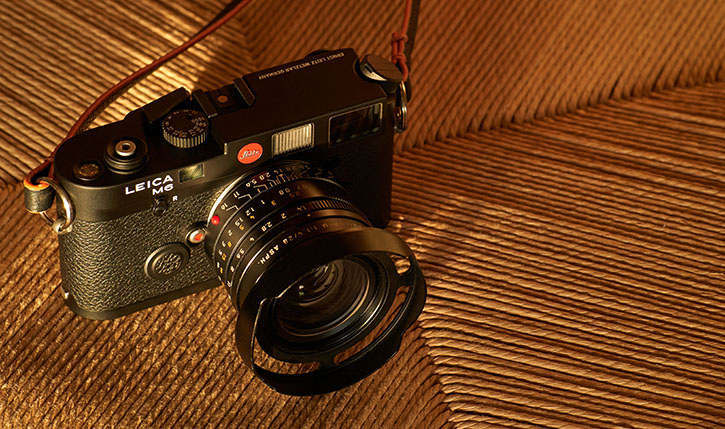
Viewfinder a device on a camera showing the field of view of the lens. Also known as the German word "Messucher" (or Meßsucher). 1) A built-in viewfinder in a camera that simply show the frame you get when you look through the viewfinder. 2) A rangefinder viewfinder which is also used to focus the lens. In Leica M cameras two pictures has to meet and lay 'on top of each other' for the picture to be in focus. 3) An external viewfinder, usually on top of the camera in the flash shoe, so as to show the field of view of lenses vider than what the built-in viewfinder can show (15mm, 21mm, 24mm, 28mm etc viewfinders exist) 4) Very simple "aiming-devices" on top of a camera that is simply a metal frame without any optics. Just a frame, as for example very old cameras (the original Leica), or when using cameras in diving where you can't look through the camera. 5) A Electronic Viewfinder (EVF) that shows what the sensor sees "live".
Visoflex A device mounted between the Leica M camera and a lens, containing a mirror mechanism like in a SLR camera, thus allowing the M user to 'preview' a picture using a tele lens larger than 135mm which is the maximum covered by the framelines in the Leica viewfinder. In 2012 Leica made the electronic Visoflex for the Leica M240, which is an electronic viewfinder (see EVF in this list).
Vulcanite The black rubberized, textured material used to cover Leica camera bodies prior to the 1980s. It actually was made of vulcanised rubber (hence the name) and was and remains much loved by professionals because of its solid, sure grip.
Zone Focusing = Working with the expectancy that a zone will be within acceptable focus so doesn't have to focus precisely before aiming and taking the photo. In smaller cameras one would see different symbols to select from: A mountain, a tree, a person, because the camera had to be set to infinity focusing, not-that-far-away, and close focusing in the near area. This is possible because a lens has a depth-of-focus determined by the f-stop. In such a simple camera, if for example a 40mm lens with widest aperture of f/5.6, then a large area will be in acceptable focus, why the focus mechanism can be reduced to three possible steps. In street photography zone focusing can be used with any lens in that one can see the depth-of-field scale on the lens and from that determine that if one sets the lens to for example f/8.0, a certain area (zone) in front of the lens will be in acceptable focus. A 50mm f/1.4 lens set to f/8.0 and a distance of 3 meters focal distance, the zone from m to 2.5 meter to 4 meter will be within acceptable focus. In street photography the idea is that one then can react fast, without having to focus, and doesn't even have to lift the camera to the eye, as long as the main subject in inside the zone of 1.5 meter acceptable focus.

What Ansel Adams basically did was that he studied (by measuring with a spot meter ), what the exact grey tones were of the sky, the clouds, the sand, the water, the skin and so on at different times of the day. You could say that he built up a conceptual understanding of how different materials of different colors and reflective surface would look in black and white at different times of day (or different light conditions). He also realized that a tone changes for the human eye depending on it's size and in which context of other tones it is seen.
In short, you could say that the Zone System is know how something would look in black and white when looking at a scenery. Some who have struggled with the Zone System have done so because they think it is a rule. It is not.
Ansel Adams developed the Zone System to understand light for himself, but also as a fundament for teaching the light, exposure and making the final photograph. How will it look if you do the usual, and what will it look like if you manipulate it. But most interstingly; how do you work with light, cameras and photographic materials to achieve the look you envision.
The Zone System is meant as a basis on which to create your own aesthetic style and communication. Photography is painting with light. The greyscale is our palette. Ideally we should have a conceptual understanding of the tones and be able to use them intuitive. That was his vision for us all.
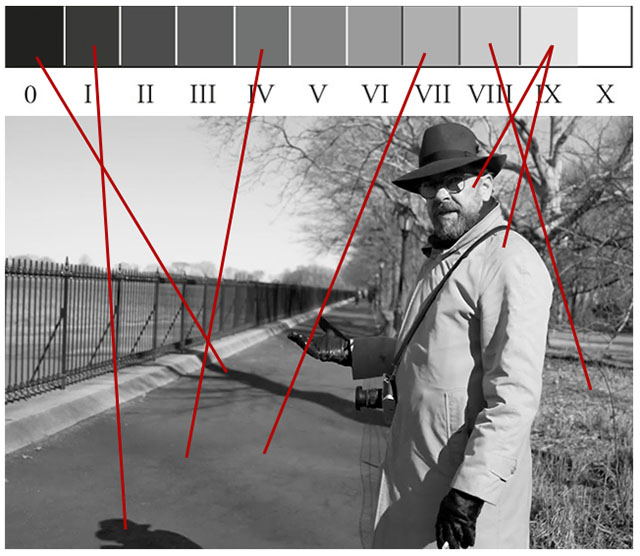
Ø - Diameter. As in Ø 49 for example which means that the filter diameter is 49mm for this lens (or if a filter is Ø49, it is 49mm in diameter and fits that Ø49 lens). Leica uses E to express their filters sizes, as in E 49 for a 49mm filter size.
/Thorsten Overgaard. Latest update September 30, 2022. Job #2169-0922
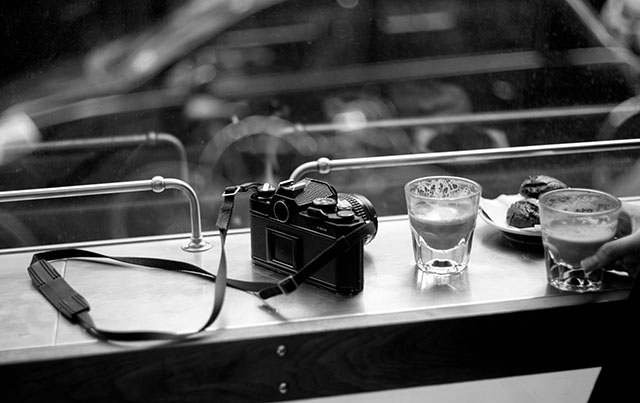
– Thorsten Overgaard #2169-0922
Above : Leica M6 Black Chrome (Made in Solms 1995). Photo by Tom Knier .
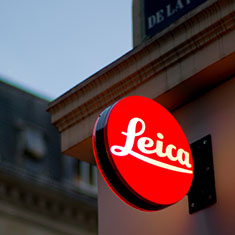
LEItz CAmera = LEICA Founded 1849 in Wetzlar, Germany.
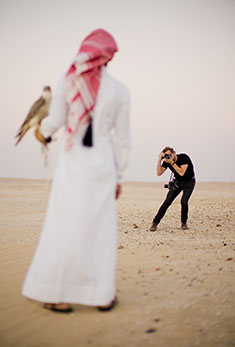
Thorsten von Overgaard is a Danish-American multiple award-winning photographer, known for his writings about photography and Leica cameras. He travels to more than 25 countries a year, photographing and teaching workshops to photographers. Some photos are available as signed editions via galleries or online. For specific photography needs, contact Thorsten Overgaard via email.
You can follow Thorsten Overgaard at his television channel magicoflight.tv .
Feel free to email to [email protected] for questions, advice and ideas.
Also visit:
Overgaard Photography Workshops Books by Thorsten Overgaard Street Photography Masterclass Video Adobe Photoshop Editing Masterclass Adobe Lightroom Survival Kit Lightroom Presets by Overgaard Lightroom Brushes by Overgaard Capture One Survival Kit Capture One Styles by Overgaard Signed Original Prints by Overgaard Von Overgaard Gallery Store Ventilated Shades by Overgaaard Leather Camera Straps Camea Bags Leather Writing Pads Sterling Silver Camera Necklace Leica Definitions Leica History Leica Lens Compendium Leica Camera Compendium Leica 21mm Super-Elmar-M ASPH f/3.4 Leica 21mm Super-Angulon f/3.4 Leica 21mm Summilux-M ASPH f/1.4 Leica 28mm Summilux-M ASPH f/1.4 Leica 35mm Summilux-M ASPH f/1.4 Leica 35mm Summicron-M ASPH f/2.0 Leica 35mm APO-Summicron-M f/2.0 Leica 40mm Summicron-C f/2.0 Leica 50mm Noctilux-M ASPH f/0.95 Leica 50mm Summicron-SL f/2.0 Leica 50mm APO-Summicron-M f/2.0 Leica 50mm Summicron-M f/2.0 ELCAN 50mm f/2.0 Leica 50mm Summilux-M ASPH f/1.4 7artisans 50mm f/1.1 Leica 75mm Summilux-M f/1.4 Leica 75mm Noctilux-M ASPH f/1.25 7artisans 75mm f/1.25 Leica 80mm Summilux-R f/1.4 Leica 90mm APO-Summicron-M f/2.0 Leica 90mm Summilux-M f/1.5 Leica 35-70mm Vario-Elmarit-R f/2.8 Leitz Cine lenses Leica L lenses Leica M6 Leica M11-P Leica M11 Leica M11 Monochrom Leica M10 Leica M10-P Leica M10-R Leica M10-D Leica M10 Monochrom Leica M9, M9-P and Leica ME Leica M9 Monochrom Leica M 240 Leica M 240 for video Leica M 262 Leica M-D 262 Leica M 246 Monochrom Leica SL Leica SL2 Leica SL2-S Lecia SL3 Panasonic Lumix S1R Leica R9 dSLR Leica / Kodak/ Imacon digital back Leica Q Leica Q2 Leica Q2 Monochrom Leica Q3 Leica CL Leica TL2 Leica Sofort Leica S medium format Leica X Leica D-Lux Leica C-Lux Leica V-Lux Leica Digilux Leica Digilux 1 Leica Digilux 2 Leica Digilux Zoom Leica Digilux 4.3 Leica Digilux 3 Light metering White Balance for More Beauty Color Meters Screen Calibration Which computer to get Sync'ing photo archive to iPhone The Story Behind That Picture "On The Road With von Overgaard"
Von Overgaard Masterclasses: M11 / M10 / M9 / M240 / Q / Q2 / Q3 / SL2 / SL3 / TL2 /
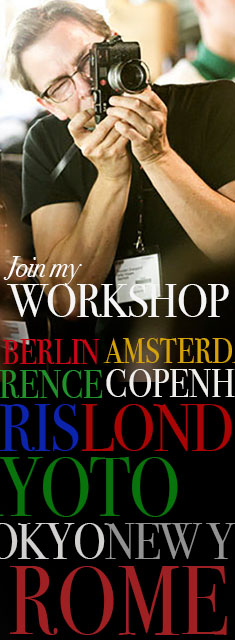
© 1996 - 2024 Thorsten Overgaard. All rights reserved.
Home Camera Articles FOR SALE Orders I Buy / Wants Repairs Books Adapters
Leica M6 TTL Green Millenium

After Leica announced their black paint M6 Millenium , a special order was placed by a Hong Kong dealer for their own version of the Millenium with a .85 finder. Of course, I do the same thing all the time, in my dreams. I think the greens turned out more attractive than the black paint version. By the way, this camera is usually called the "M6 Safari" or simply "Green M6." Though not officially known as the "Green M6 Millenium," that is exactly what it is.
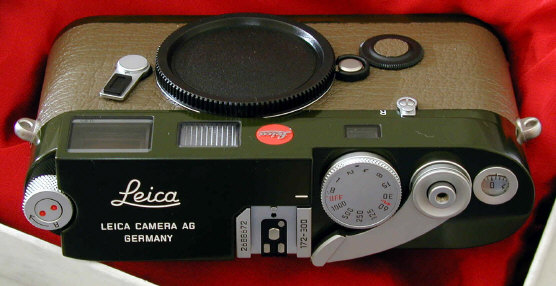
Only 300 were made, compared to 2000 of the black paint Millenium. Besides the usual serial number, this accessory also proclaims "172-300" -- or the 172nd of 300. Notice the M3 style rewind and advance lever. Oddly the green Millenium is MUCH better finished than the black paint Milleniums' I have see n.
Why? easy. The idea of a black paint M6 started out as the black paint LHSA M6. Once Leica realized those LHSA guys really had an idea that would sell, the black paint Millenium was born and introduced before the black paint LHSA.
I digress. Before the black paint Millenium, it had been DECADES since Leica produced paint finish Ms. Leica had a lot of problems getting the paint finish right, problems which you can see in many black paint Milleniums'. The paint is often too thin, with machining marks showing underneath the paint. With lots more practice, Leica got it right on the green M6. The paint is beautifully done, much better than their black paint cousins.
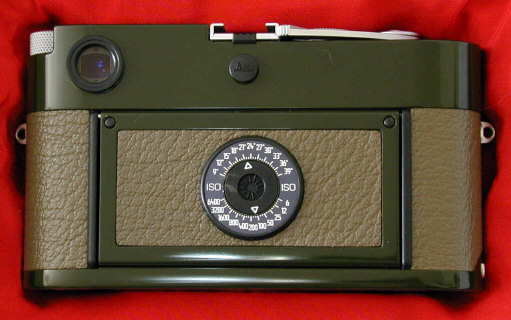
Revised: November 25, 2003 . Copyright © 2002 Stephen Gandy. All rights reserved. This means you may NOT copy and re-use the text or the pictures in ANY other internet or printed publication of ANY kind. Information in this document is subject to change without notice. Other products and companies referred to herein are trademarks or registered trademarks of their respective companies or mark holders.

Write a Review
For more than 100 years, Leica Camera AG has been a synonym for cameras and lenses with permanent values such as reliability, consistency, and quality. With analog photography experiencing a renaissance –the new Leica M6 represents Leica Camera’s continued commitment to these values.
- Create New Wish List
Description
For more than 100 years, Leica Camera AG has been a synonym for cameras and lenses with permanent values such as reliability, consistency, and quality. With analog photography experiencing a renaissance –the new Leica M6 represents Leica Camera’s continued commitment to these values. The Leica M6 from 2022 relies on a modern version of the Leica M rangefinder with a 0.72x magnification. Furthermore, all of its optical surfaces are now coated and thus less sensitive to stray light. The light meter in the latest M6 now shows the correct exposure via a red dot in addition to the two arrow symbols originally used. Additionally, it is equipped with a battery warning indicator. The top cover has also been redesigned: while the cover of the preceding model was made of diecast zinc, it is now milled from solid brass and enhanced with an abrasion-resistant black lacquer. The exposure meter in the M6 measures light via a brightened area on the mechanically controlled cloth shutter. Like the original from 1984, the new edition of the M6 is also adorned with the red Leitz logo. The M6 remains true to itself and preserves all other typical character traits such as the slanted rewind crank for the film. Handmade in Germany, it is an extremely reliable companion for all those who appreciate the lasting and contemplative nature of analog photography.
The legendary Leica M6 is an icon. Intuitive, compact and discreet, it allows you to get up close to the action – and to real emotions. Since 1984, it has been the camera of choice for many of the world's best photographers, who have used it to create countless iconic images. In a world that is moving faster than ever, analogue photography is experiencing a renaissance, as people embrace traditional values like reliability, trust and quality. People want cameras with a soul. Like the Leica M6. Embodying only the essentials, it reflects a conscious rejection of countless features in favour of focussing on what’s necessary. To revisit photography as an active, creative process and to tell intimate stories. The new Leica M6. The rebirth of an icon "Made in Germany“.
The Leica M6 essentials:
- 0.72x Viewfinder with Coated Glass Surfaces
- Solid Brass Top Plate Enhanced with Abrasion Resistant Black Lacquer
- Red Leitz Logo
- Original M6 Style Packaging
- New Light Meter Indicator with Battery Warning
- New Leica M6 Style ISO Dial, Newly Developed with Modern Electronic Components Inside
- Leather Carrying Strap with Embossed LEICA lettering
- New Black Leatherette with Leica M6 Typical "MADE IN GERMANY" Embossing
- Made in Germany
Warranty Information
AT A GLANCE
- Brass Top Plate
- Updated Light Meter with Battery Indicator
- Leica M6 Rangefinder Camera
- Leather Carrying Strap
- Camera type: Analogue rangefinder system camera (35 mm)
- Material: Closed full metal housing, Top cover and bottom cover: brass, black finish
- Lens mount: Leica M bayonet
- Operating conditions: +0 to +40°C
- Interfaces: ISO accessory shoe
- Tripod thread: A 1⁄4 DIN 4503 (1⁄4”) with stainless steel in the base
- Weight: 575g (without battery)
- Viewfinder: Large, bright-line rangefinder with automatic parallax compensation
- Parallax compensation: The horizontal and vertical difference between viewfinder and lens is compensated automatically in line with the relevant focus setting. Congruence of viewfinder and actual image. The size of the bright-line frame matches the distance:
- – at 2 m: the exact film size of approx. 23.9 x 35.8 mm
- – at infinity: (depending on focal length) approx. 7.3% (28 mm) to 18% (135 mm)
- – less than 2 m: less than film size
- Viewfinder magnification: x0.73 (all lenses)
- Wide-base rangefinder: Split or superimposed image rangefinder shown as a bright field at the center of the viewfinder image
- Shutter type: Focal plane shutter with rubber liner, mechanically controlled
- Shutter speeds: Mech. shutter: 1 s - 1⁄1000 s
- Flash Synch: up to 1⁄50 s
- Shutter release: Two-stage: Power up (activation of exposure meter) – Release. Integrated standard cable release thread.
- Film Winding
- Loading Manual with quick wind lever or LEICAVIT M, motorized with LEICA MOTOR-M, LEICA WINDER-M, LEICA WINDER
- Rewiding Manual with telescopic rewind knob
- Frame counter On top of camera. Automatic reset after removal of bottom cover.
- Focus range: 70 cm to ∞
- Focus mode: Manual
- Exposure metering: TTL (exposure metering through the lens)
- Metering principle: The light reflected by a metering spot in the center of the 1st shutter curtain is metered. The metering spot has a diameter of 12mm and therefore corresponds to approx. 13% of the full negative format or around 2/3 of the short side of the corresponding frame in the viewfinder.
- Exposure metering: TTL (exposure metering through the lens), with working aperture
- Metering cell: Silicon photo diode with convex lens to the top left behind the camera bayonet.
- Film speed range: Manual setting from ISO 6/9° to ISO 6400/39°.
- Exposure control mode: Manual shutter speed and aperture setting, adjustment using LED light balance.
- Flash unit coonnection: Via accessory shoe
- Synchronization: On the 1st shutter curtain
- Flash sync speed: 1/50s; slower shutter speeds possible.
- Flash exposure control: Via computer control of flash unit or via guide number calculation and manual setting for the required aperture. Power Supply
- Power Supply: 2 Silver oxide button cells (PX76/SR44) or 1 Lithium battery (DL1/3N)
Delivery: Camera body, camera box, leather carrying strap, battery, instructions, warranty card.
Limited Warranty: Leica Camera USA (‘LEICA’) provides a three-year product limited warranty for this LEICA camera valid from the date of purchase from an authorized LEICA dealer, including the accessories contained in the original packaging which are valid for two years.
- Related Products
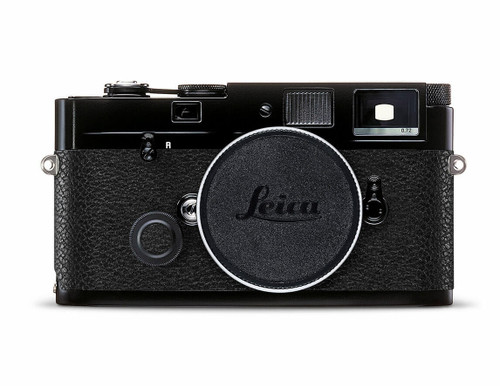
Leica MP 0.72 Black

Leica M-A (Typ 127) Black

Leica M-A (Typ 127) Silver
Sport Optics
Looking for something exceptional, you’re certain to find it with Leica Sport Optics. We create our optics for people who want to experience their environment up close, rather than from a distance. People who demand more, when others accept less.
Looking for something exceptional, you’re certain to find it with Leica Sport Optics. We create our optics for people who want to experience their environment up close, rather than from a distance. People who demand more, when others accept less.
SUBSCRIBE TO OUR NEWSLETTER
Get the latest updates on new products and upcoming sales
Thank you for subscribing!
- Technical Specification
- Payment & shipping
- Complete order
Leica M6, black
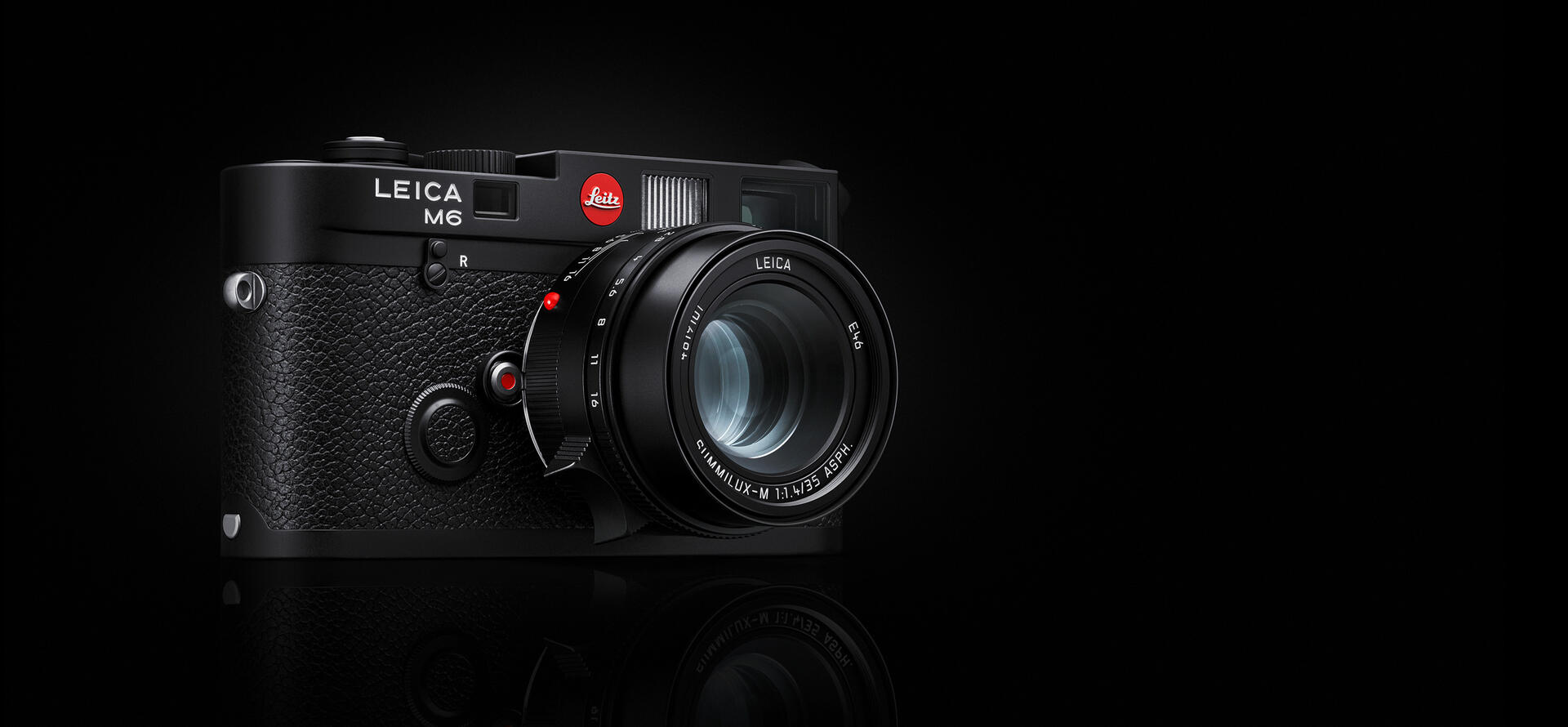
The masters of the moment.
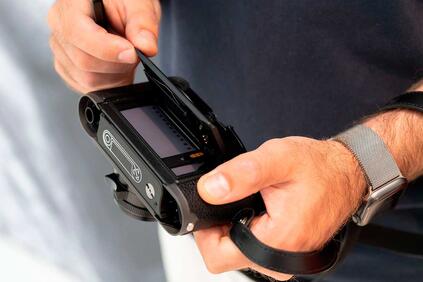
Subscribe for updates on Leica news, events and promotions.
I want to receive advertising information based on my interests and activities from the Leica Camera Group on Leica Camera products, services, events, and marketing promotions. I can withdraw my consent at any time! Please click here for further information on the marketing & data privacy consent.

An in-depth guide to: The Leica M6 (aka M6 Classic / M6 Non-TTL)
Published on
The Leica M6 — also commonly known as the Leica M6 Classic or Leica M6 Non-TTL — is a 35mm film rangefinder camera designed and manufactured by Leica in Germany between 1984 and 1998. The camera was the successor to the Leica M4-P, which was produced concurrently for the first two years of the M6’s 12 year production.
The Leica M6 was the first Leica 35mm film rangefinder camera to feature both through-the-lens (TTL) light metering and the classic Leica M rangefinder design pioneered by the 1954 Leica M3. It was superseded by the M6 TTL in 1998, which added TTL flash capability to the M6’s TTL light meter.
To make it absolutely clear, both cameras have a TTL light meter so if you’re confused by the naming, don’t fret, you’re not alone.

If you’re looking for a Leica M film rangefinder camera with a built-in light meter, the Leica M6 offers amongst the best value of the entire Leica M film range today. Late production models are still comparatively new (as complex film cameras go, that is), it’s not dependent on batteries to function and is eminently repairable and upgradeable.
In this article, I’ll be breaking the Leica M6 down into its constituent parts, providing you with operational details, a few tips and tricks; and of course, how it stacks up against the other models in the range. If you’re in the market for a Leica M rangefinder, this article provides the information you need to make your decision.
Here’s what I cover:
First, let’s start with a bit of Leica M6 history.
The Leica M6 was the first Leica M 35mm film rangefinder to be produced exclusively in Germany since the Leica M4 range. The M6 is essentially a Leica M4-P with a built-in TTL light meter and also utilises many of the same materials and processes in its construction. The camera comes in two finishes: black or silver chrome over a nickel-plated zinc top plate and colour-matched brass bottom plate.
The Leica M6 requires batteries to operate its light meter however, its shutter, like every Leica which preceded it, is entirely mechanical and does not require power to function.

On its release in 1984, the Leica M6 cost approximately US$1,695. Adjusted for inflation, this is a little over US$3,965 in 2020 money. The camera features the same parallax-corrected 0.72x magnification finder of the M4-P, and is capable of displaying three pairs of 6 framelines depending which lens is mounted:
In 1994 Leica released a US$9,000 special edition M6 celebrating 40 years of the Leica M camera. It was called the M6J — “J” for Jubilee — and was limited to 1,640 units, 40 for each year of production. The M6J came with with a new high magnification 0.85x finder, an M3/M2/M1-style film wind-on lever and engraved brass top plate.
The new high magnification finder eventually found its way into regular production with 1998’s short-lived “M6 0.85”. Only 3,130 of these cameras were made before the M6 was replaced later that same year by the M6 TTL. The new camera, still technically still an M6, came with 0.58x, 0.72x and 0.85x viewfinder magnification options. The 0.58x finder was optimised for wide-angle lenses and was a first for the German company.
Preceded chronologically by the M4-P, the M6 is in many respects the natural successor of the Leica M5. In my opinion, it’s quite possible the M6 and subsequent Leica rangefinders would have looked very different indeed if the failed M5 had succeeded. If you’re interested in going down this rabbit hole, I highly recommend you read this article over at MIR about the 1981 “Leica M6 electronic”. Fascinating.
Fun fact, the Leica M6 was the first Leica film rangefinder to offer a “lens cap on” warning feature right out of the box.
Buying a Leica M6 today
On today’s secondhand market, you can expect to pay on average US$1,800 for an M6 in good condition. You’ll pay less for a private sale but more if you’re expecting a box, are aiming to buy new old stock or one of the many, many special editions.
For the newer M6 TTL, add US$400-600 to your budget. There are a few reasons you might want to spend the extra money on the M6 TTL, however, the cameras are functionally very similar. For the majority of new owners, the choice between a bog-standard 0.72x magnification Leica M6 or Leica M6 TTL really comes down to three things:
- The M6 TTL’s larger, ergonomic shutter dial, which can be adjusted by simply swiping a finger over the front of the camera (a feature first seen on the M5).
- The M6 TTL’s shutter dial rotates in the same direction as the light meter’s LED indicators — but in reverse to other Leica film cameras with the exception of the 2002-2018 M7.
- Your preference for using Leica “goggle” lenses such as the 50mm f/2 Dual Range Summicron, 35mm f/2.8 Summaron M3 or 135mm f/2.8 Elmarit-M with their additional optics attached. Some of these have difficulty being used on the M6 TTL.
If you’re interested in my journey finding my perfect Leica M , please check out this article , which charts my personal selection/decision-making process among a few other points. I also highly recommend that you try my interactive Leica configuration tool to find the perfect Leica M-mount film camera for you — whether made by Leica or another manufacturer. The tool covers every M-mount film camera made since 1954 from Leica, Voigtlander, Zeiss and others.
Design/looks
The Leica M6 is built around the same classic design as the Leica M3, which was released back in 1954. Unlike the M3 with its 0.91 magnification viewfinder, the basic M6 features the 0.72 magnification viewfinder and framelines of the M4-P.

The M6 features the quick loading system of the M2R, M4 and later cameras. Further details follow in the section “ Loading and unloading film “. Like the earlier M4 range, the M6 also uses an angled flip-out film rewind crank. The new rewind crank provides much better ergonomics than the “pull-up” knurled knob of early Leica rangefinders.
Viewfinder, framelines and parallax correction
On its release in 1984, the Leica M6 was made available with the now-standard, parallax-corrected, 0.72 magnification finder of the M4-P, which comes equipped with three pairs of 6 framelines. 1998’s M6 0.85 dropped the 28mm framelines from the 28/90mm pair, which at the time made it one of the only Leicas with a single 90mm frameline option.
Framelines available both M6 options follow in the table below:
The viewfinder magnification numbers above represent the view you see through the viewfinder as a decimal compared to 1-to-1 (zero magnification compared to how your eyes perceive the world).
The 0.72 and 0.85 magnifications of the two Leica M6 options tell us the real world is shrunk when seen through the viewfinder. A lower number means you can observe a wider view. In practical terms, the difference between higher and lower magnification viewfinders is how they allow easier focusing or framing on longer and wider lenses respectively.
Here’s how the M6’s two viewfinder options see the world in real life:

The illustration above also shows the Leica M6 light meter’s red LED arrows (center bottom). These provide guidance on exposure and only appear when the meter is triggered by a light press of the shutter button. The M6’s light meter is powered by one 3v or two 1.5v batteries (e.g. 1xDuracell DL 1/3 or 2x LR or SR44 cells). Further details can be found in the “ Power ” section of this article.
As with all Leica M film cameras, each set of framelines is automatically shown when an appropriate lens is mounted to the camera. Other framelines can be manually triggered into view by moving the frameline selection lever — it falls under your left hand when you bring the camera to your eye to shoot.
If you wear glasses like me, the 28mm and 35mm framelines can be a challenge to see all in one go on the 0.72 finder — the same goes for the 35mm framelines on the 0.85 finder. Still, they’re there and even without a full set in view you can shuffle your eye around a bit to get a good enough idea of framing.
The M6’s viewfinder does not have coated glass as later models do but can be upgraded. See the “ Reliability, repairability and upgradeability ” section for further details.
Parallax correction
As with all Leica M cameras, the viewfinder is fully parallax corrected by way of the rangefinder cam you see circled in the image below.

The main purpose of the rangefinder cam is to move the rangefinder focusing patch for focus (see next section). As part of this function, the cam also provides parallax correction: adjusting the viewfinder’s framelines so that they correspond with what the lens will capture.
If you have a Leica M camera on hand you can see an exaggerated version of this effect by removing your lens, looking through the viewfinder and lightly pressing on the rangefinder cam. With the lens off, the cam sets your framelines and focusing patch for closest focus. Pushed in, it moves up and to the left, where it would normally be with your lens at infinity.
A QUICK word on Parallax correction
With any camera where you’re not looking directly through the lens (rangefinders and TLRs being two examples) what you see through the viewfinder is not exactly what will be captured on film. On Leica Ms, the center of the lens is approximately 4cm/1.5 inches down and to the right from the center of the viewfinder. This displacement doesn’t have a huge impact when taking photographs with the lens at infinity. However, the closer your subjects are, the more pronounced the difference between what the two see becomes.
The Leica M6 provides parallax correction by automatically compensating for the difference in position of the viewfinder and lens by moving the framelines down and to the right as you focus the lens closer. The movement is hardly noticeable in use and ensures that what you see is what ends up on film.
Rangefinder mechanism, Effective Base Length (EBL) and focusing
You could say that Leica cameras and lenses play second fiddle to their rangefinder mechanisms. I understand that’s a rather strange standpoint but consider this: viewfinder optics and focusing systems are the first and arguably the most important part of any camera. They are your first impression as you look through them and regardless of how good or bad the rest of the camera is, if you can’t live with a viewfinder, it’s hard to live with the rest of the camera.
Rangefinder mechanism
Let’s start with an image taken from one of Leica’s promotional materials. It’s the Leica M4-P rangefinder assembly — the same basic mechanism found in the 0.72x M6:

This is the brains of your Leica and incorporates:
- A rangefinder cam that couples with your lens (bottom center).
- Viewfinder window (far right).
- Frameline mask Window (center).
- Rangefinder window (far left).
Here’s how they sit in a fully assembled camera:

Covering the leftmost window (4) above will obscure the viewfinder’s split-image focus. Covering the center window (3) will obscure your frameline illumination and covering the rightmost window (2) will give you a blurry image of your finger or thumb.
Effective Base Length (EBL)
Viewfinder magnification is one aspect of a rangefinder that helps you focus, the other is rangefinder base length. Rangefinder base length is the distance between the rangefinder window and the viewfinder (number 4 and 2 respectively in the image above). The longer the rangefinder base length and the higher the viewfinder magnification, the easier it is to obtain critical focus, especially with wide aperture lenses shot wide open.
When comparing the potential accuracy of rangefinders, we need a common ground. This is called Effective Base Length or EBL. EBL is a number you calculate by taking the rangefinder’s actual base length (RB) and multiplying it by the viewfinder magnification (VM):
RB x VM = EBL
Again, the longer your rangefinder’s EBL, the more accurate you’ll be able to focus (in theory).
The Leica M3 has the accolade of being the standard by which all Leica M cameras are measured. It has a 0.91x magnification viewfinder and a 68.5mm rangefinder base length. Multiply these together and you get 62.33mm . I’ve compared the M3’s EBL (marked as 100% for this comparison) in the table below.
These numbers aren’t a statement of “best”. What they tell us that the 0.85 M6’s viewfinder is potentially more accurate than the 0.72. What you don’t see here is the 0.85 viewfinder is effectively useless for critical framing with a 35mm lens if you wear glasses…hence this very long article. The higher the viewfinder magnification is obviously helpful for shooting longer lenses (as I do).
One thing to note is that the 0.85 viewfinders make it easier to also use “two eye focusing”. This a technique where you keep both eyes open, with your right eye looking through the viewfinder while you frame and focus. It doesn’t work 100% for everyone but when you get used to it, it feels wonderfully intuitive — especially on the M3.
Focusing the Leica M6
If you’re used to using an SLR, you might be using a matte focusing grid, which relies on your eyesight to discern if your subject is in focus. You might also be using a split-image fresnel which splits the center of your focus screen into two halves of a circle. Bring the two halves together and you’ve nailed focus.
Rangefinder focusing is quite similar to the latter. See the diagram below, which has been adapted from Leica’s documentation:

It can be quite confusing when you first use a rangefinder. You might not even notice the rangefinder patch to begin with! With a little practice and a bit of experience, using a rangefinder will quickly become second nature for both snapshots and critical focus.
One of the advantages of a rangefinder camera is that the viewfinder does not show the lenses actual depth of field. This makes zone focusing incredibly easy. I won’t deal with that in this article but there’s a great article over on the ILFORD blog with covers the basics.
TTL light meter
The Leica M6 provides through-the-lens (TTL) light metering. Rather than pointing at a shutter speed in the finder like the Leica M5 or many SLR film cameras, the Leica M6’s meter shows how close the selected shutter speed and aperture combination is to the meter’s reading.
In other words, the camera will tell you how close it thinks you are to the “correct” exposure for the scene but won’t tell you the aperture/shutter speed combination you’re using. The meter guides you via a pair of triangular LEDs at the bottom of the viewfinder.
To use the light meter, first make sure the desired film speed has been set using the dial on the cameras rear plate. Next, lightly press the shutter button down until the LED(s) light up. Finally, rotate the shutter speed dial or your lens’ aperture ring until both LEDs are lit with equal (dim) intensity.
These are the light meter’s five main states:
In addition, the M6’s light meter LEDs will flash if you try to use it in very low light or even on dull days with a small aperture set on your lens. If you’re shooting in very low light, it may take the second or two for the LEDs to show.
If you were paying attention at the top of this article I noted that the Leica M6 was the first Leica M to feature a “lens cap on” warning. It’s true, albeit a half-truth. The same low-light warning will also be triggered if a lens cap is still on your lens, thus saving you the embarrassment of a roll of film with nothing but blank frames. As I said, half-truth but a truth nonetheless.
The light meter’s photocell reads light coming through the lens that is reflected off 12mm diameter circular white patch on the first shutter curtain. You can see it with the shutter advanced and with the lens off. The brightness of this patch can vary from camera to camera but if yours isn’t perfectly white, don’t worry too much about it. As the M6’s light meter reads through the lens, any filters mounted to your lenses will be compensated for, from skylight and coloured filters all the way down to IR filters and opaque multi-stop ND filters or variable ND filters.
According to Leica, the M6’s meter is based on a spot in the center of the viewfinder covering between 23% and 66% of the field of view of your lens. These diagrams from the M6 manual put that into perspective:

The M6’s meter runs from ISO 6/9° to 6400/39° in ⅓-stop increments. There is no DX Coding support. The camera doesn’t have an off switch but with the shutter dial set to its bulb mode (B on the dial) the meter is effectively disabled. The meter is also disabled if the shutter has been fired but the film has not been wound on.
When set to any other shutter speed (with the shutter ready to fire), the meter will be activated by a light press of the shutter button and will remain on for approximately 10 seconds. If your camera is in a bag, be careful to make sure the shutter button is free of anything that can push down on it or you might find yourself with a dead meter the next time you take it out.
With the meter set to ISO 100, you have a working range of EV 0-20. To put that another way, that’s 1 second at f/1 up to 1/1000 second at f/32.
Tip: If your meter’s LEDs are not appearing on a light press, check the film has been advanced before you reach for a fresh set of batteries!
The M6 features a horizontal focal plane shutter made of rubberized cloth (both first and second curtain). As with all cloth shutters, it is inadvisable to leave the camera pointed at the sun without a lens cap on, as you can burn a hole through the shutter in mere seconds under the right conditions. I’ve done this myself (on a large format Graflex). Don’t be me.

The shutter runs from its top speed of 1/1000 second down to 1 second and bulb in full stop increments: 1/1000 second, 1/500, 1/250, 1/125, 1/60, 1/30, 1/15, 1/8, 1/4, 1/2 and 1 second. The camera’s single shutter release button has a standard thread mount for shutter release attachments such as timers, cables or air bulbs.
The Leica M6’s shutter is like all other Leica rangefinder shutters: quiet.
The M6 can be used with the vast majority of Leica flash units, as well as those from third parties such as Metz and Sunpack. As the M6 “Classic” does not support TTL flash, setting your unit to A mode or similar will allow you to use the unit as you would on any other manual camera.
The M6’s fastest flash sync is 1/50 second, which sits as an intermediate notch between the 1/60 and 1/30 mark on the shutter speed dial. Flashbulbs/cubes can be synced from 1/30 down to bulb.
The Leica M6 only requires batteries for its light meter. It’s shutter works 100% mechanically. The meter is powered by a single 3v or two 1.5v batteries (1xDuracell DL 1/3 or 2xLR44 or SR44 cells or their equivalents).
Based on approximately 15 seconds of metering per frame, Leica tells us that a fresh set of batteries will last for 4,800 exposures — about 133 rolls of 36 exposure 35mm film — or 20 hours with the shutter button pressed down continuously.
The light meter’s LEDs will appear solid when the meter is activated and will blink when the batteries are low or when there is not enough light coming in through the lens (low light or more likely, you left the lens cap on).
Flashing LEDs don’t mean you need to replace batteries right away and the light meter will continue to provide accurate readings until they’re completely exhausted.
Loading and unloading film
The M6 features the quick loading system first introduced with the Leica M2R and brought to the mass market by the M4 range. To load film, simply remove the bottom plate — after a light turn of the rewind crank to make sure there’s not already film loaded — and flip up the hinged back.
Next pull out the film leader to just shy of the camera’s width and drop in the film canister while feeding the film across the rear of the shutter. The tip of your film leader should be long enough so that 6-8mm sits inside the take up spool’s three-pronged circular “fork”.
Make sure the film’s sprockets are engaged with the camera’s gearing, flip down the hinged back, return the base plate and lock it. The basic film feeding instructions are helpfully present on the underside of the camera, in case you forget. Just in case, I’ve drawn up a larger version for you below.

With a fresh roll of film loaded, fire and wind-on the shutter twice until the camera’s film counter shows “0”. You should have noticed the rewind crank rotating when you were winding the film on. If not, take a few seconds and gently turn the crank clockwise for a few turns until you feel resistance. If you don’t feel any, your film has not been correctly loaded.
Tip: Thin film stocks may require more turns of the crank but be careful.
To an exposed roll, first disengage the camera’s rewind clutch (on the front of the camera) by flipping it down clockwise towards the engraved “R”. Next, flip out the rewind crank and turn it clockwise until you feel zero resistance and the crank spins freely.
Turn the camera upside down, then unlock and remove the baseplate, then turn the camera right way up and the exposed film cartridge should fall into the palm of your hand. 36 opportunities for greatness await.
Lenses, use with
The Leica M6 is compatible with nearly every single Leica M-mount lens ever made, as well as LTM (Leica Thread Mount) M39 and L39 lenses made by Leica, Canon, Nikon and a host of other manufacturers.
Using LTM lenses To use LTM lenses, all you need is an LTM-to-M adapter for the focal length of your lens. These screw onto the thread of your LTM lens, replacing it with a Leica M-mount. The Leica M-mount flange focal distance (the distance from the mount to the film plane was intentionally made a little longer than the screwmount Leicas that preceded it — 27.80mm for LTM vs 28.80 for M-mount.
This was to ensure that users with existing LTM lenses would be able to use them with the new M-mount. Most LTM lenses will couple with the M6’s rangefinder cam, meaning you can focus them in the viewfinder.
Notes on LTM adapters LTM to M-mount adapters should be matched to the lenses they’re being used on. You can use, for example, a 135mm adapter with a 28mm lens but bear in mind that with the M6, you’d see 35/135mm framelines in the viewfinder, not 28/90mm.
Some adapters are better than others. My advice would be to find a middle of the road manufacturer as opposed to a very cheap or very expensive (Leica branded) one. On the subject of LTM lenses, it’s worth double-checking they were originally rangefinder coupled to ensure that you can both focus using the camera’s rangefinder patch and use viewfinder’s built-in parallax correction .
“Goggle” lenses The M6 “Classic” is the same height as the M1, M2, M3 and M4 variants, meaning that it can be used with Leica’s “goggle” lenses. The later M6 TTL is 2mm taller due to extra flash electronics. This extra height means that the “goggle optics of the following can cause problems:
- 50mm f/2 Dual Range Summicron
- 35mm f/2.8 Summaron M3
- 135mm f/2.8 Elmarit-M
Incompatible lenses According to Leica, the following lenses can be mounted onto and used normally with the Leica M6. the only exception being that the light meter won’t work:
- Hologon 15mm f/8
- Super-Angulon-M 21mm f/4
- Super-Angulon-M 21mm f/3.4
- Elmarit-M 28mm f/2.8 (up to serial number 2314921)
Collapsible lenses work just fine on the M6, just make sure you extend them before taking a photograph — more a user problem than a camera problem…
Variations and special editions
The Leica M6 has the dubious accolade of having the most official special editions produced of any Leica before or since. The 1994 M6J discussed above is the stand-out for its finder upgrade, low volume (1,640) units and an astronomical price tag of US$9,000 when new. The camera was produced to celebrate 40 years of Leica M camera production, with 40 produced for each year (1,640 copies). The camera is identical to the M6 0.85 which came 4 years later in 1994 but with the addition of an M3-style wind-on lever and engraved brass top plate.
Most other special editions — including the unofficial “Panda”, which was a chrome body with a black finlm wind-on lever, shutter speed dial and rewind crank — offered mostly cosmetic changes such as engravings, colours or finishes.
Aside from the M6J and Panda versions, the only other special edition worth mentioning, in my opinion, is the Leica M6 Titanium. Known by some as the Leica M6 Titan or Leica M6/T, it was announced at 1992’s Photokina and featured a brass top and bottom plate, both of which were coated with titanium (along with some other components). It was produced in limited quantities and three lenses were made available with the same finish:
- Leica Summicron-M 35mm f2 ASPH
- Leica Summicron-M 50mm f/2
- Leica APO-Summicron-M 90mm f/2 ASPH
It would be madness to try and include all the M6 special editions ever made. Here’s a link to Wikipedia in case you’re interested.
Production and materials
Internally, the M6 features the use of (some) steel gearing as opposed to brass, which was first introduced with the original Leica MP and MP2 of 1958-59. Some Leica purists compare film wind-on action of the M6 and other steel-geared Leicas to mixing gravel with cement but you really shouldn’t pay any attention to them. These cameras work perfectly fine and do not make your photography or experience better or worse as a result of the newer, more resilient materials used.
Saying that, there are subtle differences in the way earlier brass-geared cameras feel to the steel-geared versions. The most important thing to state is that more than any other Leica I’ve used, my M6 (TTL) simply gets out of the way, steel gears or not.

The change from brass to steel allowed the use of Leica’s motor winder options (rather difficult/troublesome with softer brass gears). The additional strength and durability the steel components bring isn’t without issue but the potential problems aren’t something I expect many, if any, film photographers reading this article today will encounter. If the wind-on mechanism jams, forcing the camera to wind would likely result in stripped brass gears — easily replaceable — however, harder steel gears have been known to destroy the entire winder mechanism. Over the years I have read two, maybe three accounts of this, none of which were experienced first hand by the author/individual telling the story.
Approximately 132,000 Leica M6’s were made between 1984 and 1998, making it the second highest production run of any Leica after the M3. Early M6’s were made at Leica’s Wetzlar facility and are marked as such marked on the top plate, “ERNST LEITZ WETZLAR GMBH”. These cameras also came with a red “Leitz” logo. In 1988 Leica moved production of the M6 to Solms. Cameras produced here had no markings on the top of the camera. Instead, they were stamped with “LEICA GMBH GERMANY” under the film wind-on lever at the rear of the camera. These and future versions also came with a red “Leica” badge on the front.
A number of “big letter” M6s were produced for a short time soon after the camera’s release. These versions simply stated “M6” in a manner very similar to that found on later Leicas. The general format was:
White paint lettering on black chrome cameras, black paint lettering on silver chrome cameras. Finally for the main labelling variations, later M6s and subsequent M6 TTLs replaced the “LEICA GMBH GERMANY” rear stamp with two lines of centered text:
LEICA CAMERA MADE IN GERMANY
Reliability, repairability and upgradeability
The Leica M6 and newer M6 TTL are still able to be repaired directly by Leica and third-party technicians. Meter repairs/replacements are widely available for the classic M6 but not for the M6 TTL. This reason alone is enough for some people to choose the older M6 over the newer M6 TTL.
A short list of camera repair technicians and services follows. If you provide repair, restoration, customisations services, etc., yourself, or would like to add someone you know to the list, please get in touch .
The M6 can be upgraded with classic M (single piece, all metal) film wind-on levers but please be aware that Leica (direct) will not perform the upgrade or allow you to buy the parts you need. You need to ask a third party service provider to do it for you.
It’s possible to mask the M6’s frameline pairs and also to upgrade the viewfinder glass to coated optics.
With a top plate made of zinc, repainting the M6 can be difficult but it is possible. I recommend checking out some of the links above to see some of the possibilities.
Motor drives / film winding attachments
Motor drives require hardy camera gearing due to the stresses components are placed under. For Leica Ms, this translates to the MP2 and then the M4-2 onwards.
Unlike SLRs from Nikon, Canon, et al, using a motor drive with a Leica is not a particularly smooth experience. That said, if you really must use a motor winder or other manual film winding attachment, here’s what works with the Leica M6:
Accessories
An uncomfortable strap was provided with the M6. I dislike them terribly but some don’t. To state the obvious, there are many, many excellent third-party options out there.
I personally use a black Yosemite strap from Japan’s Extended Photographic Material for my M6 TTL and a Hyperion strap for my modified M2. If you’re after something leather, check out Luigi Cases (formerly Leicatime). The website is a web design time machine from the 1990s but don’t let that fool you, his workmanship, while not inexpensive, is second to none.

Luigi also makes some fantastic cases (above), as do a number of others. Leica provide a number of first-party case options, both hard and soft leather, as well as larger kit cases. I don’t know anyone who persists in using them. I had a half case when I first purchased my M6 TTL 0.85 but it only lasted a week before I ditched it for bare metal.
Various hard grips are also available from Leica and a number of OEM manufacturers in black/silver. That said, a colour changing Butter Grip might also tickle your fancy. I use mine exclusively when meeting other Leica owners.
Finally, I highly recommend getting a SLING from Leica Goodies . It might come across as hyperbole but this little thing changed my life and can now be found on both my Leica M bodies and my Olympus XA. It’s stupidly simple, incredibly comfortable and perfect for use in conjunction with my Peak Design Cuff . Best of all, it works with or without a grip mounted.
The Leica M6 vs the Leica M6 TTL
I’m going to break this out into its own dedicated article. Until then, there are really only a few reasons why you’d want to purchase one over the other:
The M6 beats the M6 TTL when:
- You don’t want to spend an extra ~US$500.
- You need the light meter repaired.
- You don’t need or expect to use TTL flash.
- You are an existing Leica owner and are easily confused.
The M6 TTL beats the M6 when:
- You have the extra cash on hand.
- You want a viewfinder suitable for wide-angle lenses (0.58 magnification option).
- You are an existing Leica owner and are not easily confused (or this is your first Leica).
- You like things to make sense.
The three main differences between these cameras are:
- The M6 TTL’s light meter has easier to read LEDs and comes with an extra dot in the middle to let you know you’ve matched its reading. It’s also easier to read.
- The M6 TTL’s shutter button is huge and can be adjusted by swiping a finger across the front of the camera. It’s great and similar in size to the shutter speed dial found on Leicameters over the years.
- The M6 TTL’s shutter speed dial is “backwards” compared with every Leica that came before it but “correct” for the photographer: selecting shutter speeds now works in the same direction as indicated by the light meter.
This illustration I put together should help clarify the last two points above:

Combining the M6 TTL’s light meter display, the “reversed” shutter speeds and bigger shutter speed dial make for a potent combination. Look through the viewfinder, and swipe your right index finger over the front of the camera until a single red dot appears in front of you. No awkwardly pinching a at tiny shutter button click-click-click.
With the M6 , when the light meter tells you your shutter speed/aperture combination will result in underexposure, an arrow points to the right. Leica tells you to turn the lens’ aperture ring in the same direction (clockwise), which makes sense, as you’ll open it up. That is, until you realise that most people don’t work like that and will want to adjust the shutter speed dial instead. Turning the shutter speed dial on the M6 Classic to the right (clockwise again) will set a faster speed and thus add further underexposure.
The M6 TTL fixes this by flipping the speeds around on the dial. When the meter LED points to the right (underexposure), turning the shutter speed dial in the same direction (clockwise) reduces the shutter speed. When it points left (overexposure), turning the dial in the same direction (anti-clockwise) results in a faster shutter speed being set.
Only the M6 TTL and M7 share this “funny” shutter speed dial aberration. I love it and personally don’t have a problem when I switch from my M6 TTL to an M2 or other Leica M. Some people do, hence the “easily confused” points above.
Leica M6 vs the Leica M4, M4-2 and M4-P
I see this question asked all the time and the answers are mostly too complicated and rarely get to the bottom of it. The short version: the Leica M6 is essentially an M4, M4-2 or M4-P without a light meter.
The simple specific differences being:
- If you want a meterless M6, go for an M4-P.
- If you want a meterless M6, without 28mm or 75mm framelines, go for an M4-2.
- If you want a meterless M6, without 28mm or 75mm framelines but WITH a self-timer, go for an M4.
Better still, use this tool I created to find the perfect Leica for you .
Final thoughts, strengths and weaknesses
The first thing older Leica shooters will tell you is that the M6 and other more recent mechanical Leicas cannot compare to the original M3 or M2. This is rubbish. The M6 feels great in the hand — just like any Leica M — and shoots as well as any Leica M that came before or after.
In SLR terms it’s somewhere between a Nikon F3 and an FM2. There’s enough new stuff in there to make the some of old guard wary of it and thus, spin a few yarns. Some folks won’t like the double-jointed film wind-on lever and I’ll admit that it took some getting used to for me but to bottom-line it: you need to use the Leica M6 it to fully understand and appreciate it.
The M6 (and M6 TTL) are less fussy than the M7 and importantly, not hobbled by needing power in order to function. There’s only a half-press of the shutter button to activate the meter or a full press to fire the shutter. Just like the older mechanical Nikons (and older Leicas), there’s just enough resistance in the shutter button so when you do proceed beyond that half-press, you can feel exactly when it’s going to trip. I love that on my FT3 and F2, and I love that on my M6. That’s not hyperbole, it’s useful haptic feedback that’s very welcome regardless of the speed you’re shooting at but certainly useful on the lower end of the range.
Film wind-on is pretty smooth, although there’s a definite feeling of sharp-toothed gears mushing together. That might make you think it’s a bit clunky. It’s not. You can wind on in a single action, or by making 2-3 short strokes.
Finally for strengths — and this is true of all rangefinders with TTL light meters — shooting infrared film is ridiculously easy in comparison to an SLR. There’s no need to frame, meter, add the filter and then shoot blind. With an IR filter mounted on a lens, your world view is completely unaffected and you can simply run and gun!
Note: It’s possible to perform multiple exposures with the M6 and most other Leicas, although probably not advised. Here’s how. Fire the shutter, flip down and hold the film rewind clutch and wind the camera on to prime the shutter without winding on film. Please be aware there will be crunchy sounds.
With so much in the “strengths” corner, you’d almost be forgiven for thinking I have nothing bad to say about this camera. Truth be told, there aren’t many but I’ll try. I won;t be mentioning the price as a bad point. It is what it is and technically, most vanilla M6s can be purchased for about half of their original retail price. These cameras have always been expensive.
First of all, if you’re not a fan of rangefinder cameras, this Leica, or any Leica rangefinder is not going to be for you. I drove myself in circles abut this before eventually coming round to the idea and I can summarise it all in a few bullet points:
- If you’re curious about a Leica “being for you” and have the money to spend, buy one. If you don’t like it, you’re guaranteed to get your money back (and maybe a bit more).
- If you’re curious about a Leica “being for you”, don’t have the money to spend and have never used a rangefinder, spend a bit less on something like a Canon 7 or Leica CL to see if it’s for you. Again these can be sold on without leaving you in the red.
- If you’re curious about a Leica “being for you”, don’t have the money to spend but have used rangefinder cameras before and hated them…it’s a tough one. I came back to rangefinders via longer focal lengths after having sworn off them. Follow the second point above and see if anything sticks.
For the record, there’s a reason I haven’t suggested older (small window) rangefinders above. I don’t like them and they’re not close enough to the Leica M experience to warrant inclusion here.
On to specific weaknesses of the M6 and the first is a QC issue. Some copies exhibit a “bubbling” on the top plate. It looks ugly but is, generally speaking, harmless and does not affect the camera’s operation. The bright side of this is that you can purchase M6 and M6 TTLs with this problem for a fair bit cheaper than examples without.
In low light, the meter’s LEDs are way too bright and can leave ghosts in your vision. It’s not really a huge issue but personally does contribute to eye strain.
The shutter button is ludicrously easy to trip by accident — especially with a soft shutter release cap screwed into it — that said, I’ve found it to be a common issue with all Leica Ms. Perhaps it’s just me?
The battery cap is odd, can often be screwed down too tightly — requiring an awkward push-in-and-twist action — or will come loose of its own accord. Be sure to check yours every time you take your M6 out. These things fall out so much that several industrious sellers are offering 3rd party replacement options for them. Also I’ve found the paint on my M6 TTL’s battery cover to have worn off much faster than elsewhere on the camera…not that it bothers me but I wouldn’t be doing my job if I wasn’t nit-picking.
Finally for weaknesses — and this is somewhere between a stretch and a personal choice — according to some opinions, black chrome versions don’t age as gracefully as other all-brass Leicas such as the M2, M3 or MP. This is down to that zinc top plate, which is coated with a layer of nickel before being coated in black chrome. The result of extended use/rubbing against objects or inside your camera bag are shiny silvery points, as opposed to the brass patina many people have some to expect. I personally like it. Your mileage may vary.
All that’s left to say is this: The M6 is as you might expect, a fantastic camera and like every Leica M that came before it, it’s a real workhorse. These things were made to be used and to take a bit of abuse. I’m not encouraging you to scrape yours against a brick wall but be assured that it will likely outlast you.
If you’re a fan of rangefinder cameras, haven’t used a Leica before and you have a bit of spare cash burning a hole in your pocket, you could do much worse than buying an M6. Worst case scenario, you’ll hate it, sell it on and make your money back. Best case scenario? You might never buy another camera again.
Ps. “…never buy another camera again”? Yeah, right.
Full technical specifications
Share your knowledge, story or project.
The transfer of knowledge across the film photography community is the heart of EMULSIVE. You can add your support by contributing your thoughts, work, experiences and ideas to inspire the hundreds of thousands of people who read these pages each month. Check out the submission guide here .
If you like what you’re reading you can also help this passion project by heading over to the EMULSIVE Patreon page and contributing as little as a dollar a month. There’s also print and apparel over at Society 6 , currently showcasing over two dozen t-shirt designs and over a dozen unique photographs available for purchase.
- Click to share on Facebook (Opens in new window)
- Click to share on Twitter (Opens in new window)
- Click to share on Tumblr (Opens in new window)
- Click to share on Pinterest (Opens in new window)
- Click to share on Reddit (Opens in new window)
- Click to email a link to a friend (Opens in new window)
- Click to print (Opens in new window)
- Click to share on LinkedIn (Opens in new window)
- Click to share on Pocket (Opens in new window)
- Click to share on Telegram (Opens in new window)
- Click to share on WhatsApp (Opens in new window)
Similar stuff on EMULSIVE
Want more here are some reading suggestions for you, 18 responses to “an in-depth guide to: the leica m6 (aka m6 classic / m6 non-ttl)”.
Thanks for this review. Instructional, educational, and inspiring as I get back into analogue photography…with an M6!
I have owned both the Leica M6 (non-ttl) and the M7. Sold them both. I thought they would be the ultimate travel cameras, but I found the LED readout in the viewfinders too distracting. The M7 was an early model. Leica installed a new circuit board, but it still was unreliable (sold it with full disclosure) and returned to a M4-P. Much happier. I know there are legions of M6, M6 TTL and M7 users and they are quite satisfied with the cameras. I was not one of them I’m sorry to say.
EM where the Titans TTL or non?
Fantastic piece EM!
I’m sure this will become the go-to guide for anyone looking to purchase an M6! One quick thing: where you say, “the M6’s meter is based on a spot in the center of the viewfinder covering between 23% and 66% of the field of view of your lens “… from the diagram it looks like it covers an approximately constant proportion (~23%) of the field of view of the lens. It’s only the proportion of the field of view in the viewfinder which changes. My observation also seems to agree with the M6 manual that I’ve seen, which says “the metering field covers approximately 23% of the viewfinder field corresponding to the lens being used.”
Great! I agree with all this. One thing not mentioned is that the M6 TTL is taller. I prefer the original M6 because it is identically sized to the M3. Once the M range started getting taller and fatter, it lost something. My keepers are the M3 and M6 (0.85), but not the M6 TTL.
EM, such a fantastic read. I have owned both and foolishly sold them, I would love to replace one but now the prices have catapulted in the last 18 months Boo-hoo. However, you might be interested in this comment I received last week from Sherry Krauter famed Leica fixer in the states “…You might want to rethink the purchase of a M6TTL camera. The circuit boards are dying and there are no boards anywhere in the world…”
Well done! This article must’ve taken some effort, very much appreciated 🙂 (A thankful M6TTL user!)
My understanding is that without a battery only two of the shutter speeds are accurately controlled.
I think you might be confusing the original M6 with the M7, which has that exact limitation!
After reading your beautifully written in-depth article, I have found I was enjoying my M6 Classic even more! Thank you.
What a write up! Really well done, thanks.
Thanks chap!
Very interesting article . I have two Leica M6 cameras and two sets of lenses from 28 mm to 90 mm and one extra 135 mm lens which I seldom use . Over the years I shot many wonderful photos of my children with this super camera and it was always a joy to use . I still use a number of my Leica and Zeiss ZM lenses my Sony A7 MK ll Camera . I used to keep one M6 loaded with color film and one with Tri X film which I really loved for portraits . Thanks to my Leica I had an opportunity one time on Martha’s Vineyard to spend an hour and a half with Mr. Leica Alfred Eisenstaedt and shot some wonderful photos of him , and some fun photos of he and Lulu is deceased wife’s sister . I thought many times since his passing that I missed a golden opportunity of not handing my camera to him and having him shoot a few photos of me . He was a very interesting guy who I felt very honored to spend some time with . For many years in the middle of the week, so the shows wouldn’t be overrun by tourists he used to put on a benefit slideshow of hundreds of his amazing photos , and the proceeds would go to help various charitable organizations on the Vineyard . The slides would change from year to year but every year he included three wonderful photos of Sophia Loren hugging him . He used to precede showing those three slides by saying the next three slides are very happy German man. Who wouldn’t be happy being hugged by Sophia Loren ! I also pulled out a Rolleiflex camera , when he saw that he said I love the Rolleifex camera . He said life magazine made us turn in our Rollei’s and gave us Hasselblad camera’s . Ziss Camera I never liked , I much preferred the Rollei he said ! I remember thinking at the time that if he said that publicly Rollei might’ve sent him a shipload of cameras ! Having owned both I agree with Eisie on that one , although you can’t change lenses on the Rollei . Time for me to call it a day but it was really interesting to read your wonderful article . You may have inspired me to get back out and shoot again with my Leica. My wife was a great photographer , and his husband who passed away was a very well-known photographer who’s studio in New York when he gave it up became studio, adventurous lady who loves photography to enjoy the last chapter with . After eight years alone , I wish I could find a wonderful adventurous gal who is also interested in photography to enjoy the last chapter with .
Bill Hayden Old Saybrook , Ct . [email protected]
The 135 f2.8 with specycles works well with the M6TTL. I have used it for more than 15 years with no issues. No experience with either the dual range 50 or the 35.
Thanks for the feedback, Jim. I’ll be sure to update the article and include that in my upcoming M6 TTL article 🙏
Yeah, very interesting details here ! Thanks !
Great summary article!
Cancel reply
This site uses Akismet to reduce spam. Learn how your comment data is processed .
Recently published

Search EMULSIVE
Curated resources, related reading.
- An in-depth guide to: The Leica M6 TTL
- Learning to love a rangefinder camera: Five years with the Leica M6 TTL 0.85
Get the newsletter
Type your email…
Subscribe now
Support EMULSIVE
Discover more from emulsive.
Subscribe now to keep reading and get access to the full archive.
Continue reading

6 Tips for Buying and Shooting the Leica M6 by Drew Evans
- Learn to Shoot Film: Tips & Tutorials
- February 18, 2022

Written by Drew Evans
Deciding on a camera is always a challenge. Even if you’ve been shooting with analog cameras for years, deciding on your next purchase is a big decision to make.
These days especially, purchasing a roll of film and a camera to run it through isn’t quite as affordable as it once was.
After shooting with a digital setup for nearly a decade and slowly seeing my enthusiasm for photography wane, I decided to bite the bullet and made the decision to pick up the camera that had long been a dream of mine: the Leica M6.
Once it had been delivered, I opened up the box, turned my newly acquired 50mm lens in place, lifted the viewfinder to my eye, and…
…immediately felt a bit terrified.
Did I buy the wrong camera? Is this oft-discussed “rangefinder” thing not right for me?
I thought I had done plenty of research on the topic, but feeling it in person and using it practically are very different from reading articles online.
Throughout my months of browsing forums and reading up on Leicas (and M6s in particular), I gathered a short list of tips to help you get the most out of your current (or soon-to-be) Leica M6.
You can also check out my in-depth review of the Leica M6 here.
Find the Lecia M6 at KEH Camera or on eBay .

1. Figure Out If a Rangefinder is Right for You
Why would someone start a list of “tips” on buying and using a Leica M6 with something so obvious?
I’ve had a number of photographer friends pine after a certain camera just to pick it up and realize it wasn’t for them.
With most current digital cameras, you’re (more often than not) deciding between Mirrorless and DSLR, two systems that function very similarly. I used a Nikon D800 and moved to a Sony a7r II – while the viewfinders are different, the shooting experience is very, very similar.
Using a Leica M6 (and all rangefinders), however, is very different from shooting with an SLR. Focusing is something to get used to, and it’s something you’re better off knowing ahead of time.
Learn more about rangefinders and how to use them here.

2. Understanding the Difference Between the Leica M6 and M6 TTL
Okay, so you’ve landed on picking up a Leica M6. Which one?
Ignoring the limited edition versions or colors Leica made over the years, there are two main options for the Leica M6: the M6 and the M6 TTL ( find on eBay ).
Aside from the additional TTL flash capability and the different light meter look (see below), there is only one main difference between these two models: the shutter speed knob.
This is a hot topic amongst some M6 owners, too. The Leica M6 TTL’s shutter knob is bigger and rotates in a different direction, something that some believe is the better option.
If this doesn’t matter to you (it didn’t to me), focus on finding the right color and the right viewfinder for you.
Which leads us to…

3. Finding the Perfect Viewfinder (For You)
This is finally where picking the right camera makes a big functional difference.
Over the years, Leica cameras have changed viewfinders and the respective framelines that appear within the window. The early Leica M3 only had framelines for 50mm / 90mm / 135mm, meaning you needed an external hotshoe viewfinder for any other focal length.
However, with later cameras (including the M6), additional coupled framelines were added, and viewfinder options were created with varying magnifications.
This is a big decision, as it dictates what lenses you can use and how easy it will be to focus.
For example, with the standard .72 viewfinder, the 28mm lines are hard to see (especially with glasses) as they extend all the way to the very edges of the viewfinder. In fact, if you pick up a .85 viewfinder, you won’t get 28mm framelines at all!
Here is a great visual comparison of the different viewfinders and the framelines.

The best advice is to take notice of what focal lengths you use most and decide based on that.
I spent a lot of time trying to plan what I might want to shoot and how often, which ultimately led me down a rabbit hole of indecision. I was then reminded that Adobe Lightroom actually keeps track of focal lengths that you use, and I quickly found that the vast majority of my images on my Sony cameras were shot using 35mm, 50mm, and 85mm.
That made my decision on what viewfinder to pick much easier.
Ultimately, only you know what you like best – an article on the internet shouldn’t make that decision for you.

4. Loading Your Film Correctly – and Making Sure It’s Ready to Shoot
Loading film with the Le i ca M6 was an early challenge for me, and I’d be lying if I said I hadn’t messed up a roll or two since owning it.
Luckily, there’s a beautiful diagram under the bottom plate of every M6 that details exactly how to load properly.
Here’s where things get a bit more interesting.
There seem to be two distinct opinions about what to do after you put in a new roll of film. Do you put the bottom plate back on then advance? Or advance then put the plate back on?
Ultimately, it’s probably not as big of a deal as some make it out to be. I always put the plate back on, and then advance a few frames. But some wait to make sure the film is loaded properly and they can see it on the spool.

The truth is that Leicas were built with this in mind, and you don’t need to see it to believe it.
The trick is pretty simple: if you start to advance your film and notice the rewind crank on the top left of your camera DOES NOT rotate, the film didn’t catch and isn’t loaded properly. If it’s ready to shoot, the crank will rotate.
Note: The inner spool has teeth that catch the film when loading it up, but you do not need to put your fingers in the back to make sure it’s lined up properly. It’s actually advised against – the camera is built to catch the film naturally, so don’t put your hands in it!

5. Learn Your Meter!
As I mentioned before, the standard Leica M6 and the M6 TTL have two similar but distinct meters. They both have the same meter built in, but the way they read through the viewfinder is different.
The standard M6 has two arrows side by side (like this: > < ) that show the exposure readout. When > is showing, you’re underexposed. When < shows, you’re overexposed. When > < appears, you’re evenly exposed.
The M6 TTL has two arrows and a dot in the middle (like this: > o < ). Many think that this meter readout is much better, as it adds two additional states of exposure.
When > is showing, that means you’re at least one stop underexposed, and < means you’re at least one stop overexposed. This meter adds > o (half-stop underexposed) and o < (half-stop overexposed), allowing for more precise readouts and more control over your exposure.
It’s a minor difference, but if you’re picking up a camera as your everyday carry and want something precise and as easy as possible to rely on, you might have a preference.
Related: The Best Light Meter App and Why I Use It Over a Handheld

6. Don’t Forget to Flip the Rewind Switch!
This one is very quick and more of a cautionary piece of advice, as I imagine every Leica M6 owner has done this at least once:
Flip the rewind switch on the front of your camera before rewinding your film!
If you don’t, it’s very possible that your film gets damaged or ruined as it rewinds into the spool. Maybe you’ll be fine, but it’s certainly not worth the risk of ruining a potentially great roll of film because you forgot to flip a switch.

Final Thoughts
Ultimately, the Leica M6 is a beautifully crafted tool that is likely to last a lifetime.
While it might not make you a better photographer and may cost an arm and a leg to purchase in 2022, you certainly won’t be disappointed if you do decide to pick one up.
Hopefully these small pieces of advice will help you find the right camera and know exactly what to do when using it!

Thank you so much, Drew! Drew is a regular contributor here at Shoot It With Film, and you can check out his other articles here , such as the Leica M6 35mm Film Camera Review .
You can also check out more of Drew’s work on his Instagram .
Let us know any questions you have about the Leica M6 below in the comments, and you can pick up one for yourself at KEH Camera or on eBay .
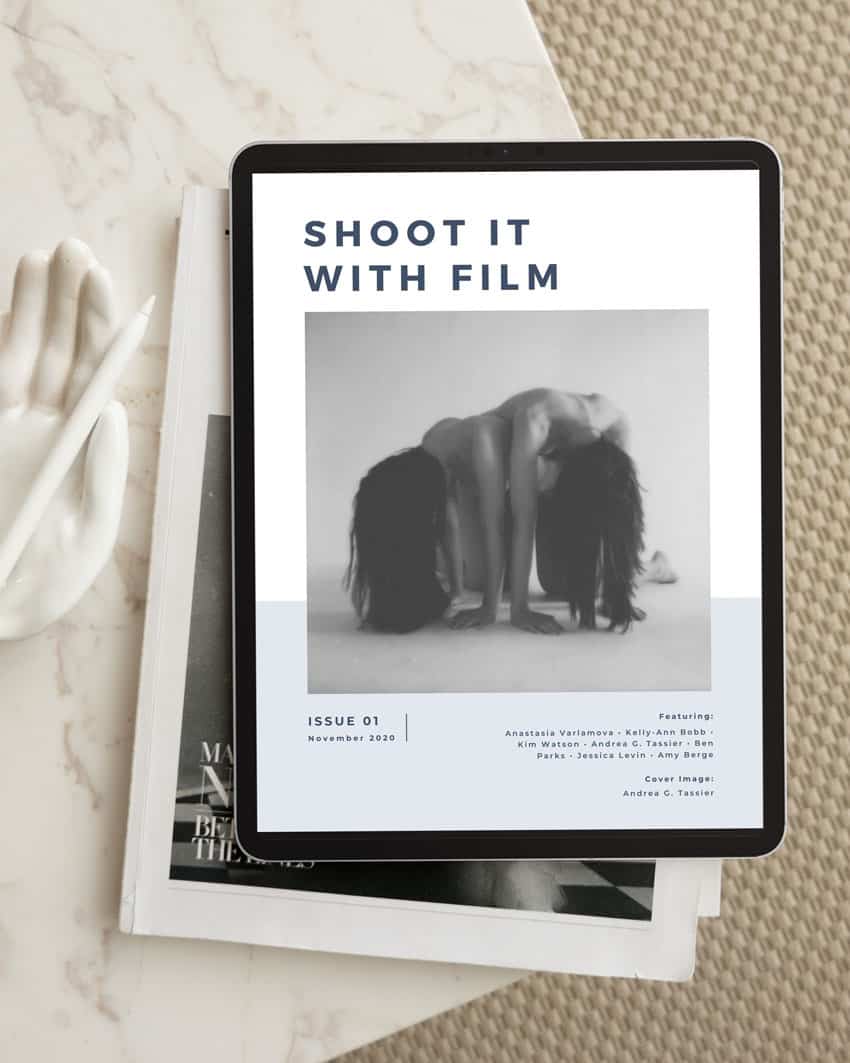
Related Posts:

Drew Evans is a cityscape and landscape film photographer and a regular contributor for Shoot It With Film. Find his other articles here , such as Lecia M6 35mm Camera Review and 6 Tips for Buying and Shooting the Leica M6 .
Blog Comments
February 18, 2022 at 10:49 am
Nice tips! One side info: The classic M6 also indicates if you have half stop over or underexposure by reducing the glow of the arrows. If its fully lit, you are under or overexpsoing by at least one stop, if its half strength its half a stop 🙂
Johnny Martyr
February 18, 2022 at 10:59 am
That’s a good point about the LED brightness – same goes for the M6 TTL.
February 18, 2022 at 4:30 pm
Didn’t know that the LED brightness was an indicator! Great fact to keep in mind as I’m out and about next.
February 18, 2022 at 11:12 am
Cool rundown on some major topics for a new Leica shooter. The viewfinder selection and loading tips I found most important.
A couple other buying points that I think are important:
–Viewfinder magnification affects not only the framelines but how accurate the EBL is and therefore, those who shoot with faster lenses may want to consider a higher magnification finder also.
–M6 and M6 TTL have a flaring problem of the RF patch that can cause it to completely white out in some lighting conditions. I would recommend buying one that’s been upgraded to correct this or factoring in the upgrade cost with the purchase of the camera.
–Don’t store an M6 in anything like a fitted case, in a humid climate as this can cause the zinc top plate to oxidize.
–There are common reports of some M6’s and M6 TTL’s draining battery prematurely if they are not switched to the off or B position while put into a case. Apparently the shutter release can be pressed unintentionally and cause the meter to come on if the shutter dial is left in other positions. I also don’t use a soft shutter release for this reason. And if you do have a battery drain issue, you can use one 3 volt lithium battery instead of the common two 1.5 volt batteries to extend time between changes.
These are wonderful cameras and deserve more informative articles like yours, thanks for sharing.
February 18, 2022 at 4:33 pm
Thanks Johnny – fantastic points to add. My M6 definitely has been prone to flaring at certain times, though it’s never been too bad. I did have a battery drain issue when I was using a soft shutter, so I’ve stopped using it since.
I’ve also suggestions that you shouldn’t store them in a humidity-controlled dry cabinet. Do you know much about that? I have one and have been storing all of my cameras there, but don’t want to pass around incorrect info about that.
February 19, 2022 at 3:30 pm
The flaring is worst with the higher magnification finders and of course comes down to a lot of personal use/preference. I had my .85x TTL upgraded and really enjoy the difference. But it may not be necessary for a .72 or a less picky shooter!
The battery drain thing has never happened with me but I’m also of the mindset, after losing several expensive soft releases, that those things are a big of a joke anyway!
Yes, you’re absolutely right about humidity concerns although I think putting an M6 in a dry cabinet is rather extreme and probably not good for the cloth shutter. I didn’t bring this up because I think it’s a bit of an overblown topic. But the zinc used in the top plate can oxidize, not only if left in a humid climate but additionally if stored in the original fitted case. Apparently a nasty chemical reaction between the zinc and material that the case was made of can occur IF the air is also humid. So you sometimes will see M6’s for sale with a type of “acne” on them as a result of this.
I live on the East Coast in a moderately humid area and keep my cameras in a glass and wood China cabinet beside a curtained window. This allows some veiled sunlight to prevent mold or oxidation and allows me to see all my options easily before a shoot. I have traveled to the Dominican Republic with my M6 multiple times for week+ stays and experienced no issues with oxidation in that humidity. I’m lead to believe that this issue is caused more by lack of use and improper storage than something that the average photographer should worry about. It is often cited by brass-enthusiasts as a reason that the M6 is inferior to previous and newer M’s. But in all reality, zinc is much harder than brass and will not dent when dropped or hit, so it is much better at protecting the delicate rangefinder mechanism and electronics than brass.
Philip Thomas
October 14, 2022 at 10:53 am
Drew- great points, writing, and fabulous photography.
John Garner
January 16, 2023 at 11:06 pm
I live in Florida and I have not had any problems with our infamous humidity with any of my “M’s” film or digital (m3 (ds, ss), M6, M9, M9M, but I keep them in a dry storage space when not in use. The most critical issue I have experienced is the the traveling slit curtains will come out of sync as the shutter speed changes over time (non-digital). A quality “Cla” usually fixes the problem. If you are a first time owner of a Leica M, I would highly suggest the 50mm f2.0 Summicon as your first lens. It’s small, light, fast and sharp as a tack. Also, I would not recommend modern optics as the older “M’s” cannot compensate and high priced when compared to older generations . Another thing, practice loading with a bad roll of film as there some differences in the various models. Once learned, you can load in the dark. The digital M’s are different and have their own uniqueness between the models. John
Leave a Comment Cancel Comment
Shoot it with film on instagram.

Leica releases limited 'Safari' edition M10-P camera, Summicron-M 50mm F2 lens
Leica has announced the launch of a limited edition Leica M10-P Edition 'Safari' camera and accompanying Summicron-M 50mm F2 Edition 'Safari' lens.
The launch of the limited edition pieces continues Leica's tradition of olive green camera releases. In Leica's own words, 'Leica cameras with the olive green enamel finish were originally designed and created for hard-wearing military use, as they were seen as robust and reliable tools that consistently delivered under extreme conditions.'

The Leica M10-P Edition 'Safari' is identical to its less colorful counterpart in terms of specs and includes a full-grain cowhide leather carrying strap as well as a matching leather case for memory cards and credit cards, both of which were designed to 'complement the unique aesthetic of the limited edition camera.'

The Leica Summicron-M 50mm F2 Edition 'Safari' lens is the first time a Leica M lens will be available in the olive green finish. Aside from the new color, the limited edition lens features a distance scale and focal length engravings that are hand-filled with red paint to 'contrast to the other bright white engravings on the lens.' Like the camera, this lens is identical to its black and silver counterparts.

Interestingly, the camera and lens are being sold separately with no option of getting them together as a kit. Leica says the M10-P Edition 'Safari' camera body is available today for $8,450 in a limited run of 1,500 units while the matching lens will be available on February 15, 2019 for $2,750 in a run of just 500 units. Both the camera body and lens are available for pre-order at B&H.
Leica Camera Continues a Longstanding Tradition with the Leica M10-P and Leica Summicron-M 50 mm f/2 “Safari” Limited Editions
The first-ever release of a Leica M-Lens in the olive green coloring accompanies the fifth iteration of “Safari” camera offerings
January 31, 2019 – The launch of the limited Leica M10-P Edition “Safari” camera and Leica Summicron-M 50 mm f/2 Edition “Safari” lens reopens a beloved chapter in Leica Camera’s ongoing tradition of special olive green camera releases. Dating back nearly 60 years, the eye-catching finish has recurred throughout the brand’s rich history, making each rare piece highly sought after among Leica collectors and enthusiasts alike. Leica carries forth this tradition with the new limited edition camera body and limited edition lens in the olive green enamel finish, which when paired together, create the perfect symbiosis of functionality, design and history.
Leica cameras with the olive green enamel finish were originally designed and created for hard-wearing military use, as they were seen as robust and reliable tools that consistently delivered under extreme conditions. The rugged aesthetic of the Leica M1 “Olive” for the German armed forces, made in 1960, proved to be a great success from its onset. The subsequent olive green Leica M3 and M4 cameras were also created exclusively for the rigors of military use in the field, however, in response to rising popularity and increasing demand, in 1977 the olive green Leica R3 “Safari” camera became the first of its ilk to be created for sale to the general public. As popularity grew and the legacy carried on over the years, Leica Camera launched the M6 TTL “Safari” in 2000, the M8.2 “Safari” in 2008 and, most recently in 2015, the M-P (Typ 240) “Safari.” Each piece, a significant highlight in Leica’s historic lineage and timeline of milestones.
Today, Leica continues the tradition of these unique and storied cameras with the Leica M10-P Edition “Safari”, a modern take on the olive green finish, at its core containing the same performance and technical capabilities of the standard Leica M10-P and its industry-leading quiet mechanical shutter. The limited edition camera is accompanied by a leather carrying strap as well as a matching leather case for SD memory cards and credit cards. Both accessories are crafted from brandy-colored, genuine full-grain cowhide and complement the unique aesthetic of the limited edition camera, of which there are only 1,500 units available worldwide.
For the first time in Leica’s history, a Leica M-Lens will be available in the legendary olive green finish. The matching Leica Summicron-M 50 mm f/2 Edition “Safari” will be offered separately from the camera, with only 500 units being made available. In addition to the special enamel finish, the Leica Summicron-M 50 mm f/2 Edition “Safari” is distinguished by its distance scale and focal length engravings, which are precisely engraved and carefully hand-filled in red paint – in contrast to the other bright white engravings on the lens. The technical specifications and optical performance are identical to those of the well-regarded production model, though the artful coloring and compact design of this high-performance standard lens makes it an attractive addition to any photographer’s set of Leica M equipment.
Every bit of visible metal components of the Leica M10-P Edition “Safari” and the Leica Summicron-M 50 mm f/2 Edition “Safari” lens are crafted from solid brass. The premium enamel finish in olive green makes the camera and lens resistant to finger marks and scratches, providing enduring protection against external elements such as solvents, chemicals and UV light to ensure a long-lasting look that can stand the test of time and transcend generations, just as its forebears before it.
The Leica M10-P Edition “Safari” camera body is available for sale today for $8,450. The Leica Summicron-M 50 mm f/2 Edition “Safari” premium lens will be available starting February 15th for $2,750. Both camera and lens are sold separately at Leica Stores, Boutiques and Dealers.
"... ensure a long-lasting look that can stand the test of time and transcend generations, just as its forebears before it" - sure it will make a good mantle piece because unlike its mechanical predecessor the the electronic including the sensor will be obsoleted in a couple of years - heck you can't even buy battery for it in a few years.
Ooooohhh the Leicanistas can dress up in their safari outfits complete with pith helmet and march around Manhattan taking pictures of the wildlife. It will make a nice fashion accessory.
I was about to write something along the lines of "lovely camera, can't afford it".
However, the white buttons on an olive green camera look weird and why is the lens run even more limited than the camera?
Eh, I'll rather take the regular black version.
Wait, I can't afford that either. Never mind.
You are lucky. Everyone who walks around with a leica of this sort is laughed at. It's like driving around in a porsche carrera GT , everyone in the know.. knows it looks ok but has terrible handling, or all the peeps who used to have a porshe 924 an object of ridicule, nothing else
There's also a group that believe a mass-made leica is a "good investment" ... not
The only time I've handled a Porsche was in Need for Speed 5: Porsche Unleashed. If I remember correctly, Carrera GT was indeed a challenge to master but the good feeling of beating the top par time was worth it.
I guess Leica is something similar. It's not the plastic fantastic uber-automatic electronic droid that will fix for you whatever mess you make of the exposure or other tech aspects. It's for those who enjoy the delicate style of work with this machine.
I do like the top DSLRs or MILCs stuffed to the brink with technology, automation and customization for some uses, but sometimes I also like to have fun with a rather simple viewfinder camera, or work with a manual focusing SLR or rangefinder and see the sharp image pop up. And Leica knows how to make their lenses provide uniquely looking images too.
Bargain. I'll have two.
Well, it's not the $8000 50mm f/2.0 APO Leica M lens which is included (and painted) with the body.
That's the older, pre-APO Summicron as far as I understand it.
This makes no sense at all unless you intend to be a one lens Leica user. Why would I be tempted to buy that body when I have four silver lenses? And why would anyone buy a green lens if they have one of the two standard bodies? It is stupid. Leica are not at all focused, they are all over the place, just like Apple is under Tim Cook. There may be some justification (but not much) for the odd tweak but it seems to my suspicious mind that Leica are plain greedy, always looking for another way to sting the customer. I am not interested in tweaks, I want IMPROVEMENTS. A silent 8,000 shutter, a 37, even 48 megapixel sensor, get some genius to figure out image stabilisation and autofocus built into the body. Hell, at the prices they charge and the glacial speed of progress that shouldn’t be impossible.
Leica is not in the business of pleasing photographers but in the business of making money so they can pay their employees and shareholders, and they are pretty good at that. No doubt in my mind that these 1500 bodies and 500 lenses will sell and so will the next special edition.
Peta will sue them...
Because 50mm is the best focal length for safari?
havent you seen HCB's safari contact sheets?
Nothing like being two steps forward and back from a lion for that perfect shot.
Supply and demand. Leica is not into mass production so the supply is limited. Also the demand is high, so the price is high. Kind of like diamonds, who would have thought people would pay so much for a tiny rocks. This particular model is seen as an investment by a few with deep pockets and deprized by many who secretly if they could buy one.
green on the verge of gray
Since DPR did not go to the trouble, I did. The body is $455 more expensive than the ordinary model, and the lens $355.
it does give insight into leicas mindset
Olive green paint is expensive
Its like Louis Vuitton, overpriced, you pay for the name.
No, actually with Leica you pay for the lenses' high optical quality.
But right, this isn't one of Leica's best 50mm lenses.
Then some people pay since this is the only digital rangefinder available new in 2019.
You don't seem to know much about cameras.
love em or hate em , leica has 2 earned bragging points
as raw pointed out........" the only digital rangefinder available new in 2019."
and secondly , the only poshly built high end camera bodies around,... fuji seemed like they were gonna g there in the beginning with x100 and x10\20\30
but were uneven and inconsistent .... and im fujis biggest fan ....or was... they broke my heart with the xe3
damn, I meant to say "early 2019", in case some other party has woken up to the potential market for digital M rangefinder bodies, the way Epson started to.
If Leica is that good why isn't at the top of the ranks in best camara or lenses in 2018 ????
A year is a long time; this might be interesting (depending on the sensor). https://pixii.fr/
martuyn: Why isn't Mozart in the top 20? Or why isn't Dickens a best seller? Or why isn't Shakespeare on Broadway? They can't be that good, right?
For 2018, 2017, 2016, etc, Leica's best lenses, and its just excellent lenses (all ofwhich don't cover all focal lengths) are ranked best.
The Leica Q, which has one of Leica's just excellent lenses, 3 full years after its release continues to embarrass the Sony competition (the Sony RX1RII) for optical quality, and a number of other stills' camera features. And it's not like the Sony has a bad lens.
You don't seem to know much about lenses.
I'm gonna eat my hat if I'll get to see any other decent *) digital rangefinder camera besides Leica.
*) decent = an actual optical rangefinder, not some hybrid nonsense or some crap with no LCD screen. Although I'll probably eat a bug if one of those comes along too.
Seriously what's the big deal? Is a rangefinder really that much more complex than a DSLR that nobody else is able to do that? Rangefinders used to be dime a dozen up to the 70's or so. Hell it could be a decent enough business plan to get a hold of old Kyocera, Yashica or whatever rangefinder cameras on ebay, refurbish them, stick whatever cheapest FF sensor, LCD and processor in it and there you go.
hybrids dont exist ... fuji has a switchable optical VIEWFINDER and evf which is excellent for framing for thosee who lean toward that preference
fujis so called hybrid ovf evf is one of the truly great and original advances in camera design in the modern era
it is far from nonsense
Epson made one. It was a Bessa body. I've read a rumor that Casio was involved.
For the era it was more than decent. It wasn't full framed. Nor was the M8. The Epson was much quieter, since the "film advance" lever was used to reset the shutter.
And Epson was ahead of Leica in the digital rangefinder market by 3 or 4 years.
https://en.wikipedia.org/wiki/Epson_R-D1
Cosinaphile: Fuji has its own thing, but it's not a rangefinder so it doesn't apply in a discussion about rangefinder cameras.
Something similar was pitched a few years ago. It was supposed to be an M-mount "rangefinder" but not really a rangefinder because the focusing window was a LCD screen. So again not a true optical rangefinder. That's what I refer to as hybrid nonsense.
HowaboutRAW: Yes I know about the Epson. It's 15 years old at this point and APS-C so it really makes no sense to acquire today tho (unless someone is really desperate). It's exactly my point tho - if Epson could do it, why can't someone else? I'm pretty sure film rangefinders are still being made by Zeiss and Bessa. Even on the level of the Epson, which was kinda quirky (manually cocked shutter), it would make sense today with a modern, FF sensor.
In fact the Epson wasn't even expensive, the price was on the level of Canon 20D which had a comparable sensor.
ok..... understood
afa the epson id always wished they evolved toward ff sensor
sony sells an electronically complex fully computerized ff body for 800 usd
so the potential for adapting a simplified bessa with a ff sensor is concept that could have been an affordable alternative to leica was allowed to die .... like most bold experiments , such as 1inch sensor cellphones it was abandoned before its time and before it could fully reach its audience
No, the Epson was something like 2200usd. And the Canon you cite was say 1400usd.
I'm pretty sure the Bessa and Zeiss 35mm film rangefinders were discontinued a few years ago. Zeiss and Voightlander still make M lenses.
Here in Europe, as I remember it anyway, both the Epson and the 20D were around 2000 Euros equivalent in 2004/5. Okay maybe it was something like 1800/2200 or so, but it wasn't a massive difference.
I don't know if it was just a prestige thing and Epson was actually losing money on it; the whole market was rather tiny at the time and Epson had no way to get money from lenses so it's possible.
Regardless, I'd bet a FF variant could probably be produced for under 3000 €/$ today with some profit and it would fly off the shelves.
I think any full framed version of a digital M rangefinder would need a curved microlens array in the sensor plane. And that would add significantly to the cost.
Ideally yes but Sony users have been pretty happy with Leica lenses for years now so I think a lower-cost FF rangefinder would still be a successful product.
I mean it's not like 35mm rangefinder lenses are generally well known for corner-to-corner performance, that's not what they are made and use for.
In any case it's wishful thinking. Leica is the only camera maker willing to give us a digital rangefinder, just like they are the only camera maker willing to give us a B&W camera (yes I know there are MF offerings, don't split hairs).
How come the others don't see the value in niche markets is beyond me. I guess a $3000 m43 camera, a FF camera with smaller than APS-C video crop or a 3000mm ultrazoom make more sense?
Well, maybe in 5 years when the camera market shrinks so much that everyone will be just fighting for scraps.
But film is much better at registering light hitting it at an angle than digital sensors are.
Nor is it simply about sharpness in the corners; the problem is the corners get darker (vignette).
Now true, the problems are mostly with M lenses 35mm and wider.
APSH would likely be a decent compromise, and the sensor wouldn't have to be made in pieces, so that saves cost.
Someone may finally work out a curved sensor, but I think that's going take a different approach to work best.
Some Sigma cameras can do true B&W.
I don't know why no company besides Leica is shipping a digital M--even just APSC.
I see Ms more frequently than I see Fuji mirrorless on the streets of my city. I see one Fuji a week, and 2 Leicas. Of course it can't be 20 degrees Fahrenheit. Then the cameras are under heavy coats.
Is it really limited if there's a new cosmetic variant each month?
Finally, a somewhat legit point about Leica limited editions.
If there's a hardware change, that's real. Example when Leica released an M variation sans a rear screen as limited edition.
Right, now it's a standard variation of the M10.
It has zero practical value. It's all about milking collectors. How many people just collect Leica and never take pictures? 90%? (They do make really good hardware though)
dan_darkroom:
"How many people just collect Leica and never take pictures? 90%?"
You'd have point if you limited the comment to special edition Leicas.
I see Leicas in use all the time on the streets of my city.
I wonder how many Leica collectors really are there that this business makes any sense.
I'm beginning to think, maybe people buy Leica to make actual photographs. For real, if someone is on the verge of dropping the cash for a Leica, well an olive green variant actually might be something they are looking for to make the plunge.
Smart of them to sell the body alone, otherwise you end up with a bunch of duplicate kit lenses which don't fetch much on eBay. /s
Say what you want, that olive drab, silver, white and red color scheme looks amazing, especially the lens.
I agree, but I kind of wish they used more of the camouflage colors. Like dark tan body with slightly darker olive green pleather.
"Say what you want, that olive drab, silver, white and red color scheme looks amazing, especially on Christmas"
Fixed that for you.
Tical gets a lump of coal for his comment.
if leica made variants ,in grey tan sand brown even white , and kept the price constant , it would just be cool and interesting , instead of a seeming like a money grabbing con
This is more like buying jewelry. Not much to do with camera. I remember a gold-plated Leica with croc leather
Green colour choice is kinda refreshing, especially for such a high end camera and lens. Even a very traditional company like Leica can think outside of the box.
This is not the first "military" color camera.
@doady... "Green colour choice is kinda refreshing, especially for such a high end camera and lens."
What's "high end" about it except the logo and the price?
This isn't a particularly high end lens from Leica; it's just very good.
The high end version is something like $8000.
No I meant... what's "high end" about Leica at all? The only high is from those who buy it and the company that profits from selling an inferior product packaged as an exclusive. For an outsider (I the canon, nikon, fuji, pentax, sony, hassy and mamiya owner)... it is all quite entertaining.
I wonder how many of the fanboys posting have ever handled a leica, let alone an m10. I have, a friend of mine has the 2017. The ergonomics are terrible, truly and the image quality is the same as with the canon and sony gear. The very slight difference in color and micro contrast, sometimes in favor of the canon, are easily leveled out in post. There is nothing that merits the price.. Go on.. put your hands on it and try to shoot some shots and tell me otherwise lol
The high end part of Leica is the best lenses; this is not one.
The ergonomics of the M10 are quite good, and the image quality (which is far more a lens thing than sensor-body thing) is excellent provided better, not the best, Leica lenses are used.
The M10, with the best M lenses, and shot below ISO 8000, easily betters anything from Canikon, unless you're using Zeiss Otus and some Milvus lenses.
Some Pentax APSC lenses of fixed focal length are very good.
I think we can agree that the rangefinder optical assembly is pretty high end.
Lenses may be debatable but I'd say they almost justify their prices too.
I had an excellent Konica RF M mount rangefinder. Film.
Together a decent 50mm f2.0 and body the total US retail prices was $1100.
And there have been other non-Leica film M mount rangefinders.
I know that. In fact it's what we were debating in another thread.
Heck I have a teeny tiny Olympus XA rangefinder. It's kind of pathetic but still a rangefinder.
However, today, in the world where EVF is cheaper to make than a DSLR OVF, such technology has apparently been forgotten and Leica is the only player left in town.
It's also without debate that their stuff has been regarded as high-end for decades since they hand-make everything.
And while I've never owned a Leica, their lenses really to tend to have certain quality that I appreciate in images. I've only seen similar style in some Sigma lenses.
It's difficult to understand why a camera/lens is worth more money because of its colour. These products are exactly the same as those already on the shelves, available to purchase at much lower prices. They are good products, and being the only digital rangefinders in the world, totally own that market.
The problem is just that by changing the colour of the kit, or by limiting the quantity produced, the value of the camera changes. Most of us value the camera & lens by how they enable our work. Those buyers willing to spend £2000 more because of the colour of the camera are probably not fully engaged in their photography. But that’s OK, whatever floats your boat….
These products ard definitely not for the working photographers. However, people who buy them are not necessarily non photographers too.
Good to be able to buy it when money does not matter. There is always value to be different.
"It's difficult to understand why a camera/lens is worth more money because of its colour."
"The problem is just that by changing the colour of the kit, or by limiting the quantity produced, the value of the camera changes."
Sounds like you understand it just fine. :-D
Scarcity is what gives something value. I've known people who sunk hundreds of dollars into an online game just so they can be among the few with the pink colored cow. When you think about how easy it is for the game developers to make a cow pink instead of brown, it sounds silly to charge for it, but make it a rare item, and suddenly people fall all over themselves and go to ridiculous lengths to get one.
I don't see anything wrong with it. We choose the color of our clothes, glasses, cars, phones, the paint on our walls... What's wrong with picking the color of a camera?
It's not like other camera makers don't provide the option between black and silver on many of their models.
As for paying more... Well again, metallic paint on a car or some fancy wall paint isn't free either. And an olive green camera actually looks good I think. When I was getting Nikon 1 gear, I really wanted the olive green S1. Guess what, it was the most expensive one to get. (Eventually I didn't but I'm really cheap/poor.)
Expensive toys for over privileged boys. On the other hand, Leica lenses are fantastic - on a sony A7 body that is!
Wide M lenses don't work particularly well on A7 or A9 bodies.
They work quite nicely on the SL body though. Right, neither the SL nor the A7/9 is a rangefinder.
agree. Quite a few Leica lenses were made by Minolta (a/o the 16mm), later (present day) by Panasonic
overprivileged some. some hard working and well deserving.
There's no question that this lens is made in Europe by Leica, it's just not one of the best Leica M lenses.
$450 on top of the $8,000? That's a deal breaker!!! Wait ... They are not including the lens for free? Dayum. They are a bit stingy.
Perhaps they should call it "The Rommel Edition".
That should add more collectors value to the limited edition.
For the millionth time: "A camera is just a tool" "Leica's cost too much" "People who buy them are stupid" year after year, over and over WHY?
If a person can afford one and desires the camera I don’t see a problem why not enjoy
Agree. No need to re-state snooty criticisms again and again.
For the millionth time:
The colour of the camera doesn't matter.
PostModernBloke:
For the 200,000th time, Leica has been doing limited edition M bodies since at least the 1980s.
Leica M3 'Royal Dutch Marine' Model, 1966
According to Leicashop® auction references, this camera type was delivered to the Royal Dutch Marine (to 'Odin' on January 17th, 1966) with special mount for submarine periscopes, metal front-cap from Leitz, wooden-box marked 'Koninklijke Marine 1966' on the rear, very rare military camera by Leica. The price for this rare piece of Leica Military-spec body has an indicative auction buy-now price of EURO 1,500-00 a few years ago
Leica IIIF – Kältefest 100 Leica IIIF were manufactured for arctic expeditions of the Swedish Army in 1956. These winterized cameras have a black enamel finish and are extremely collectible and expensive. The engravings are filled with white paint. Serial numbers range between 822 901 and 823 000.
Not sure if you are trolling the post or the post's comments.
"Leica cameras with the olive green enamel finish were originally designed and created for hard-wearing military use, as they were seen as robust and reliable tools that consistently delivered under extreme conditions."
So, rather than "Safari", wouldn't this more accurately be called the "Wehrmacht" edition?!
Or even the "N..." No, I won't go there!
I would like to see a fire engine red version... no I am not bring cynical
The "Post Box" edition?
I would love to know what countries these end up in. Saudi? Probably not as it isn't gold plated. The US? More likely as you could use it to take a stealthy photo of Trump at a rally. The EU? Probably not as the rich will be scheming to make money from the Brexit debacle and have little time to buy trinkets like this. Where do you think they will end up and why?
In a glass case somewhere... Perhaps a better question is how many of them will actually be used to take photographs with?
That’s a lot of money for a Panasonic camera.
This is not a rebadged Panasonic.
Panasonic makes camera’s and the electronics for Leica digital camera’s.
“Based on this agreement, Panasonic will be able to commercialize digital camera products with Leica lenses over the next five years, from October 2014 to September 2019 while Leica will be able through the expansion and strengthening of technological cooperation to utilize Panasonic's digital technology in its own product development. The agreement will allow both companies to boost product competitiveness by combining Leica's optical technology and Panasonic's digital technology.”
“Alfred Schopf, Chief Executive Officer of Leica Camera, said: "The signing of this agreement is significant for Leica as we seek further growth in the digital imaging sector. Strengthening our cooperative relationship with Panasonic is essential to Leica's continued growth."”
https://news.panasonic.com/global/topics/2014/29096.html
That agreement applies fully to the D-LUX/LX100, partially to the Q, but not the M rangefinders. It also obviously applies to the L-Mount cameras.
I guess you missed this part,
“while Leica will be able through the expansion and strengthening of technological cooperation to utilize Panasonic's digital technology in its own product development.”
They can use Panasonic parts in any of their camera’s including the M10 on up. The M9 used a sensor made by Kodak. The agreement let’s Leica, clearly as they stated, can use Panasonic’s digital technology (parts) in their own separate product development.
Do you have evidence of which Panasonic parts are being used in the M10? Which Panasonic parts are we even talking about? There is a big difference between using some parts and being Panasonic camera.
The more Panasonic parts the better. It isn't as if Leica is an electronics company.
No, but reading that Leica clearly stated that they will “utilize” Panasonic’s technology in their own camera lines as per agreement why wouldn’t they? It’s the logical thing to do as Leica needs all the help they can get. Who else is going to make the technology for them? Unless you can prove otherwise?
*US military, I guess. :D
I understand that these special edition Leicas are expensive and limited enough that they are likely bought as social status indicators that sit conspicuously on a shelf as part of decor as much as practical photography tools.
That said (or just supposed), is there any actual data on who actually buys them and how they get used? Are they collectors' items that get more valuable with age if they are still in untouched condition like comics?
I'm curious about who this market/demographic is and if Leica actually sells out of all their limited editions, or if there is a warehouse full of expensive kits that just gets repainted and remarketed over and over again. Maybe a good story idea?
They primarily are purchased by wealthy Saudis. I remember visiting the home of one and they had a walk in closet filled with limited edition Leicas, regular leicas going back decades, lenses and accessories. They sit behind glass in a sealed chamber purged and filled with pure Argon to insure no corrosion, there are alarms that would go off in the event of a pressure drop. I was amazed.
That is a deal. After all, a strap and 2 matching cases are included. And they are CRAFTED from brandy-coloured, genuine full grain cowhide. Not made of leather ! That explains the high price ;-)
I understand that the lens in the safari set has a special coating made from unicorn tears and after that it is placed in a room purged with mermaid farts to get the coating to adhere.
unfortunately coating advancements and special environments for their deposition are as likely to be attributed to the study of flatology and humanoid aquatic criptids fused with lacrimation of mythological beasts as the source called reversed alien technology
im confident neither source helps leica make their wares magically priced
the answer , i suspect lies entirely in the realm of human psychology
Well that certainly leverages my synergies with a blue sky approach in an incremental matrix kind of way.
Sadly these will mainly set in boxes unused. I don't really understand buying something like this just to have it and not use it. To me tools are made to be used. I beat the crap out of my cameras. My Fuji XE1 is covered with scratches and show wear. Dropped the zoom for it too and now the UV filter is jammed on. Why buy camera stuff if you are worried about resale value. Cameras are for taking photos, not obsessing over. https://www.flickr.com/photos/10025089@N05/ I think that the most beautiful Leica ever is the one that was owned by Jim Marshall; https://www.google.com/search?q=jim+marshall+leica+m4&source=lnms&tbm=isch&sa=X&ved=0ahUKEwiGk5v3v53gAhVPMawKHVWfCWk4ChD8BQgPKAI&biw=1920&bih=1058#imgrc=hTtdqZJPcHQ7qM:
If lots of people buy expensive items like these to leave on shelves it certainly provides evidence for advocates of a more equitable sharing of wealth.
Remind me not to buy any used gear from you LOL
If you want to read a real horror story check out my post on DPR from a while ago. I spilled beer (a high ABV stout sadly) on my Fuji Pro2 and destroyed it. https://www.dpreview.com/forums/post/62046041
if you can afford to buy a zagudo edition for a display cabinet for 21000
then you can buy a garden edition m10 to beat the s#!+ out of .....lol
xpro2 \beer?.................... OUCH , I FEEL your pain
For sure nobody was buying Fuji XE1 to store on shelves :)
Re Jim Marshall's used and abused camera...don't give Leica any ideas. Next they will come out with one with a 'distressed' look, like fake antique furniture. As much as I respect Leica's history, it sure seems they've gone beyond silly.
Regarding the red letters on the lens, is it just me or are they kind of hard to read?
Wtold Press Photo winner (multiple times) war photographer Jan Grarup actually shoots Leica (and other beautiful cameras). He does actually have one in safari-green - not an M10 though.
He is a general nice and down to earth person. And into aesthetics;-)
https://www.instagram.com/p/BijgLajhN0q/?utm_source=ig_share_sheet&igshid=1ujbipeqpq7pl
@JPatrck: "Re Jim Marshall's used and abused camera...don't give Leica any ideas. Next they will come out with one with a 'distressed' look, like fake antique furniture."
You are late, they've alredy done that: google "Leica Lenny Kravitz special edition".
Yay, new color
Love it! Don’t have the money to buy one!
People rag on Leica but they are damn fine cameras.
Are they worth the money? I think if I had that amount to spend freely I’d buy one in heartbeat. They feel amazing in the hand, there isn’t another camera that feels like a Leica when shooting with it. They produce amazing images, their jpeg engine is better than the big 4. It’s like the difference between a Bentley and a Cadillac.
I pretty much disagree with all that you say. I don't know about the jpeg engine though, and don't shoot jpegs. In my hands they feel awkward and slow. So there is nothing like it I guess, but that's not a positive selling point. Clearly nearly every other manufacture departed from similar designs decades ago...for good reasons. Ms lack many features that I appreciate in other cameras. And the sensor and performance is not state of the art. Maybe a 1960 Bentley.
They "lack many features that I appreciate...." So people shouldn't buy Leica's even if they want to because of their spurious reasoning?
Yes, people can buy a Leica even if they agree that it has an outdated sensor, lacks many features, and underperforms other cameras that cost far less. But I would not recommend this camera to anyone based on my experience and knowledge.
Obviously some like the way it feels in their hand too. I don't like the way it feels in my hand nor much about how it works.
The design and features of the M only appeal to a relatively small group. If there was anything special about this, other companies would copy it... which they did back in the 20s-50s. The industry moved on long ago leaving this as an anachronism... the removable baseplate clearly confirms that as the intention of the design. Leica's other cameras don't follow much of the M design either.
Some say the rangefinder is great for street photography and recommend you need to learn how to prefocus to shoot even moderately quickly. This is 2019 when other cameras can track an eyeball!
I, for one, find it quite pretty. A year ago I was able to play a bit with a friend's M one evening. Absolutely loved the pictures that came out. But I have to say that manual focus isn't really for me anymore, even with that excellent rangefinder. While it is said to be a brilliant walk-around camera for street photography, at least I would miss too many spontaneous shots because of slow focusing on my part.
Don't sell yourself short. . . I think that that you could learn to pre-focus the rangefinder like many other Leica M street photographers.
Waiting for a Hello Kitty Special edition Leica.
Thanks for making me laughing so hard :D
http://leicaphilia.com/the-leica-m6-hello-kitty-shooter/
https://www.kpraslowicz.com/2010/08/19/hello-kitty-leicas-movies
hello kitty leica apparently was used in scenes for 3 films, all removed from final cut but this may be parody
Indeed. A Pink Dot is long overdue.
Leica are like the weather. They don't listen to criticism. They just do what ever they Leica. I like that.
So every time Leica want some more money they release a "limited edition" camera in a silly colour and because they only make a few of them they become "collectable" because of their engineered rarity. They then hold their price making investors happy and creating more demand for "limited edition" models and keeping Leica in the black to create cameras for people that actually go out shooting. If any.
Nice work if you can get it.
Green Leicas keep us out of trouble. We’d be talking smack about some other dumb s-hit.
So 1,000 people are going to pay $8,500 for a specially-colored camera and then be forced to use a color-dissonant lens? Leica is a harsh mistress.
A1000 ? My guess is around 15 . Releasing of special additions becomes not so special any more
They have chosen approx. Pantone PMS 5615 for the colour of the kit; pity, it looks more like M*A*S*H kinda military olive green, not safari colour at all. if they had chosen more warmer savannah late spring safari colour Pantone PMS 5777, I might have bought one.
With leopard spots?
M a s h would be something I’d find innovative
Those colors actually check out. You sir need to get a hobby, maybe try yoga.
I agree, the military color does not match the safari name.
https://hiconsumption.com/2014/11/leica-m4-2-safari-prototype/
40yrs ago this green[appx] was safari
I notice that the lenses are green too, while the press release above claims they'd never offered green lenses before. Not that I care any, it's a hideous colour.
@ cosinaphile I like the look of the original green, but that new color with the silver buttons and levers does not appeal to me.
Nice camera, nice colour. Buy one, keep it sealed and unused for 10-15 and make some profit for a resale. Better than current interest rates on your money.
That's the spirit.
... includes a full-grain cowhide leather carrying strap as well as a matching leather case for memory cards and CREDITS CARDS....
... a credit card case is a nice add-on :-)
Hopefully there is a separate pocket for the card(s) you maxed out to get this kit.
Sorry landscaper, but most people who buy this have 6 digit limits on their credit cards.
All zoos around the world better get ready! Leica shooters are coming, baby!
Green is nice but I'd wait for the pink one. Now I hope that the pink camera won't be much more expensive than the green camera.
Pink camo Hello Kitty special edition would definitely attract some attention.
How does painting a camera make it more "robust". I do like Leica gear reading about their silly releases for the wealthy. Btw, I hate the green!
Perhaps this is the stuff the German military paint their tanks with?
Even if it is, it doesn't answer my question.
Tanks are unlikely to be painted with the same finish as the average camera. I imagine they'd have some sort of tough enamel paint job, or maybe I underestimate the robustness of cameras generally? I'm rather careful with mine!
You need to be more specific in your posts! Camera or tank??? ;)
@ Barry I think the answer is that they're collector's items. They're trading on their past.
Came here for the comments, and was quite bored. (Never liked the green Leicas, btw, but it's just a personal taste)
Makes me miss the time when you could get a Pentax K-50 in a 120 different colour variations: http://www.ricoh-imaging.co.jp/english/products/k-50/color/img/bod_img_01.jpg Judging from what is on ebay, pink was very popular.
Pretty much the best camera ever made. Pentax, bring back the pink cameras!
Was waiting for this one. I've fed up with Rhinos charging me when I'm trying to use a silver or black camera. This one will help me blend into the background.
I agree, you'll be practically invisible with this camera. And with that 50mm lens, you can photograph a charging rhino from a safe distance. ;)
Wait till I post my Leica photos from my elephant hunt ... this green version is fabulous.
Just make sure you get your order in early so you can get the matching lens. Rhinos have extremely poor eyesight but you can never be too careful...
Shouldn't there alao be a slightly reddish version for the Namib? :)
That would be the diamond-encrusted Namib red colored version.
Of course they are being sold separately. If it was bundled it would be a kit lens!
You may also like
Latest sample galleries.

Latest in-depth reviews

Fujifilm has announced the X-T50, a mid-range 40MP APS-C mirrorless camera that gains image stabilization, subject recognition AF and a host of high-res video features.

The Fujifilm X100VI is the sixth iteration of Fujifilm's classically-styled large sensor compact. A 40MP X-Trans sensor, in-body stabilization and 6.2K video are the major updates, but do they make the camera better?

The Panasonic Lumix S5II launched the second generation of Panasonic’s full-frame mirrorless camera system and was the first Panasonic to feature phase detect autofocus. As our review reveals, it’s a heck of an all-around camera for both still and video shooters.

The latest Lumix puts a Four Thirds sensor in a full-frame body with boosted AF and a wealth of stills and video capabilities to create a Swiss Army Knife of a Micro Four Thirds camera.

The fourth camera in Leica's SL series of full-frame mirrorless cameras sees the 60MP BSI sensor from the Q3 and M11 models arrive with a significant interface redesign.
Latest buying guides

What’s the best camera for around $2000? This price point gives you access to some of the most all-round capable cameras available. Excellent image quality, powerful autofocus and great looking video are the least you can expect. We've picked the models that really stand out.

What's the best camera for travel? Good travel cameras should be small, versatile, and offer good image quality. In this buying guide we've rounded-up several great cameras for travel and recommended the best.

If you want a compact camera that produces great quality photos without the hassle of changing lenses, there are plenty of choices available for every budget. Read on to find out which portable enthusiast compacts are our favorites.

'What's the best mirrorless camera?' We're glad you asked.

Above $2500 cameras tend to become increasingly specialized, making it difficult to select a 'best' option. We case our eye over the options costing more than $2500 but less than $4000, to find the best all-rounder.

We got a chance to take Fujifilm's new premium kit zoom to Stockholm, to get a sense of how it looks on a 40MP sensor.

Leaping lemurs and enchanting baobab trees, nature photographer Erez Marom takes us through the national parks of Madagascar.

On this day in history, in the year 2000, Canon's EOS D30 became the first-ever multi-megapixel CMOS sensor used in a production camera. It also helped usher in the then-new era of 'prosumer' cameras.

Sigma has announced an updated 24-70mm F2.8 as part of its Art series of lenses. The 24-70mm F2.8 DG DN II

Fujifilm has replaced one of our favorite kit zooms with the XF16-50mm F2.8-4.8 R LM WR, a wider, lighter but less bright premium kit lens.

Fujifilm has announced the GFX 100S II, an upgraded version of its more compact, affordable 100MP medium format mirrorless camera, with a better viewfinder and upgraded capabilities.

Fujifilm has announced the GF 500mm F5.6 R LM OIS WR, a relatively compact super-telephoto prime for its GFX medium format system.

Fujifilm has joined C2PA and CAI, the two groups leading efforts to add cryptographic proof of authenticity to photos.
![leica m6 safari Canon announces EOS R1 development [Updated]](https://1.img-dpreview.com/files/p/E~C148x0S888x888T72x72~articles/0785314321/Canon_EOS_R1_with_lens.jpeg)
Canon has announced it is developing (and is currently testing) the EOS R1, the "first flagship model for [the] EOS R system."

In late February, Sigma announced the 15mm F1.4 DG DN Diagonal Fisheye lens, and we put it into the hands of a professional astrophotographer for a shoot in the Canadian sub-arctic. Check out his gallery and see how it performs under the night sky.

With retro-inspired design, China-based upstart Thypoch is hoping to catch eyes with its pair of lenses for Z, X, E and RF mounts.

Announced in April, the $340 16mm lens joins the collection of 24mm, 35mm and 55mm lenses that came before it.
The Pixel 8a is the newest member of Google's Pixel 8 smartphone family. It uses the same cameras as its predecessor, the Pixel 7a, but gets the more powerful processor and features found in the Pixel 8 and 8 Pro. We took it for a spin to see how it performs.

Every week, we ask newsletter subscribers a question about gear, creativity or life. This week, feeling nostalgic over our past 25 years, we want to ask about the one that got away, or rather, the one that you let get away.

This year is DPReview's 25th anniversary. Naturally, we've been thinking a lot about cameras from the past quarter century and even beyond. The current DPReview editors reminisced about what cameras got them started in photography. For good measure, we also looked to the archives to compile some former DPReview editors' historical answers.

When shooting landscapes, it's easy to chase classic scenes involving bold sunrises and moody clouds. In this article, we explore an alternative approach that looks beyond sweeping vistas to focus on smaller moments that are less likely to be replicated by other photographers.

At its "Let Loose" event on Tuesday, Apple introduced new iPad Pros with OLED displays, a pro-oriented camera app for shooting video, an updated version of Final Cut Pro for iPad and more.
The Pixel 8a uses the same sensors as its predecessor but with the Tensor G3 processor and features from the more expensive Pixel 8.

Hasselblad has announced the XCD 25mm F2.5, an ultra-wideangle lens for its X-system cameras.

Viltrox has formally announced the release of its AF 16mm F1.8 Z lens, a fast, wide autofocus prime lens for full-frame Z-mount cameras. It joins the lineup next to Viltrox's existing AF 16mm F1.8 lens for Sony E-mount.

In the process of reviewing the X100VI, the reviewer found himself pondering whether it could be even better if it did less.

We've been pretty busy testing cameras over the past few weeks. Here's a quick roundup of video test reels we've shot recently for those who may have missed them.

Updates from Fujifilm, Nikon, Sony and Panasonic help expand their cameras' capabilities.

In honor of World Migratory Bird Day, we want to see your best bird photos. It's going to get stork raving mad, but moving with no egrets to present your im-peck-able best would be eggcellent.

We paired the Viltrox AF 40mm F2.5 with a Nikon Z7 and took photos from rain-soaked Seattle to the high desert of central Oregon. Check out our sample gallery to see how this inexpensive lens performed.

Every week, we ask newsletter subscribers a question about gear, creativity or life. This week we looked back in time to ponder which classic cameras are overdue for a comeback.

Peakto Search, a new plug-in for Lightroom Classic on macOS, uses AI tech to index your photos so you can perform searches across one or more catalogs using descriptive text prompts or visual similarity to other images.

In part two of his photography tour of Madagascar, landscape photographer Erez Marom introduces us to the visually stunning Red Tsingy.
- Gear Patrol
- Work for us
- Advertise with us
- Feedback / Contact us
- Camera reviews
- Lens reviews
- Printer reviews
- Buying guides
- Sample images
- Editorial enquiries
- Camera search
- Camera comparison
- Lens search
- Product timeline
- Browse all products
- Community Guidelines
- My Settings
- My GearList
3 new Leicas coming next year, to ring in the Leica M's 70th birthday
Leica M turns 70 next year, and the company is expected to announce 3 new cameras in new colors

Three brand new Leica cameras are expected to be released next year – so if you've been looking at the German camera manufacturer and thinking it would be nice to own one, you might want to hold off for now.
Rumors have started circulating that the red dot camera company will be making big announcements in 2023, when it celebrates 70 years of producing the Leica M – arguably the best Leica camera system.
• Leica M cameras deserve the best Leica M lenses – here are the ones to add to your wish list
The latest rumblings come from Leica Rumors. As with all rumors we have to take these with a pinch of salt, but we have to say that the leaks regarding Leica bringing back the Leica M6 were certainly true – so there could be some fire with this smoke…
The breakdown
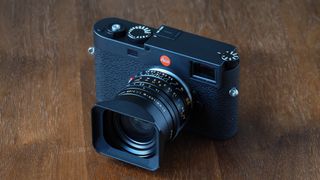
New Monochrom
According to the rumors, Leica is planning on releasing the next generation of Leica M cameras. This would make sense if the "next generation" were referring to the Monochrom line and a new Leica M11 Monochrom camera – which wasn't reported, but would make sense seeing as the Leica M10 Monochrom is now 3 years old. I can't, however, see Leica producing the M12 so soon after the M11 launch (the camera is a year old already – doesn't time fly!).
Change in film camera lineup
Get the Digital Camera World Newsletter
The best camera deals, reviews, product advice, and unmissable photography news, direct to your inbox!
We must also consider if Leica will continue with its Leica M-P series of film cameras, now that the re-release of the Leica M6 has proved so popular. Is it really worth having two M bodies that shoot film, both having light meters? Others might disagree, but my own speculation is that Leica will drop the M-P and keep the existing film cameras as the M6 and the wonderful Leica M-A .
Colors everywhere
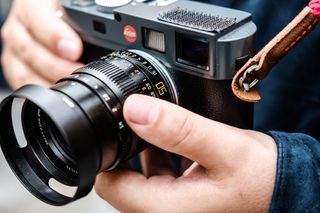
It has been rumored for some time that Leica could introduce more color options in addition to the standard black, silver, or black paint variants on its current M cameras.
If rumors are to be believed, then these colorways will also include an option for a color that has never been used on a Leica before. This does sound quite interesting, as I know Leica has the Safari and Reporter colorways of dark olive green, and it has even used a stunning Frankfurt Blue, so I will be very interested to see what color it goes with. Maybe a steel grey or a sunburst gold, like the old Fujifilm TX-1 ?
Old dog, new tricks?
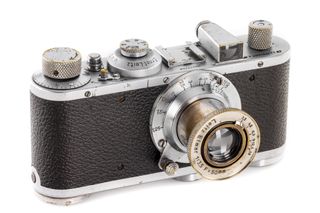
With the 70th year of the M system approaching in 2024, there have been suggestions that due to the legacy of the M-mount lenses, Leica might be looking at producing pre-M style bodies – but will reconstruct them with the M-mount.
This sounds quite a farfetched idea, as it would have to significantly redesign the pre-M bodies to accommodate the M-mount – and are they really going to have the same feel as a true Leica II? I don't think so, but I have been wrong before.
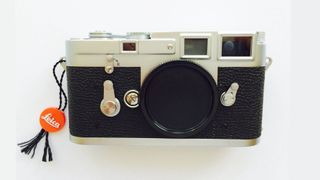
New Leica M3
What I could see happening is Leica reproducing the Leica M3. In fact, it wasn't so long ago that Leica was still making the M3 from new old parts, and also reconditioning used M3s for owners.
One has even turned up on eBay that was completely rebuilt by Leica in 2013, and by the look of it Leica still has parts to keep these awesome film cameras going. So will we see a new Leica M3 at the 70-year milestone? Who knows – but I am sure we weren't expecting to see a new Leica M6, either, yet here it is.
While all these rumors need to be digested cautiously, we know that Leica will produce something special for the 70th year of the M system like it has done time and again – much like the 100 Jahre edition cameras that were produced to celebrate 100 years of Leica. So some of these rumors are very logical, while some are not very practical… we'll have to see what happens in 2024!
If this article has been of interest why not check out our review of the Leica M11 . If black-and-white is your thing, then take a look at our Leica M10 Monochrom review . If you still love shooting film we would suggest checking out our Leica M-A review , or if you want the best point-and-shoot camera then take a look at our Leica Q2 Reporter review .
Thank you for reading 5 articles this month* Join now for unlimited access
Enjoy your first month for just £1 / $1 / €1
*Read 5 free articles per month without a subscription
Join now for unlimited access
Try first month for just £1 / $1 / €1

For nearly two decades Sebastian's work has been published internationally. Originally specializing in Equestrianism, his visuals have been used by the leading names in the equestrian industry such as The Fédération Equestre Internationale (FEI), The Jockey Club, Horse & Hound, and many more for various advertising campaigns, books, and pre/post-event highlights.
He is a Fellow of The Royal Society of Arts, holds a Foundation Degree in Equitation Science, and is a Master of Arts in Publishing. He is a member of Nikon NPS and has been a Nikon user since the film days using a Nikon F5 and saw the digital transition with Nikon's D series cameras and is still to this day the youngest member to be elected into BEWA, The British Equestrian Writers' Association.
He is familiar with and shows great interest in street, medium, and large format photography with products by Leica, Phase One, Hasselblad, Alpa, and Sinar. Sebastian has also used many cinema cameras from the likes of Sony, RED, ARRI, and everything in between. He now spends his spare time using his trusted Leica M-E or Leica M2 shooting Street photography or general life as he sees it, usually in Black and White.
The Unique Burial of a Child of Early Scythian Time at the Cemetery of Saryg-Bulun (Tuva)
<< Previous page
Pages: 379-406
In 1988, the Tuvan Archaeological Expedition (led by M. E. Kilunovskaya and V. A. Semenov) discovered a unique burial of the early Iron Age at Saryg-Bulun in Central Tuva. There are two burial mounds of the Aldy-Bel culture dated by 7th century BC. Within the barrows, which adjoined one another, forming a figure-of-eight, there were discovered 7 burials, from which a representative collection of artifacts was recovered. Burial 5 was the most unique, it was found in a coffin made of a larch trunk, with a tightly closed lid. Due to the preservative properties of larch and lack of air access, the coffin contained a well-preserved mummy of a child with an accompanying set of grave goods. The interred individual retained the skin on his face and had a leather headdress painted with red pigment and a coat, sewn from jerboa fur. The coat was belted with a leather belt with bronze ornaments and buckles. Besides that, a leather quiver with arrows with the shafts decorated with painted ornaments, fully preserved battle pick and a bow were buried in the coffin. Unexpectedly, the full-genomic analysis, showed that the individual was female. This fact opens a new aspect in the study of the social history of the Scythian society and perhaps brings us back to the myth of the Amazons, discussed by Herodotus. Of course, this discovery is unique in its preservation for the Scythian culture of Tuva and requires careful study and conservation.
Keywords: Tuva, Early Iron Age, early Scythian period, Aldy-Bel culture, barrow, burial in the coffin, mummy, full genome sequencing, aDNA
Information about authors: Marina Kilunovskaya (Saint Petersburg, Russian Federation). Candidate of Historical Sciences. Institute for the History of Material Culture of the Russian Academy of Sciences. Dvortsovaya Emb., 18, Saint Petersburg, 191186, Russian Federation E-mail: [email protected] Vladimir Semenov (Saint Petersburg, Russian Federation). Candidate of Historical Sciences. Institute for the History of Material Culture of the Russian Academy of Sciences. Dvortsovaya Emb., 18, Saint Petersburg, 191186, Russian Federation E-mail: [email protected] Varvara Busova (Moscow, Russian Federation). (Saint Petersburg, Russian Federation). Institute for the History of Material Culture of the Russian Academy of Sciences. Dvortsovaya Emb., 18, Saint Petersburg, 191186, Russian Federation E-mail: [email protected] Kharis Mustafin (Moscow, Russian Federation). Candidate of Technical Sciences. Moscow Institute of Physics and Technology. Institutsky Lane, 9, Dolgoprudny, 141701, Moscow Oblast, Russian Federation E-mail: [email protected] Irina Alborova (Moscow, Russian Federation). Candidate of Biological Sciences. Moscow Institute of Physics and Technology. Institutsky Lane, 9, Dolgoprudny, 141701, Moscow Oblast, Russian Federation E-mail: [email protected] Alina Matzvai (Moscow, Russian Federation). Moscow Institute of Physics and Technology. Institutsky Lane, 9, Dolgoprudny, 141701, Moscow Oblast, Russian Federation E-mail: [email protected]
Shopping Cart Items: 0 Cart Total: 0,00 € place your order
Price pdf version
student - 2,75 € individual - 3,00 € institutional - 7,00 €

Copyright В© 1999-2022. Stratum Publishing House

IMAGES
VIDEO
COMMENTS
2000 - M6 TTL Safari Green. After Leica announced their black paint Millenium M6, a special order was placed by a Hong Kong dealer for 300 green paint cameras. The Rewind know shaped as on the M3/M2/M1. Product Code: 10478 Body . 2000 - M6 TTL NSH.
2000 - Leica M6 TTL Safari Green. After Leica announced their black paint Millenium M6, a special order was placed by a Hong Kong dealer for 300 green paint cameras. The Rewind know shaped as on the M3/M2/M1. Model no: 10 478 Body Only 300 pieces were made comparing to the 2,000 pieces of the M6 TTL Black Paint Millennium. Leica M6 TTL Safari ...
Leica M6 - an icon of analog photography. The legendary Leica M6 is an icon. Intuitive, compact, and discreet, it allows you to get up close to the action - and to real emotions. Since 1984, it has been the camera of choice for many of the world's best photographers, who have used it to create countless iconic images.
Leica M6 in 'Safari' Very pleased with how this homage to Leica's 'Safari' colour-way has turned out. It's been stripped down, had its surfaces reconditioned to eliminate zinc-pest, customised, and cured.
Leica M6 TTL Green Millenium . ... By the way, this camera is usually called the "M6 Safari" or simply "Green M6." Though not officially known as the "Green M6 Millenium," that is exactly what it is. Only 300 were made, compared to 2000 of the black paint Millenium. Besides the usual serial number, this accessory also proclaims "172-300" -- or ...
It will also come at a hefty price at $5,295 body-only, and its release on November 3 may also spur a surge in original Leica M6 cameras changing hands on the second-hand market. If you're ...
Among Leica's rangefinder cameras, the Leica M6 has a very special role to play: From 1984 to 2002, it was manufactured almost 175,000 times and served the best photographers as an instrument to capture their view of the world. This resulted in numerous pictures which today represent a piece of contemporary history. Still handmade in Germany ...
The Leica M6 from 2022 relies on a modern version of the Leica M rangefinder with a 0.72x magnification. Furthermore, all of its optical surfaces are now coated and thus less sensitive to stray light. The light meter in the latest M6 now shows the correct exposure via a red dot in addition to the two arrow symbols originally used. Additionally ...
A camera that needs no introduction, the Leica M6 was originally released in 1984 and would go on to become an icon of photographic history. Manufactured until 2002 and subsequently replaced by the M7 and MP, the M6's simplicity, toughness, meticulous craftsmanship, and a most intuitive operation allowed it to outlive its successors and remain the golden child of the film photography era.
Leica M6 Write your story Material number. 10557. Color. black. Find a store. Technical Data Image. Leica M6 Designation: Leica M6: Camera type: Analogue rangefinder system camera (35 mm) Type No. 2248: Order No. Black: 10 557: Material: Closed full metal housing, Top cover and bottom cover: brass, black finish:
LEICA M6 SAFARI green colored Rangefinder Camera Model, 2002. Leica possibly with request of their far east distributor, Schmidt Group has launched 300 units of this LEICA M6 0.85X TTL Safari in 2000. The camera body was painted with military green, same as the decorated leather. Shown here was two units of those, an interesting thing is, the ...
The LEICA M6 and M6 TTL are completely compatible with all LEICA M lenses ever made, and with a simple adapter, even with LEICA screw-mount lenses made since 1930. The only gotchas are the usual: it won't meter with HOLOGON 15mm f8, SUPER-ANGULON 21mm f/4 or f/3.4, or the ELMARIT-M 28mm f/2.8 up to serial number 2314921. These lenses focus and ...
EM. July 31, 2021. The Leica M6 — also commonly known as the Leica M6 Classic or Leica M6 Non-TTL — is a 35mm film rangefinder camera designed and manufactured by Leica in Germany between 1984 and 1998. The camera was the successor to the Leica M4-P, which was produced concurrently for the first two years of the M6's 12 year production.
Ignoring the limited edition versions or colors Leica made over the years, there are two main options for the Leica M6: the M6 and the M6 TTL (find on eBay). Aside from the additional TTL flash capability and the different light meter look (see below), there is only one main difference between these two models: the shutter speed knob.
This updated M6 features some technology from Leica's MP film camera, but stays true to the M6 design. It features the anti-glare MP-Style 0.72x viewfinder from the MP and features a solid brass construction with an LED light meter, center dot and battery warning light.
The Leica M6 from 2022 relies on a modern version of the Leica M rangefinder with a 0.72x magnification. It's also equipped with a battery warning indicator and the top cover has also been redesigned, now being milled from solid brass and enhanced with an abrasion-resistant lacquer, replacing to previous version's die-cast zinc. ...
Leica M6 Millenium 2001 Safari Green Paint Bottom Plate ..... MINT. Opens in a new window or tab. $1,350.00. kevincameras-hk (8,061) 100%. or Best Offer. Free shipping. from Hong Kong. Orginal Parts Safari Shade Hood for Lens Leica Summicron R 2/50mm. Opens in a new window or tab. Pre-Owned.
As popularity grew and the legacy carried on over the years, Leica Camera launched the M6 TTL "Safari" in 2000, the M8.2 "Safari" in 2008 and, most recently in 2015, the M-P (Typ 240) "Safari." Each piece, a significant highlight in Leica's historic lineage and timeline of milestones.
According to the rumors, Leica is planning on releasing the next generation of Leica M cameras. This would make sense if the "next generation" were referring to the Monochrom line and a new Leica M11 Monochrom camera - which wasn't reported, but would make sense seeing as the Leica M10 Monochrom is now 3 years old. I can't, however, see Leica producing the M12 so soon after the M11 launch ...
In 1938, it was granted town status. [citation needed]Administrative and municipal status. Within the framework of administrative divisions, it is incorporated as Elektrostal City Under Oblast Jurisdiction—an administrative unit with the status equal to that of the districts. As a municipal division, Elektrostal City Under Oblast Jurisdiction is incorporated as Elektrostal Urban Okrug.
Burial 5 was the most unique, it was found in a coffin made of a larch trunk, with a tightly closed lid. Due to the preservative properties of larch and lack of air access, the coffin contained a well-preserved mummy of a child with an accompanying set of grave goods. The interred individual retained the skin on his face and had a leather ...
Moscow Oblast (Russian: Московская область, romanized: Moskovskaya oblast, IPA: [mɐˈskofskəjə ˈobləsʲtʲ], informally known as Подмосковье, Podmoskovye, IPA: [pədmɐˈskovʲjə]) is a federal subject of Russia (an oblast).With a population of 8,524,665 (2021 Census) living in an area of 44,300 square kilometers (17,100 sq mi), it is one of the most densely ...
Elektrostal , lit: Electric and Сталь , lit: Steel) is a city in Moscow Oblast, Russia, located 58 kilometers east of Moscow. Population: 155,196 ; 146,294 ...